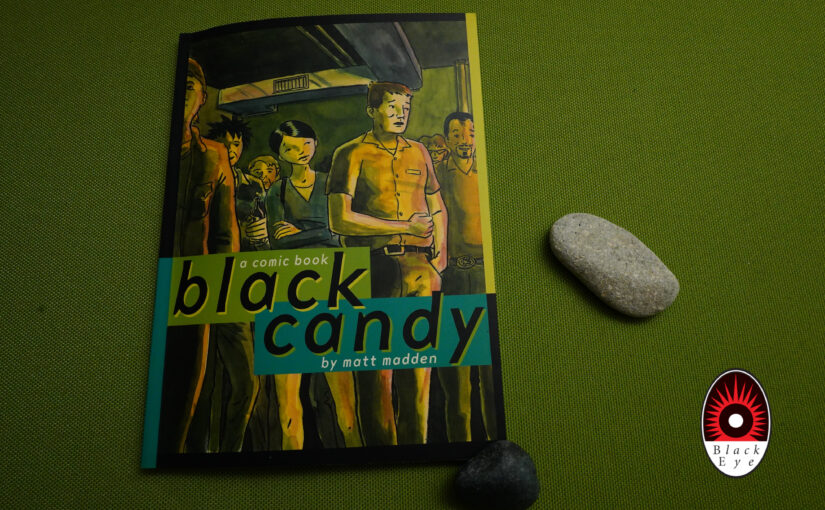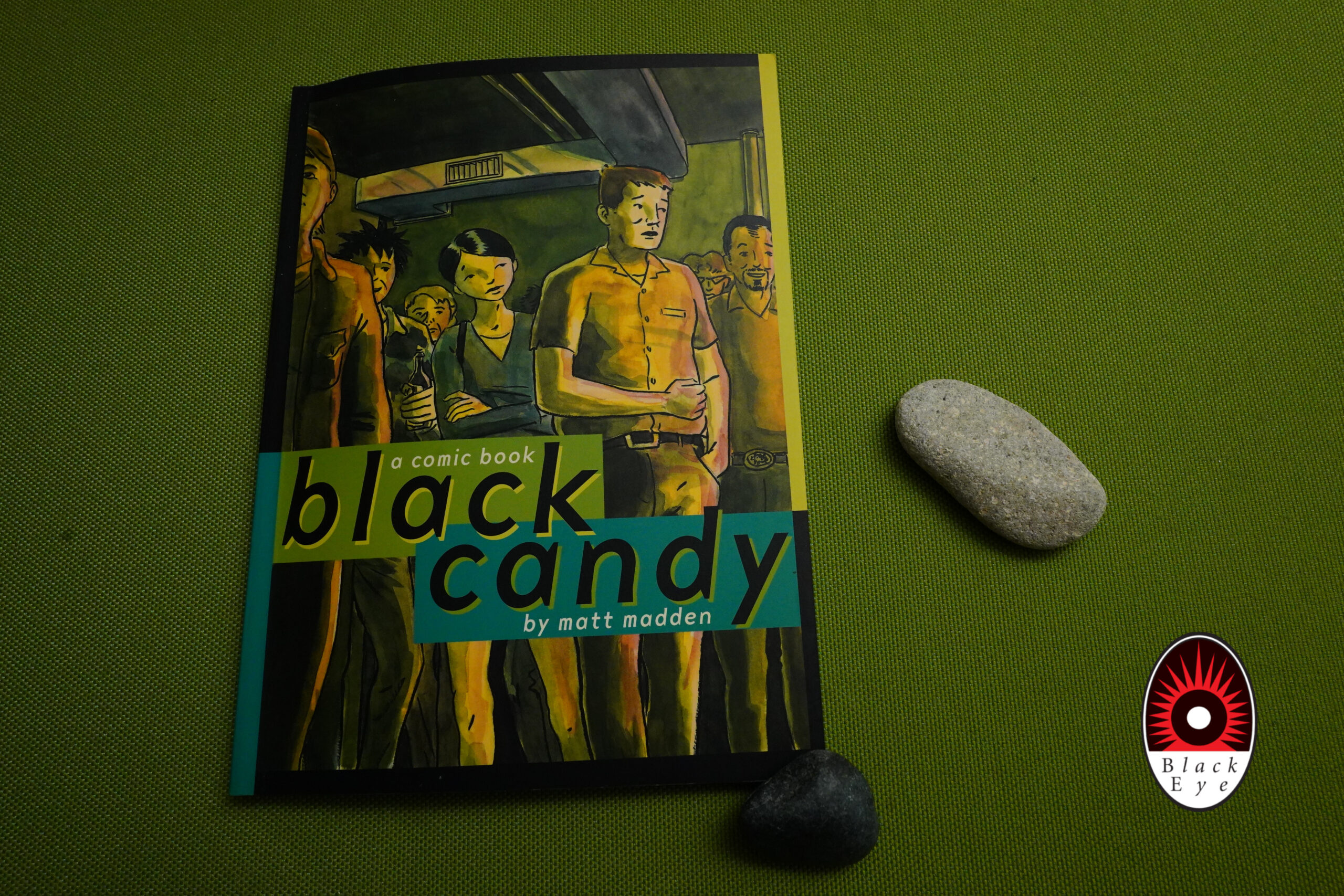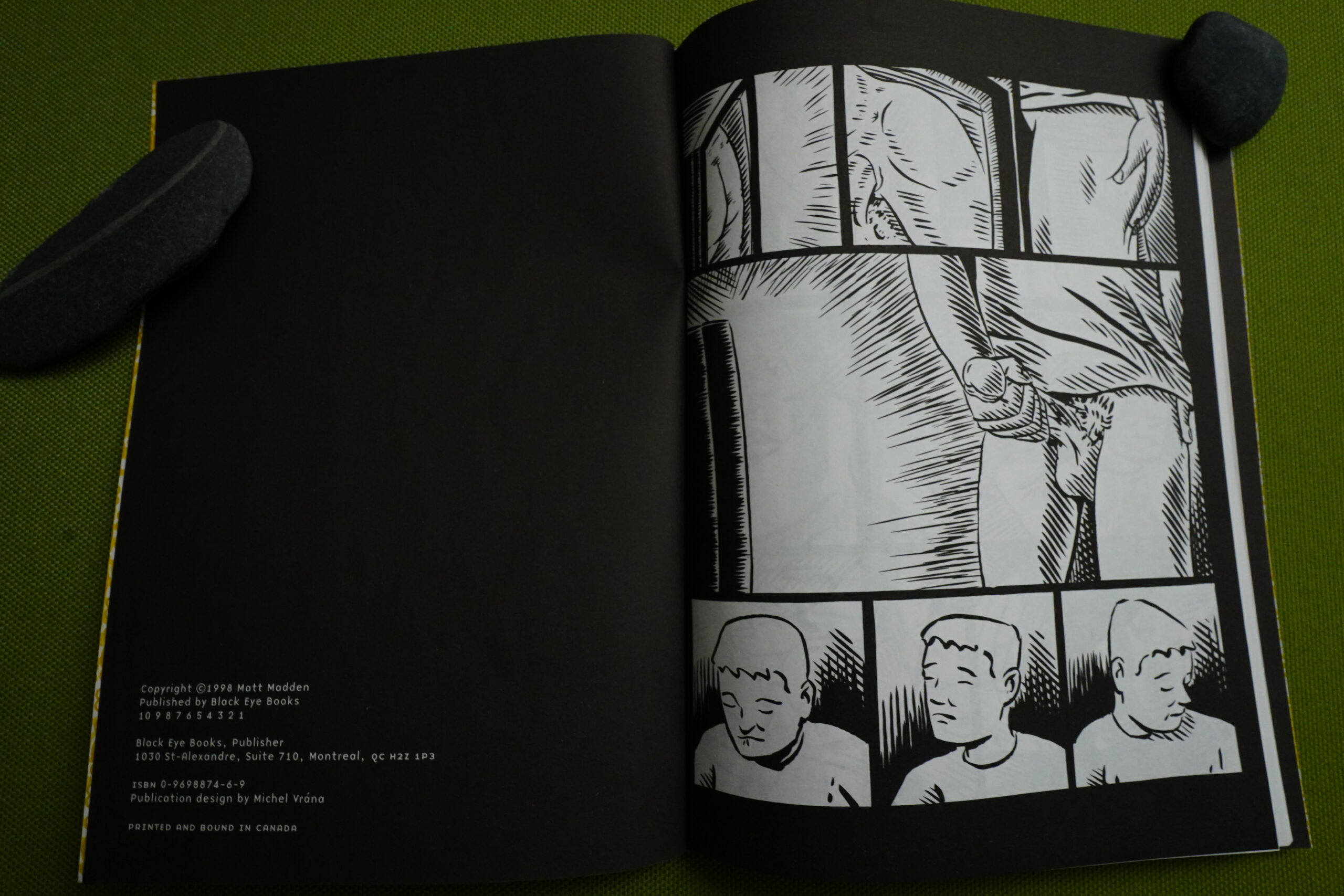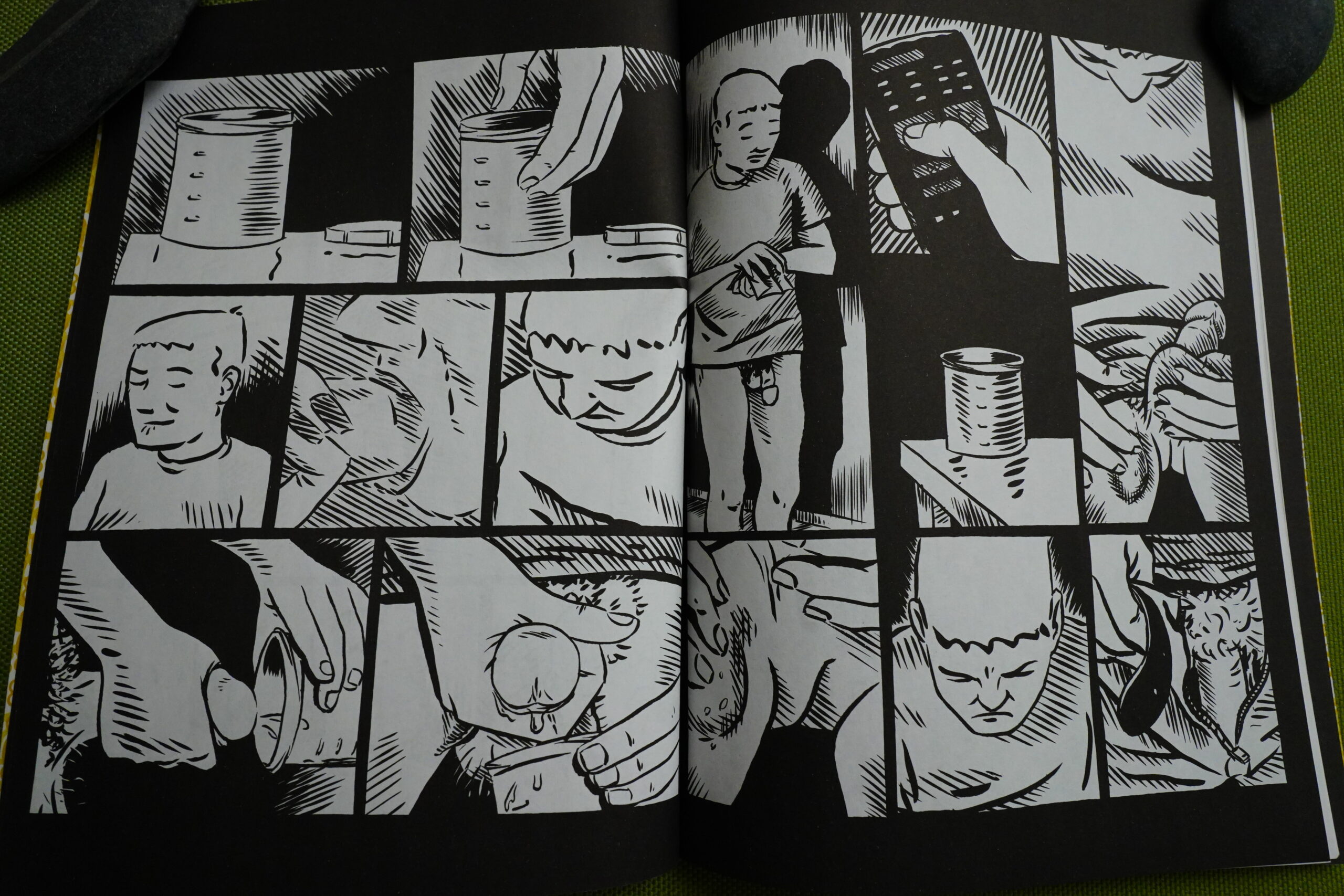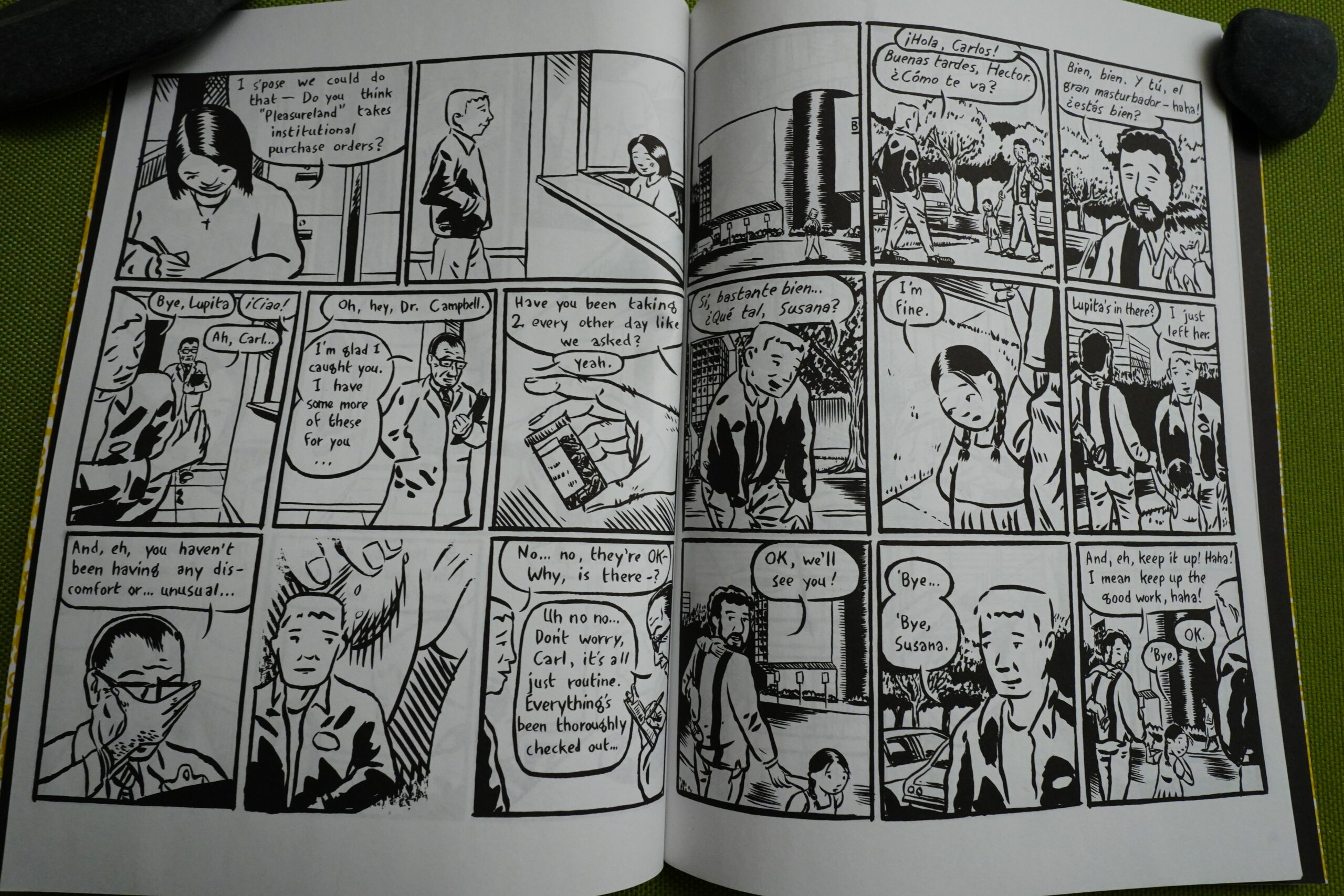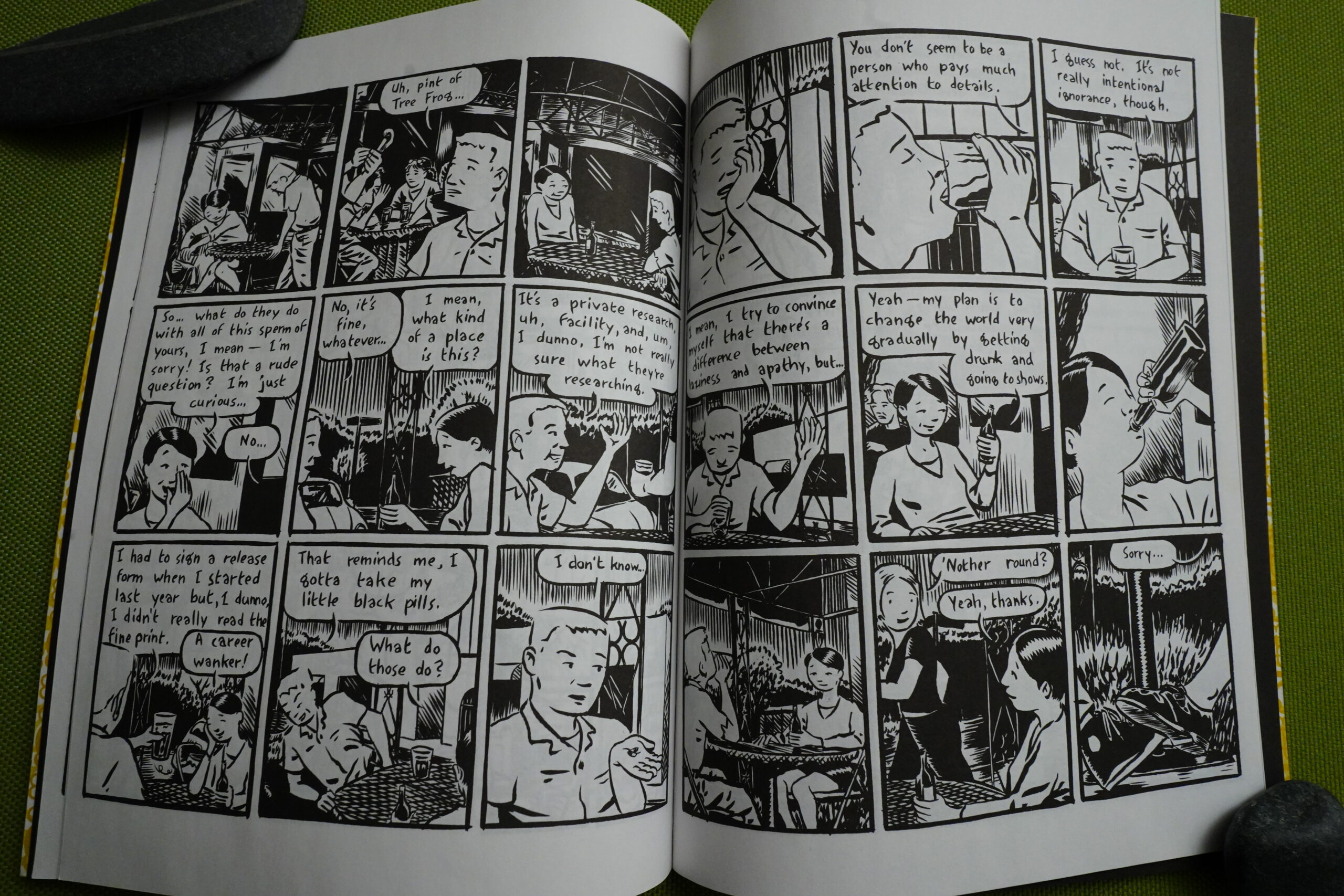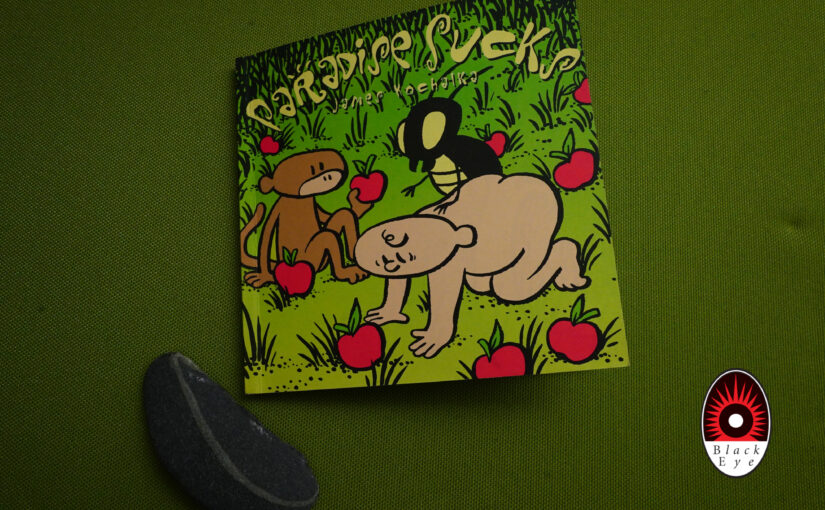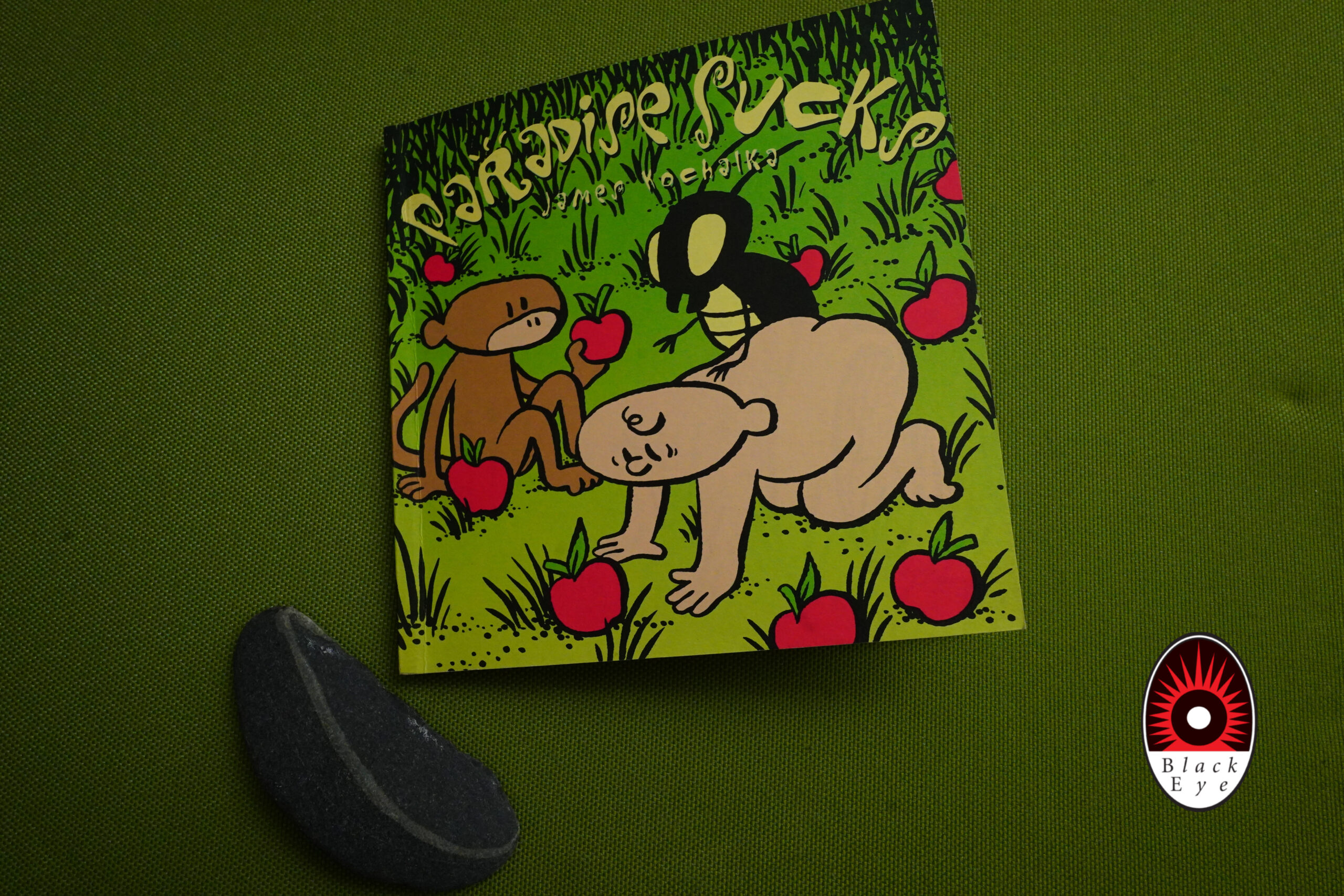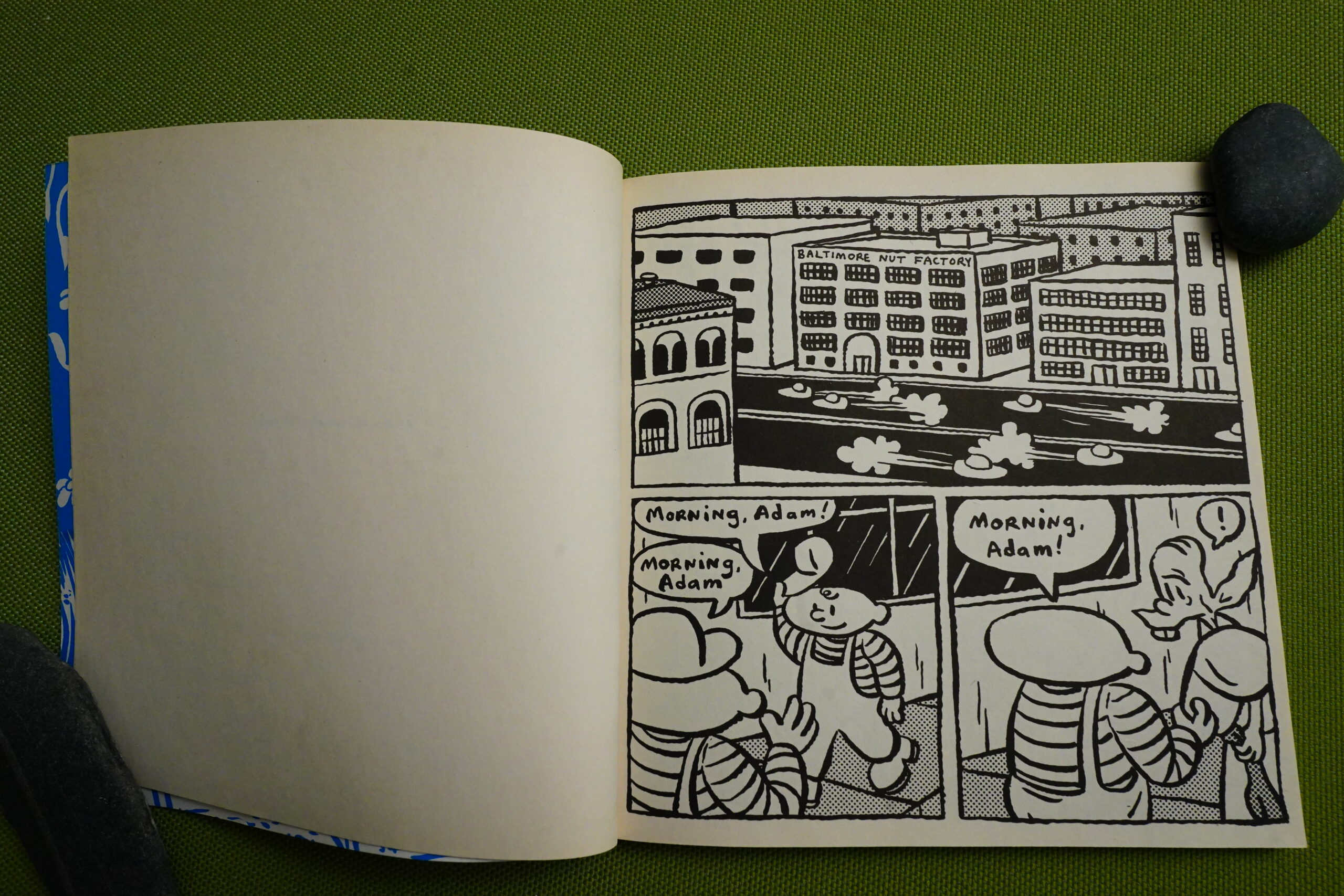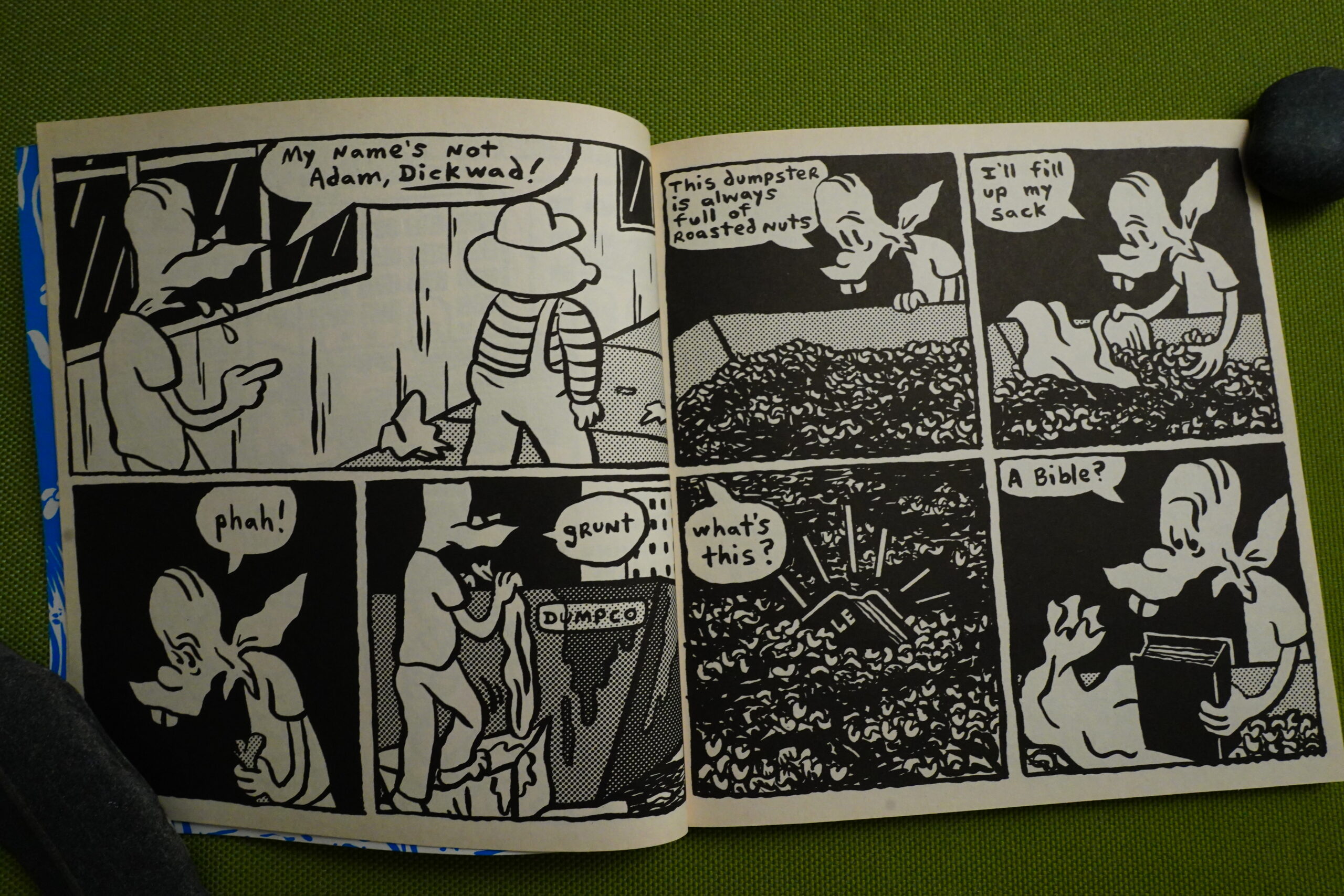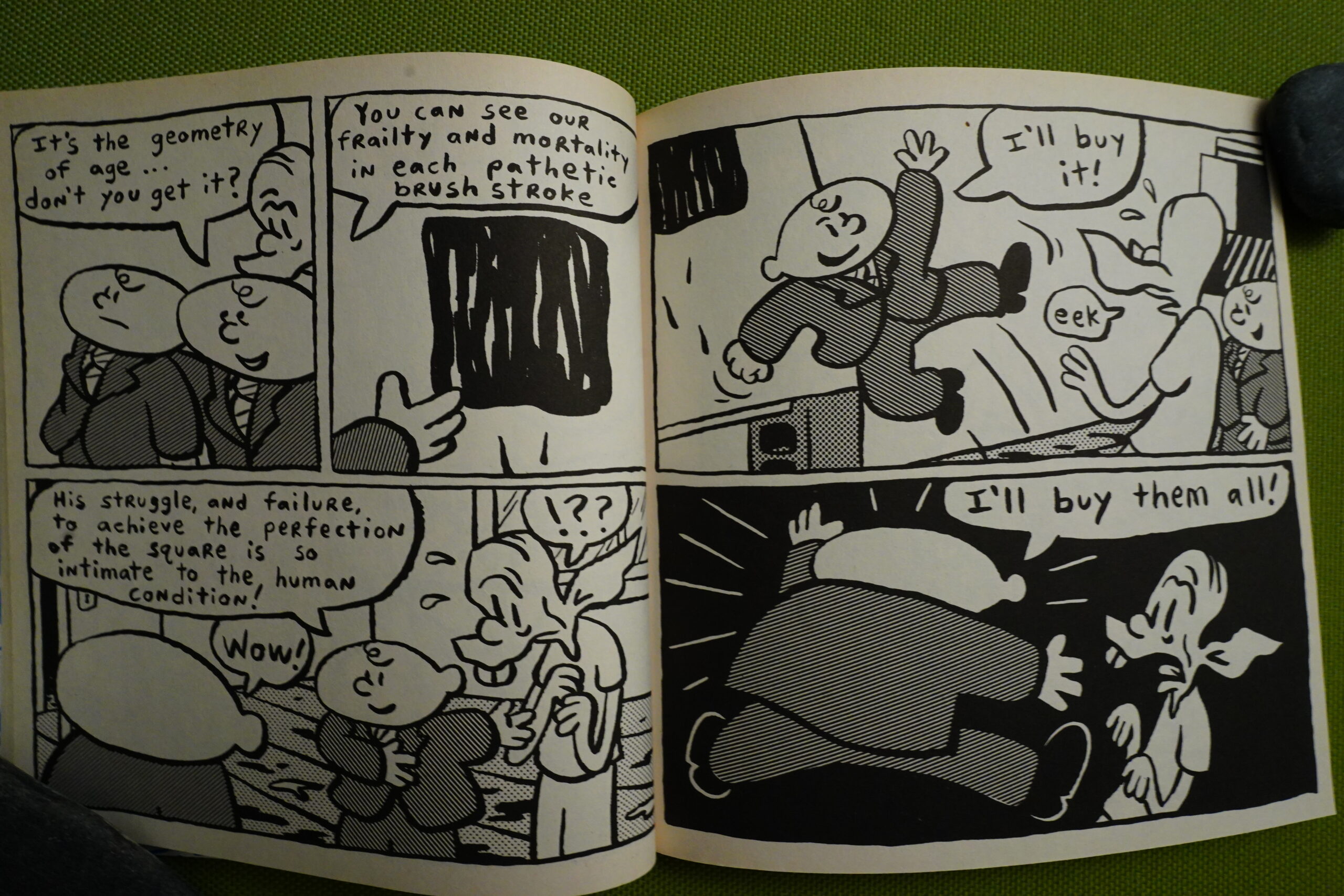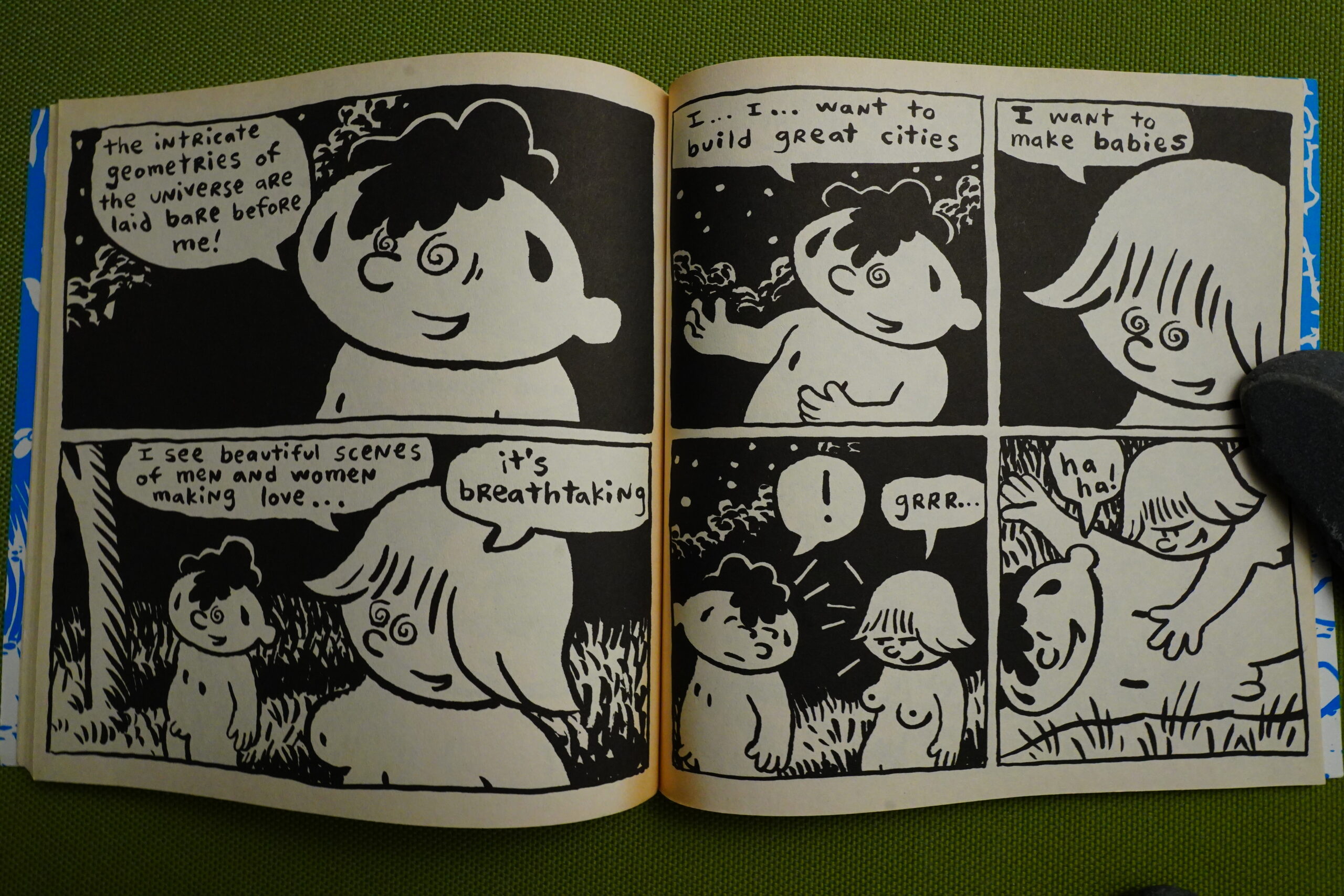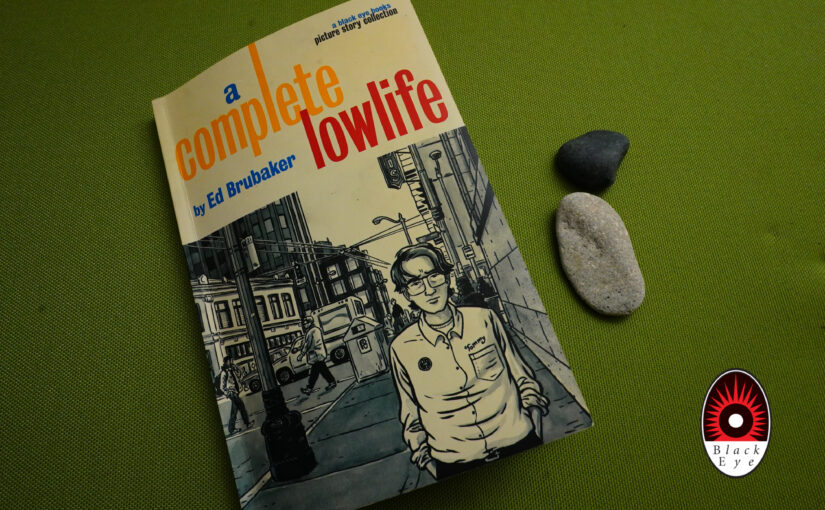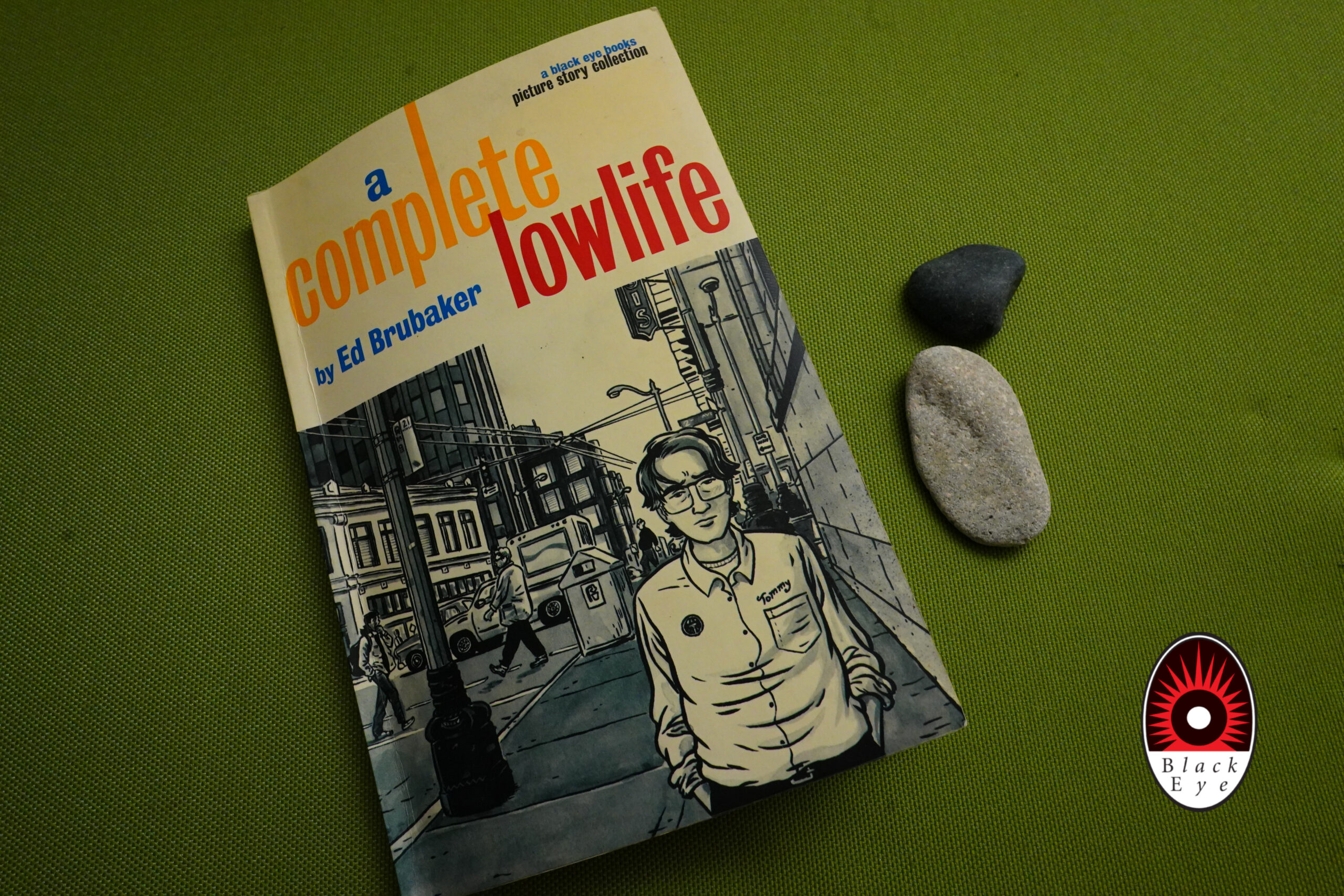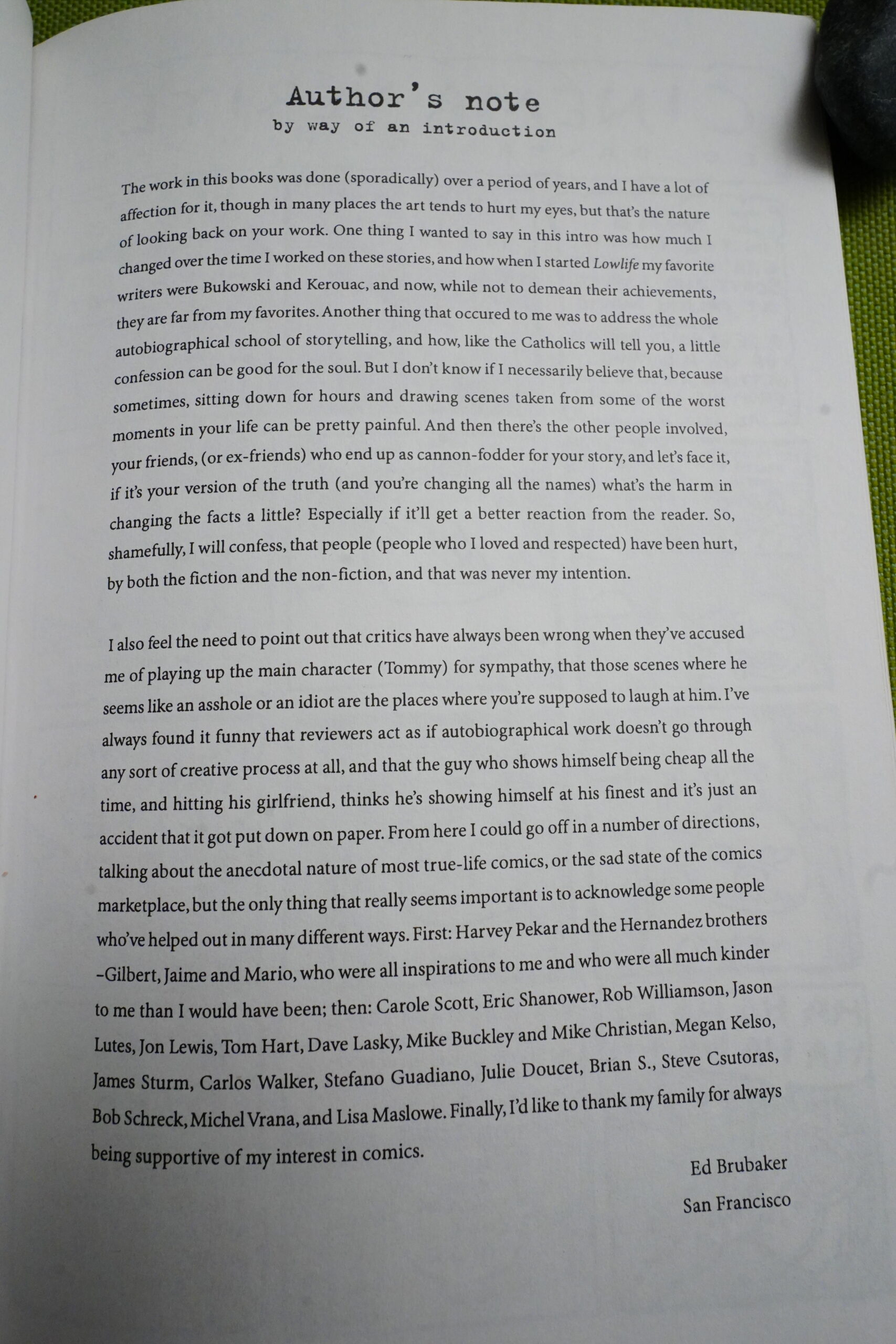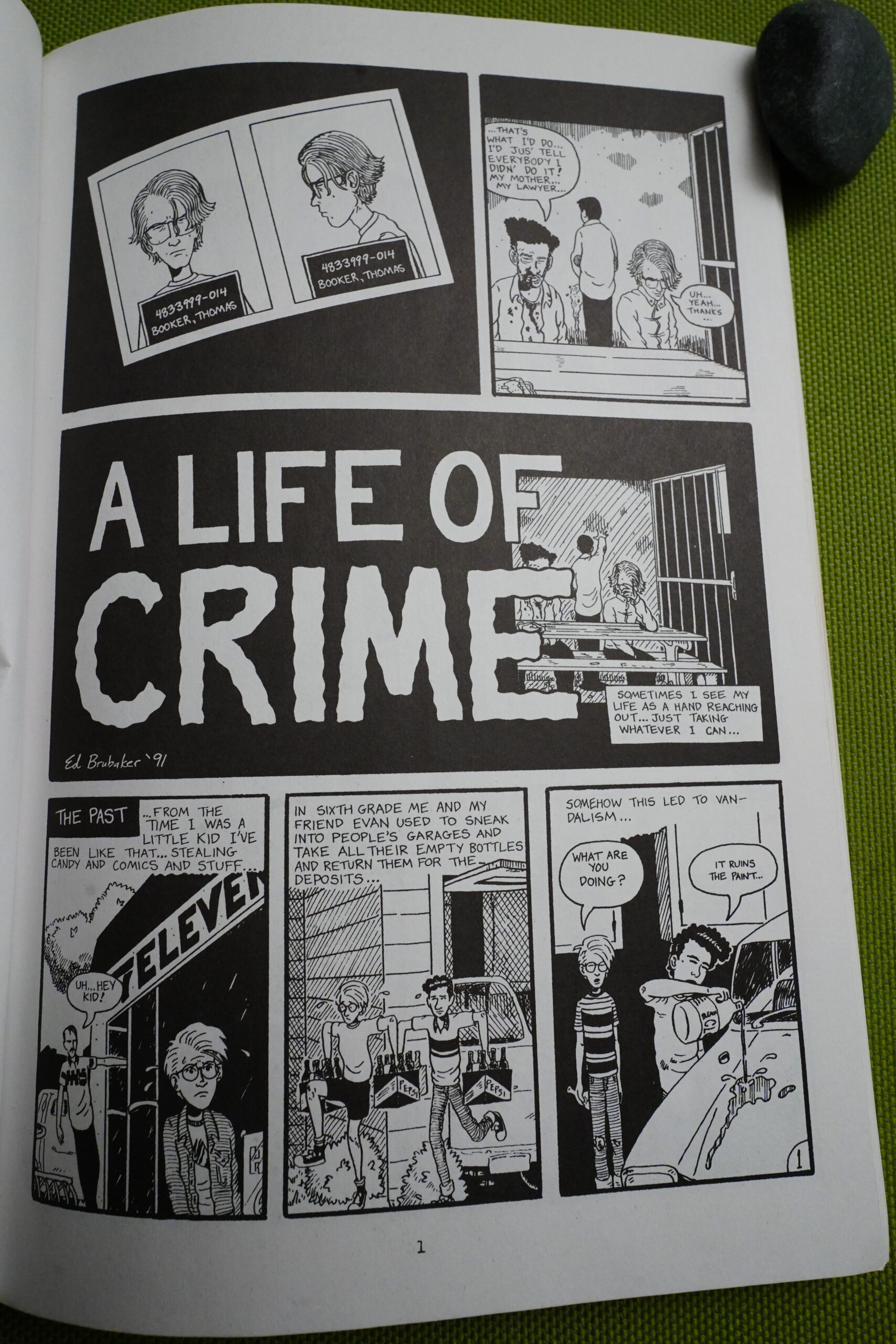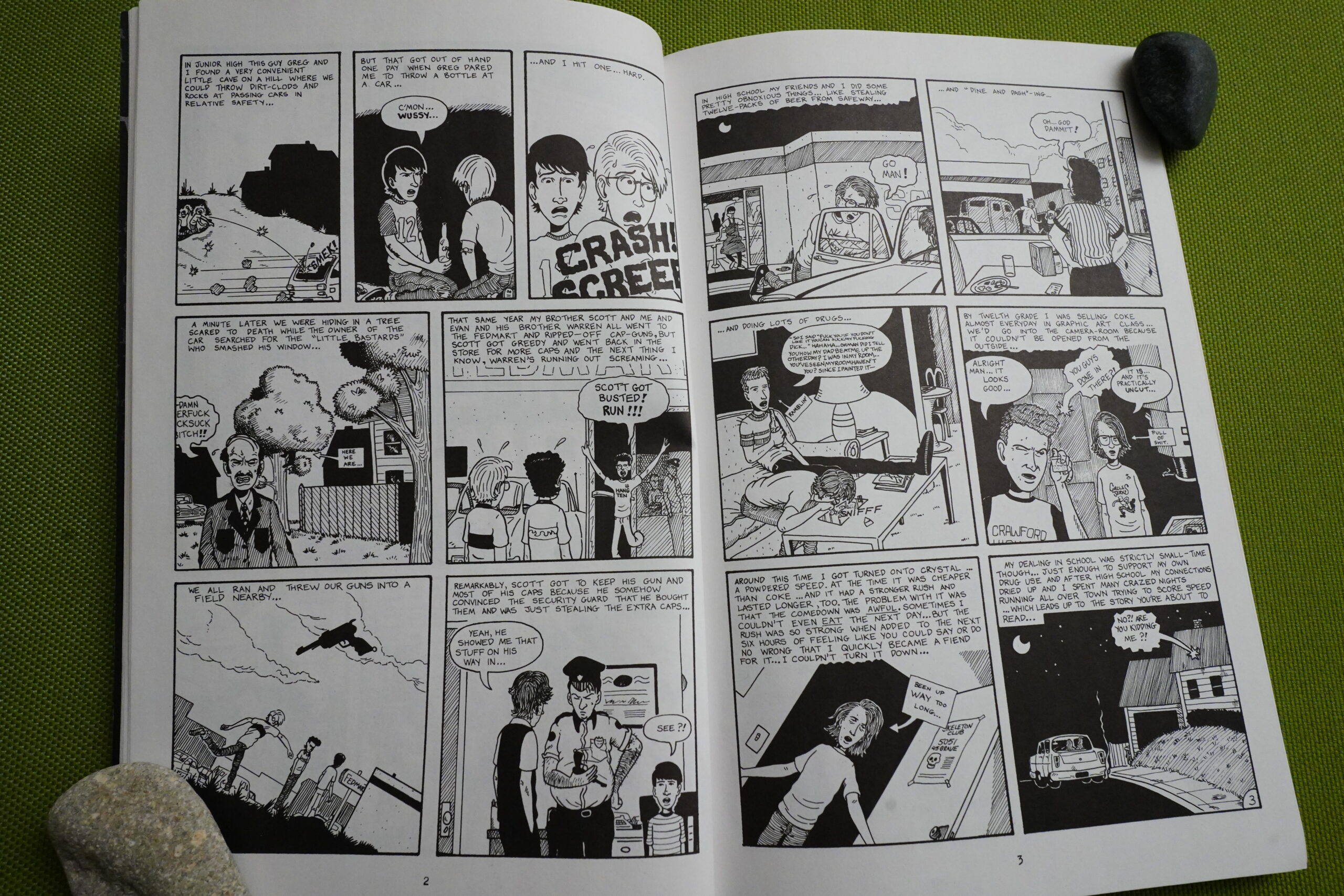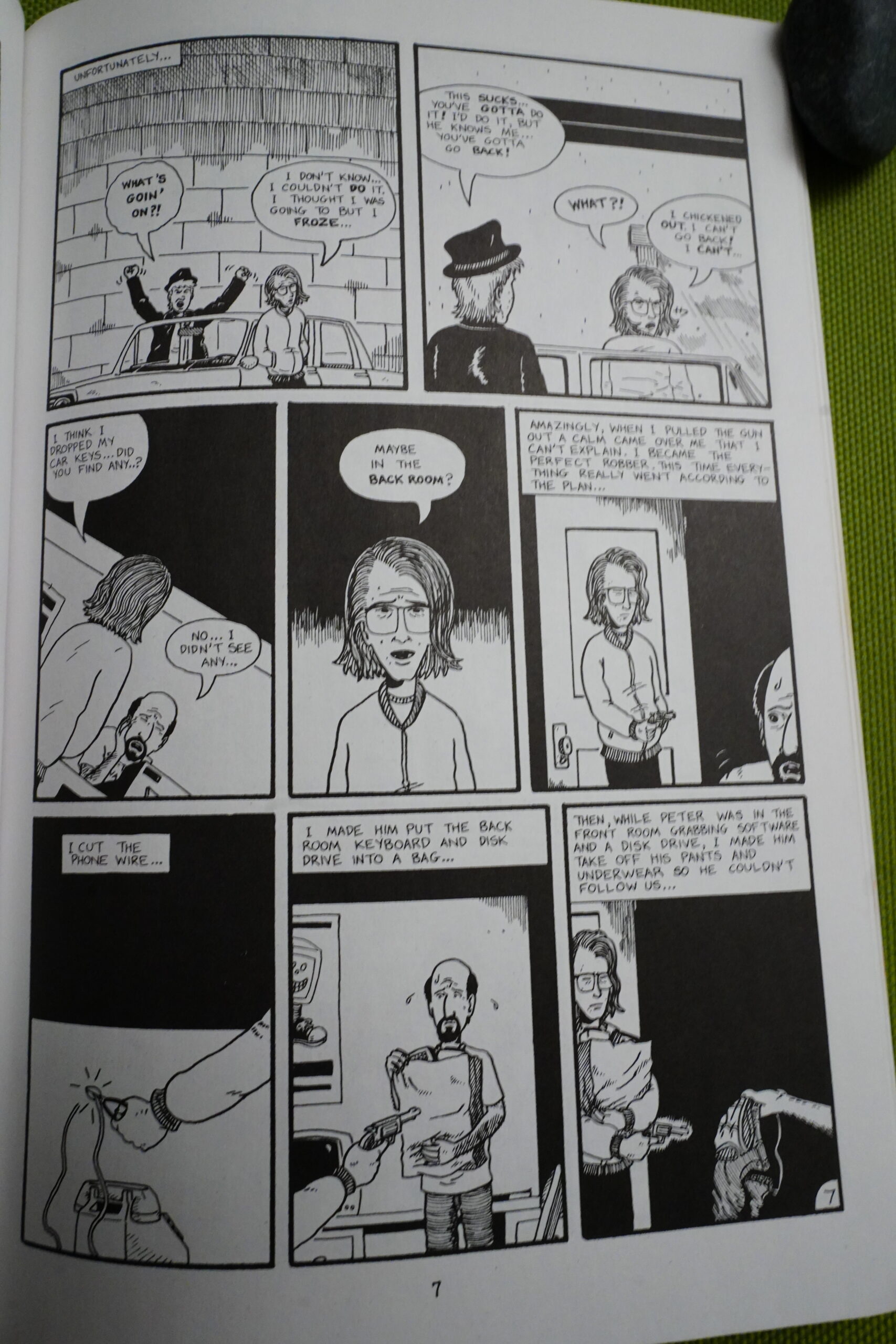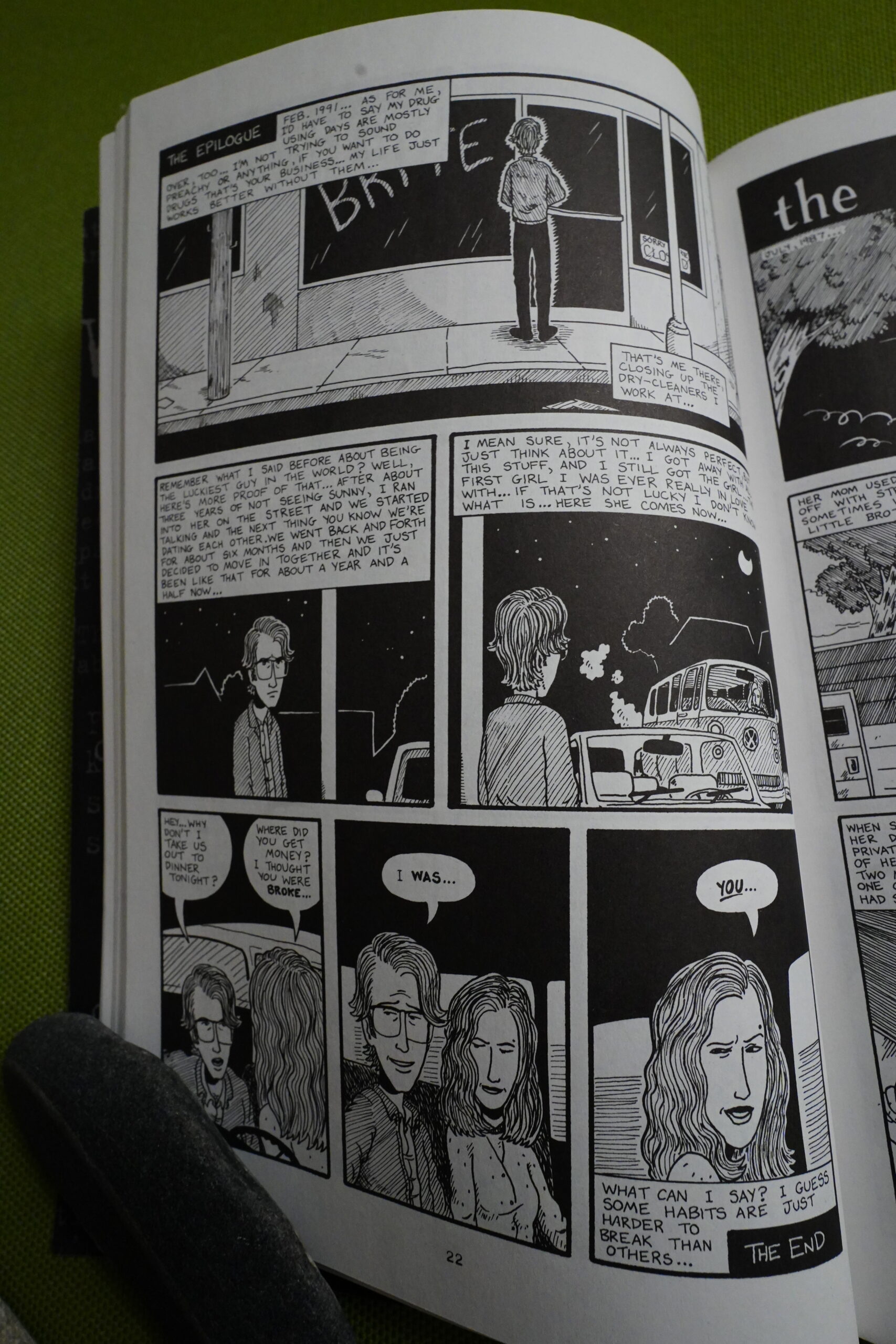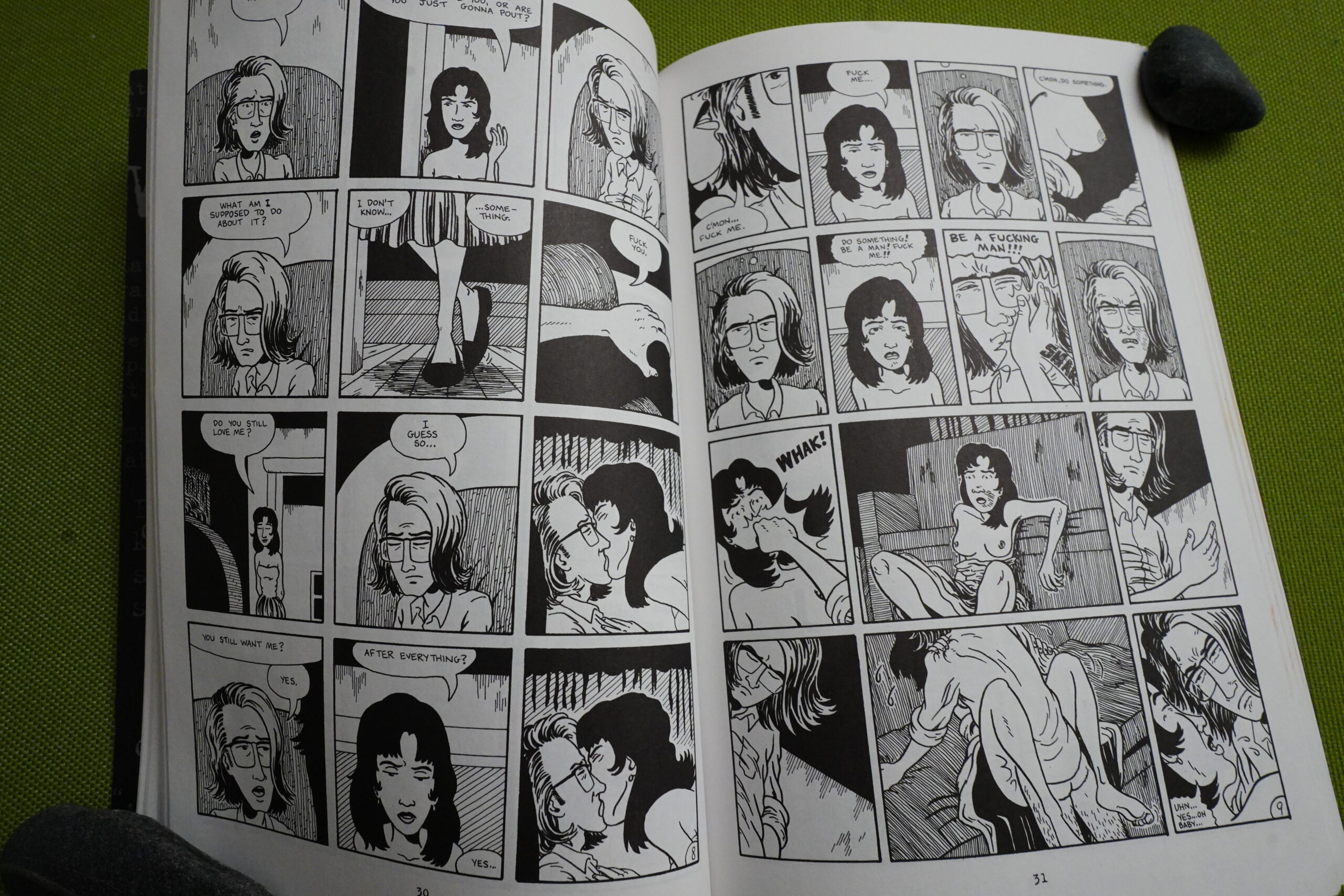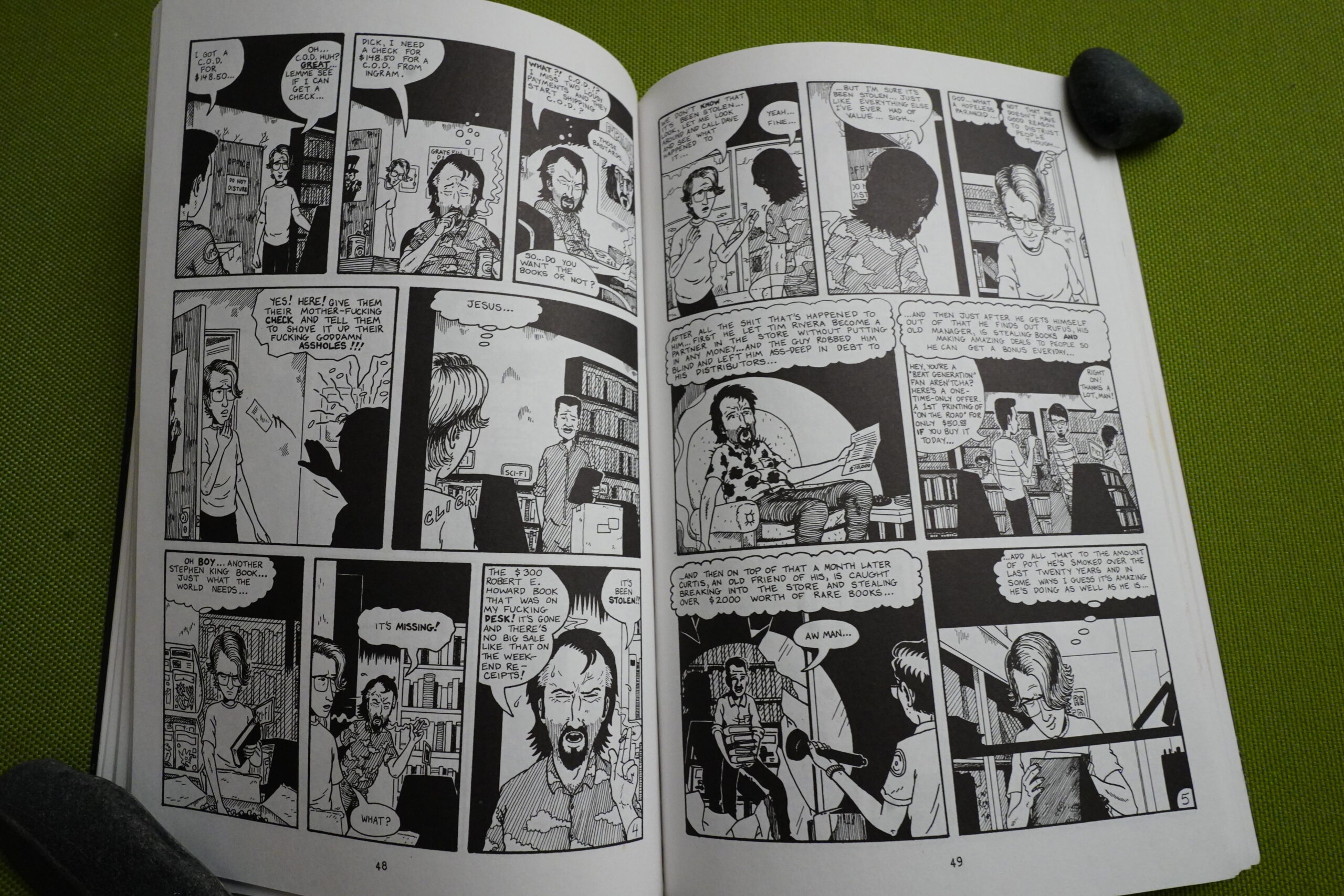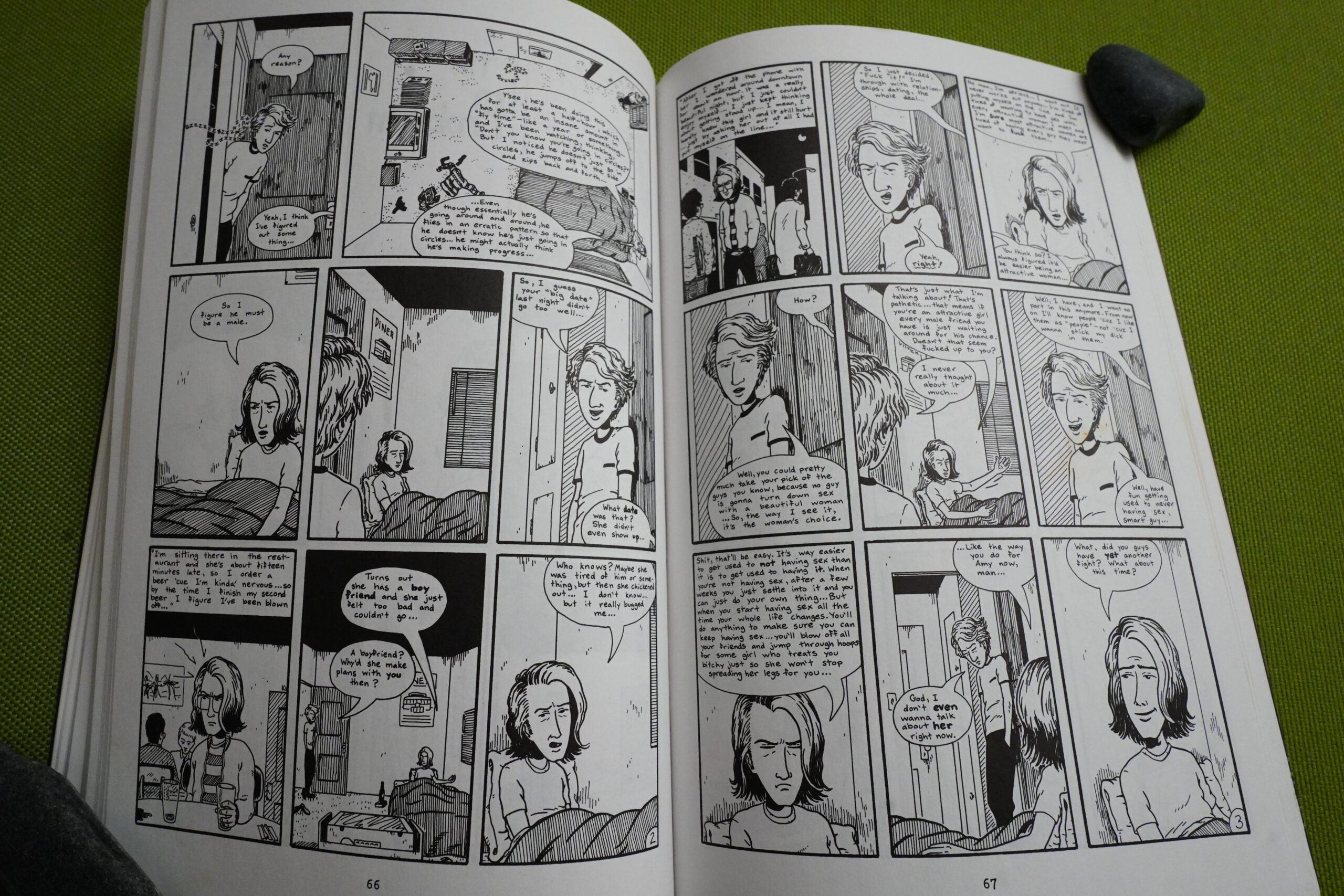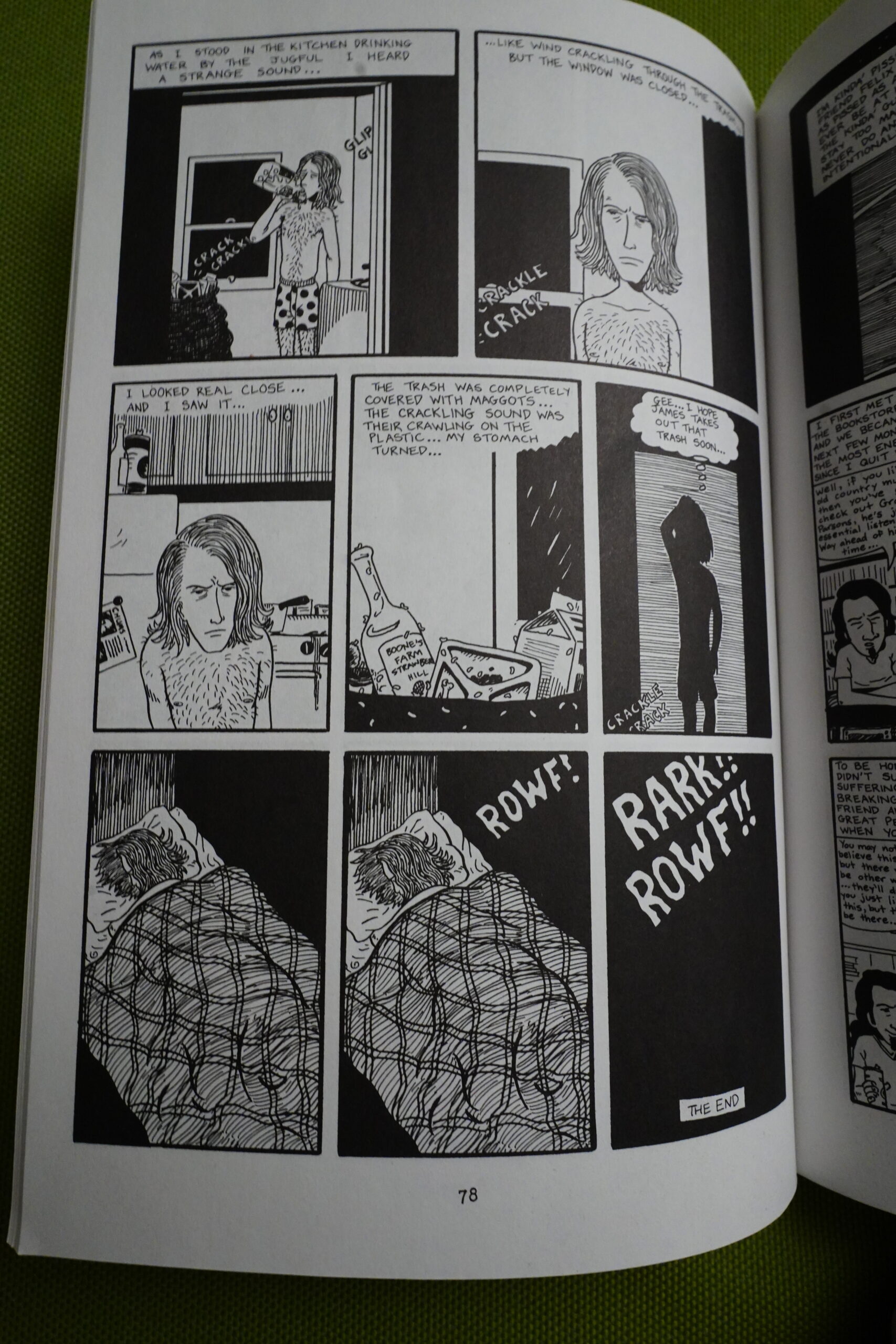
Oops. I messed up my sleeping again, and now it looks like I’ll be up all night… So I guess I’ll catch up with some comics reading. I mean, I read so many older comics lately that I haven’t had time to read newer comics. It’s just hard.
But since it’s in the middle of the night: Music from 1980-82 only.
| Genesis: Duke | 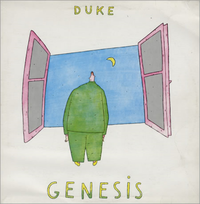 |
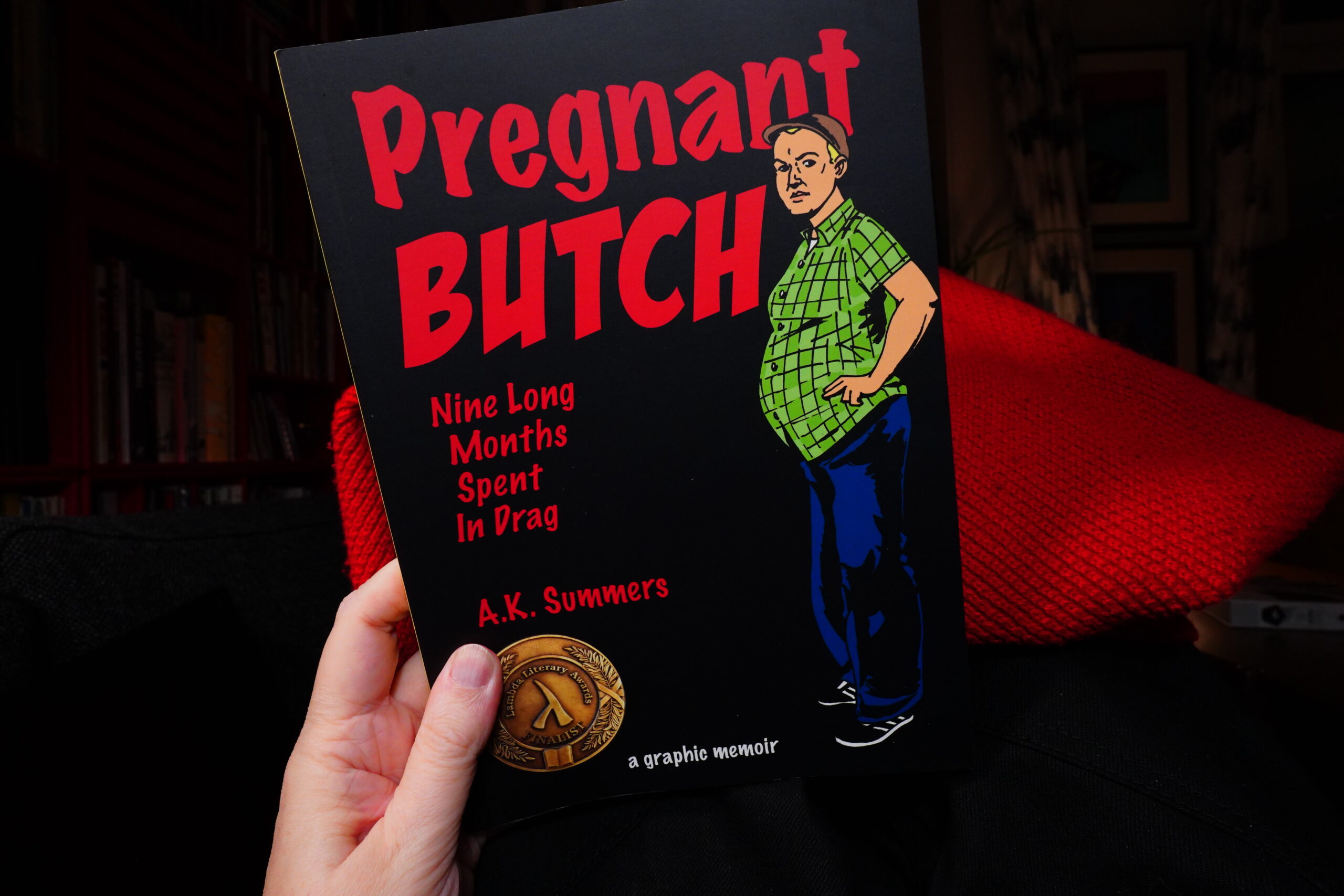
22:50: Pregnant Butch by A. K. Summers (Soft Skull Press)
Well, OK, this isn’t a new comic either — it’s from 2014. And my copy is the 8th printing! A very popular book.
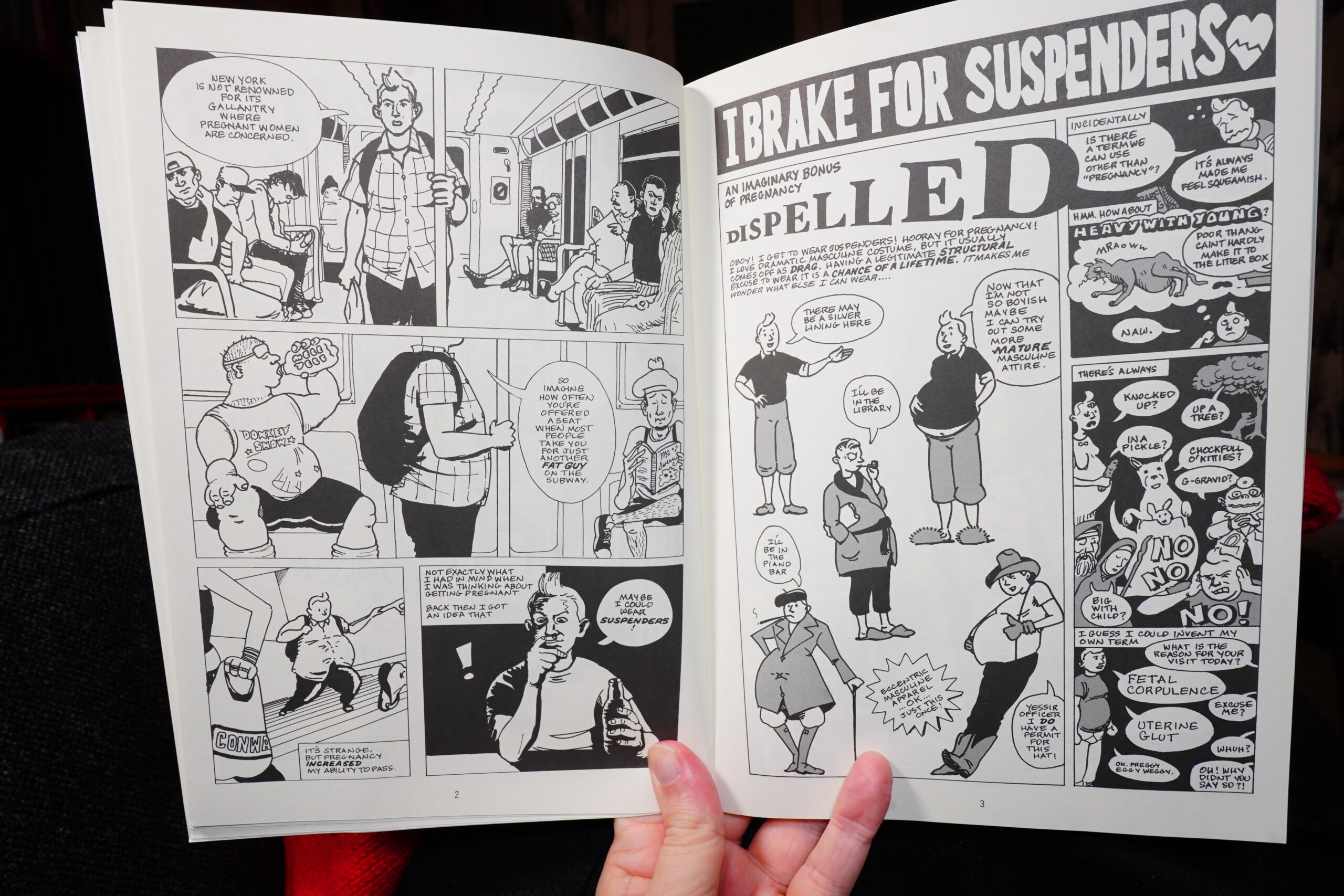
And… it’s great!
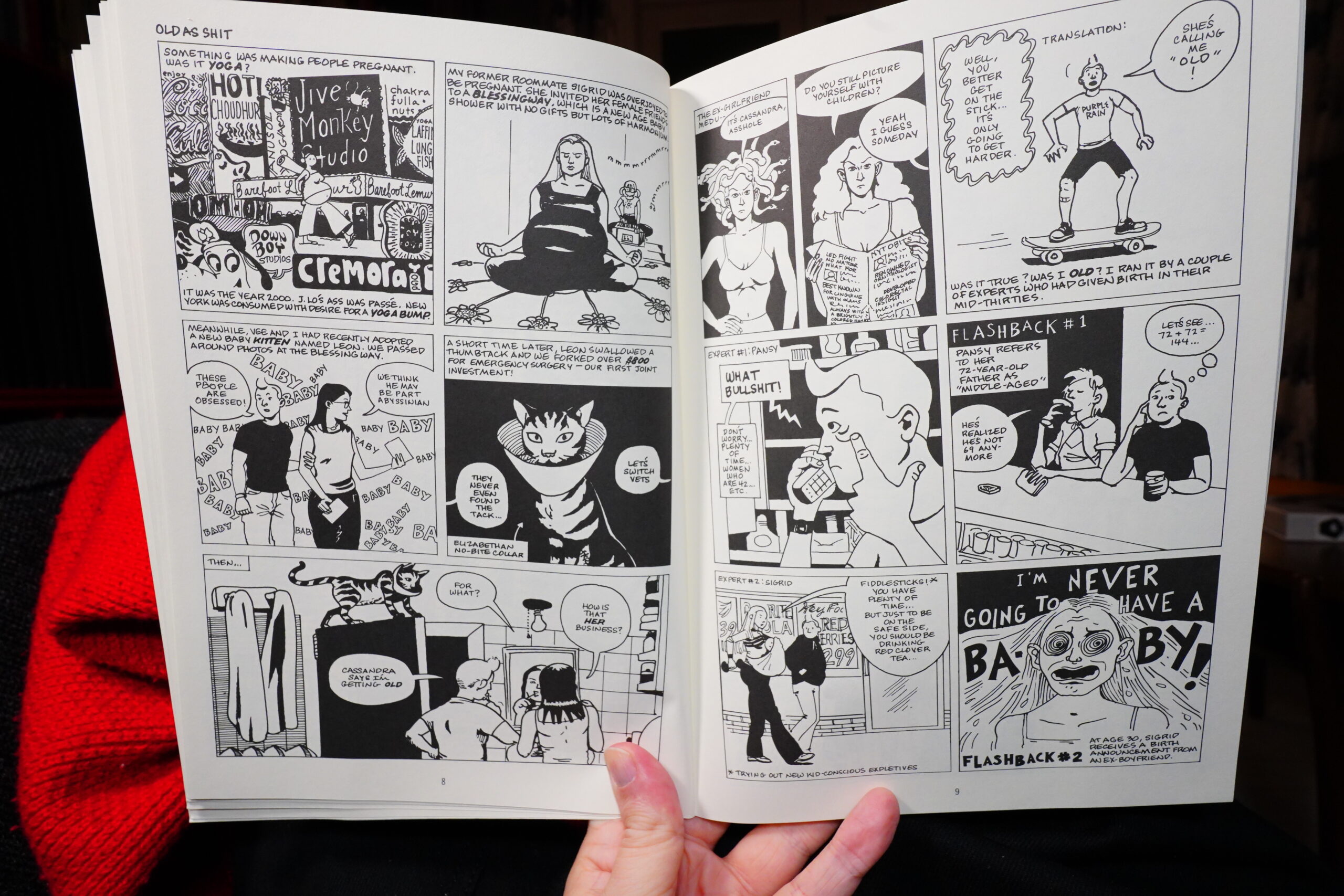
It’s got this wonderfully digressive flow while basically sticking to the point at the same time.
| Yukihiro Takahashi: Neuromantic | 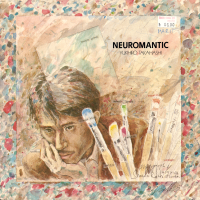 |
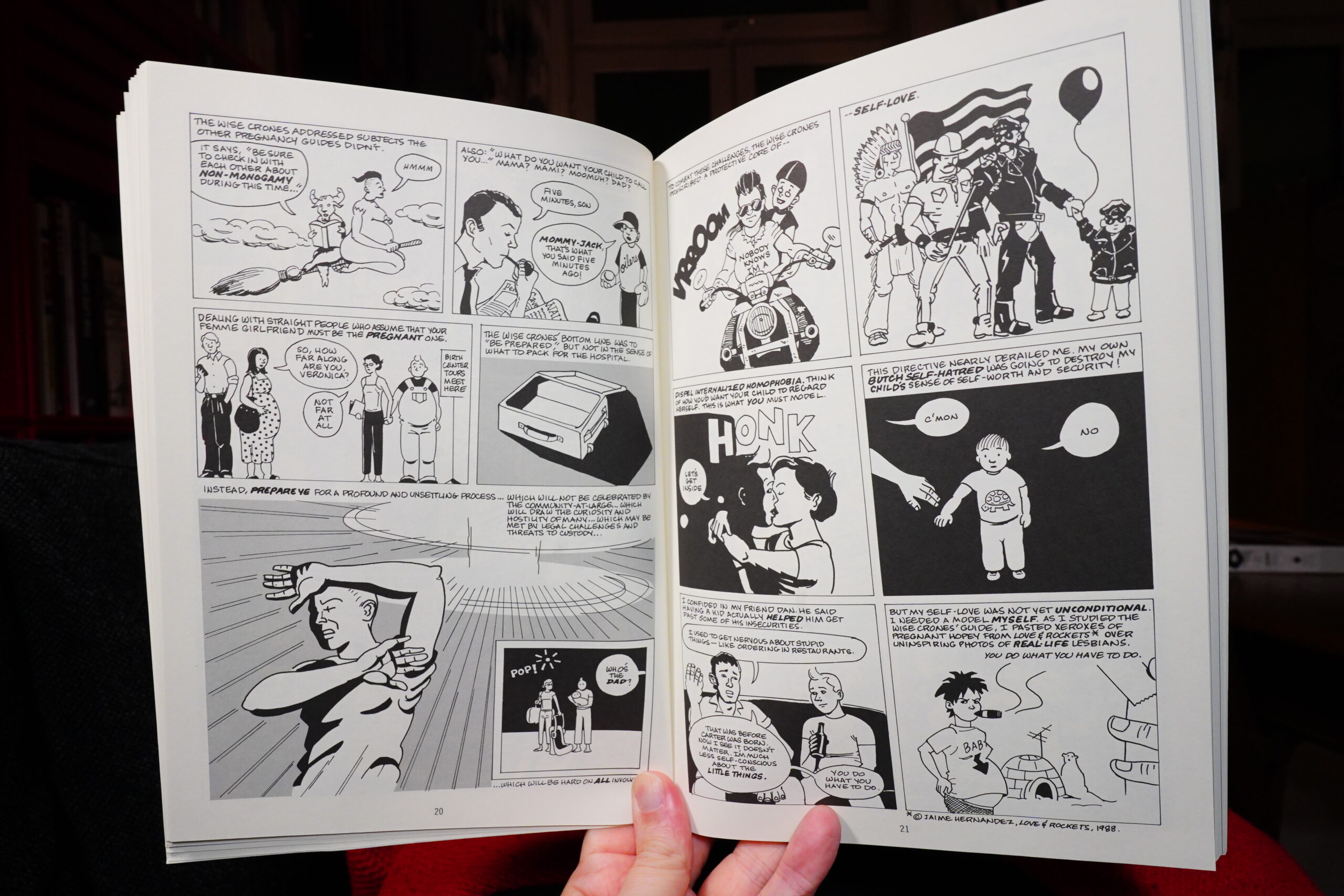
The artwork is a lot of fun, too.
So I totally get why this is a classic — it’s a fun read. (In addition to being very interesting.)
| Tom Tom Club: Tom Tom Club | 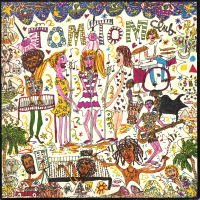 |
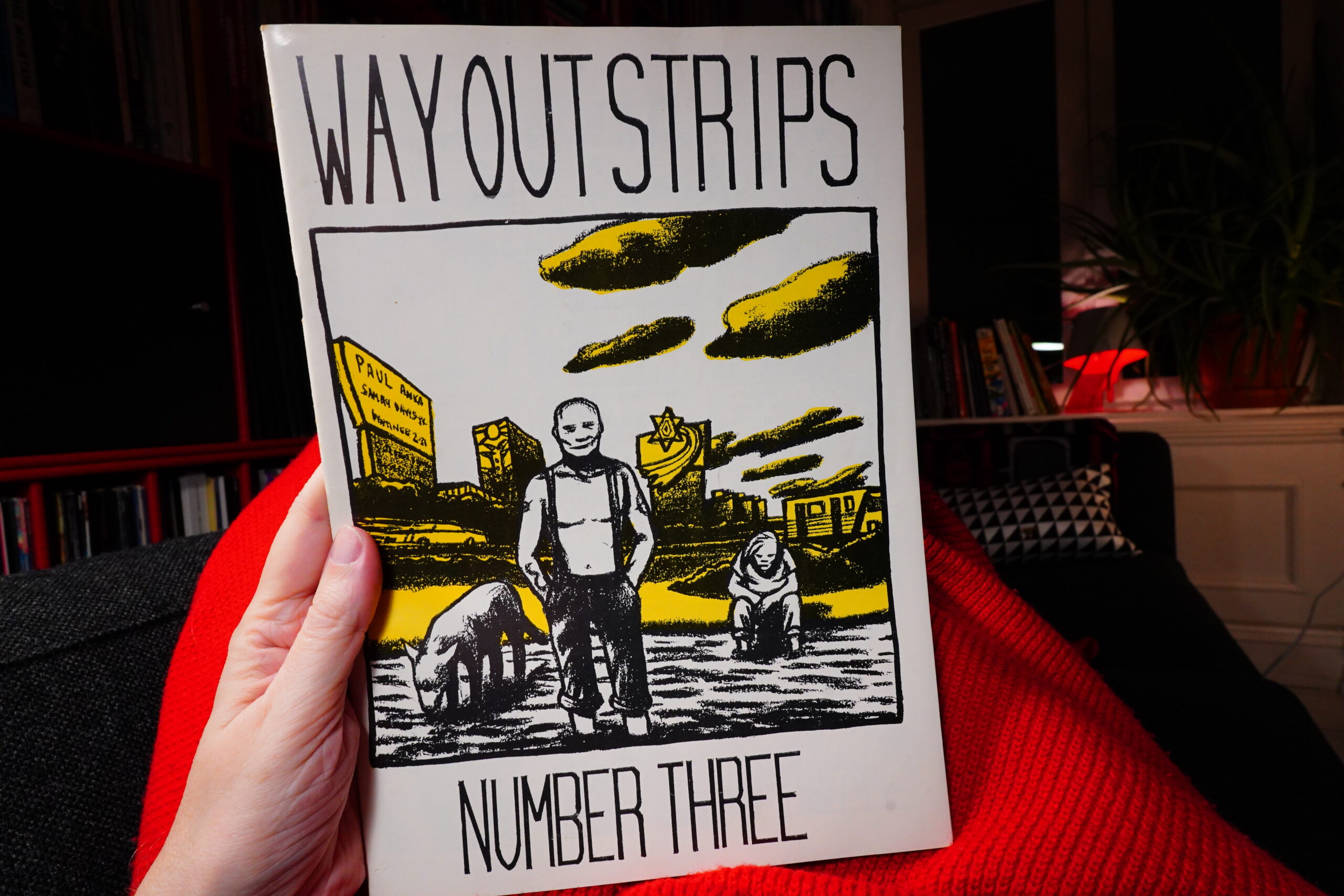
00:05: Way Out Strips #3 by Carol Swain
And speaking of older comics… I blogged about Way Out Strips and moaned about not being able to find the first, self-published volume of this series, and somebody saw that, got in touch and sold me this copy. Blogging works!
This is from 1989…
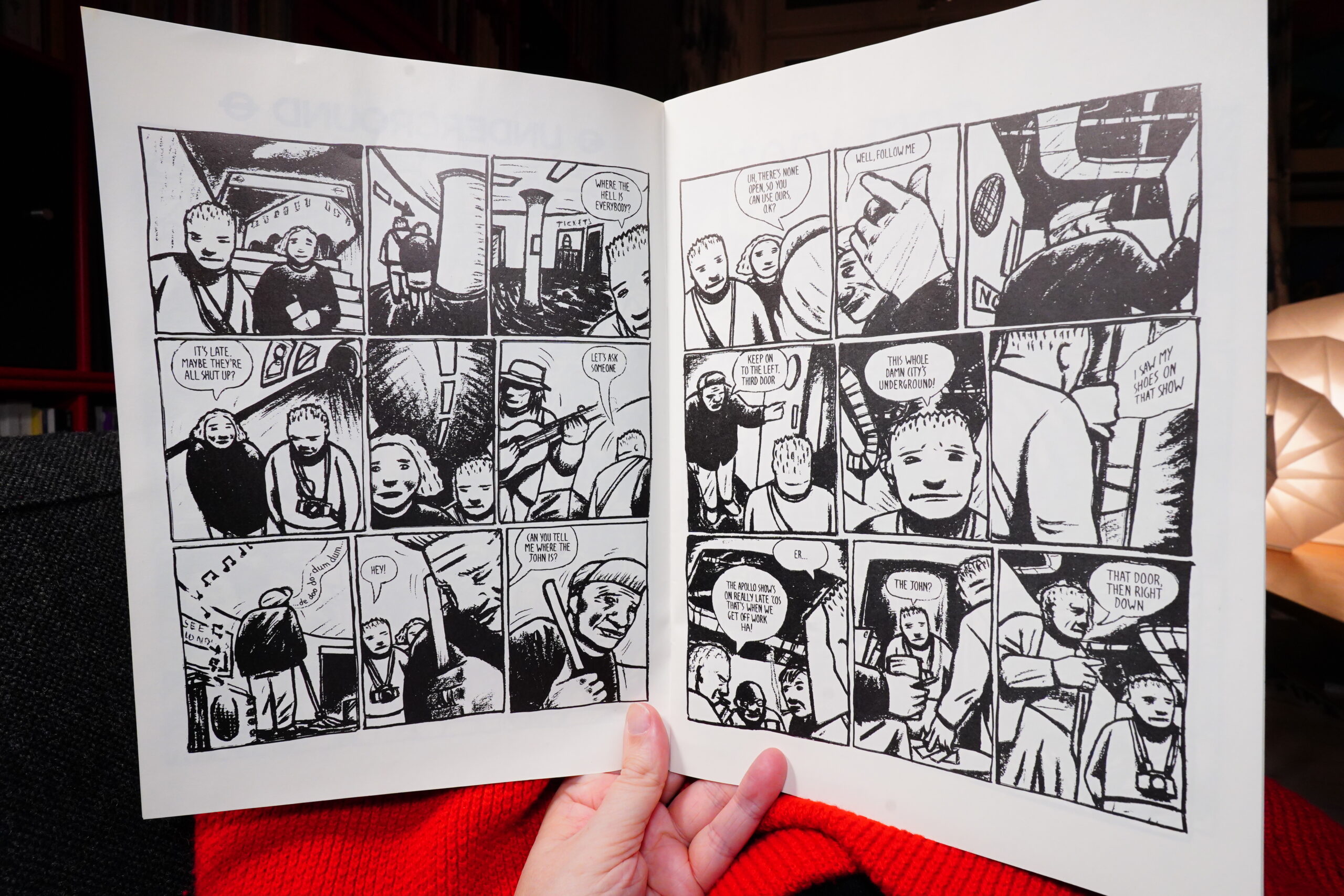
It’s so good.
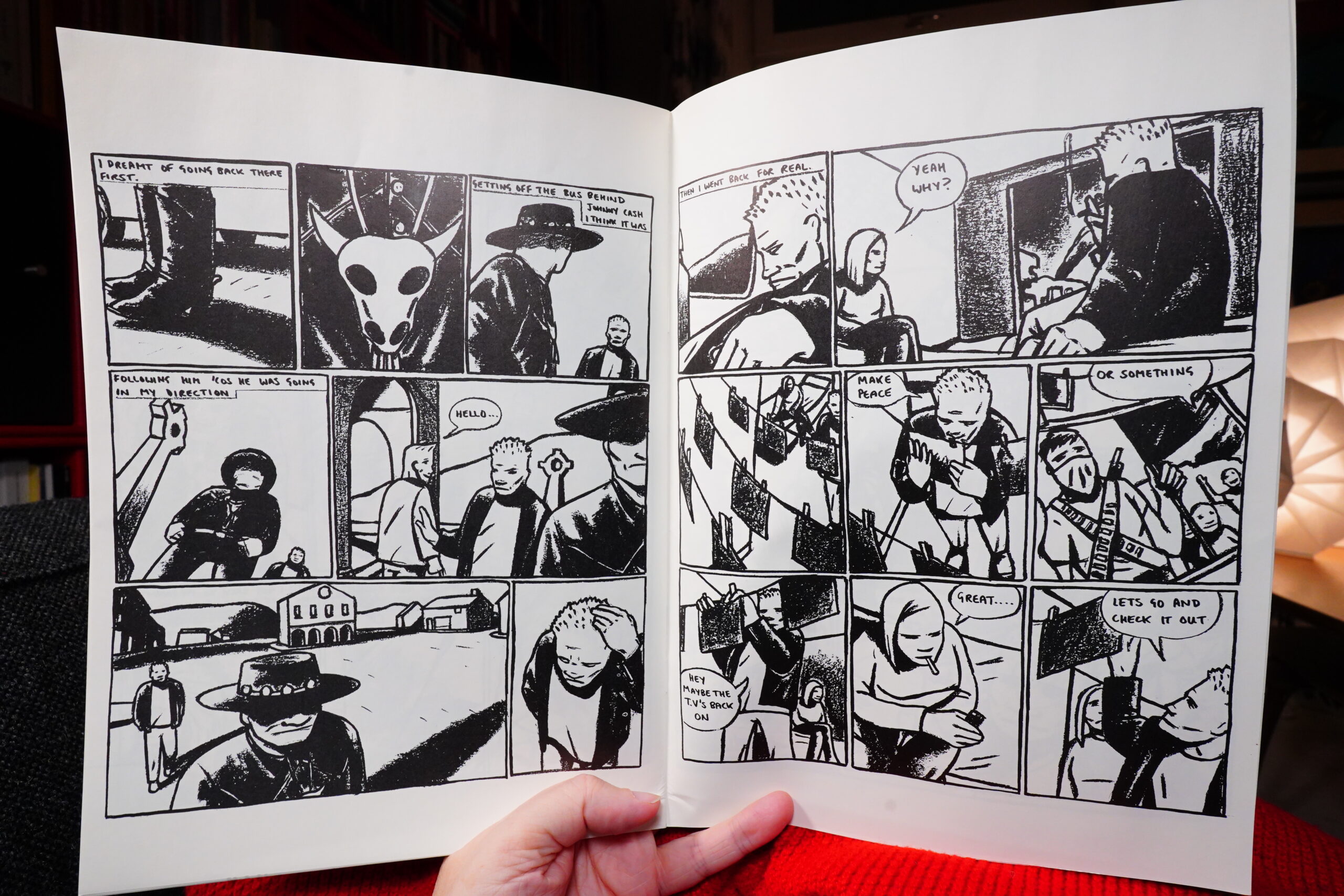
Wonderful. Now I just have to get issues #1 and #2. Somebody should really put out a collection of this material…
| David Byrne: The Catherine Wheel | 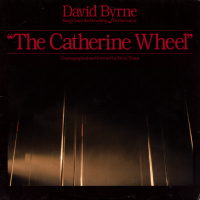 |
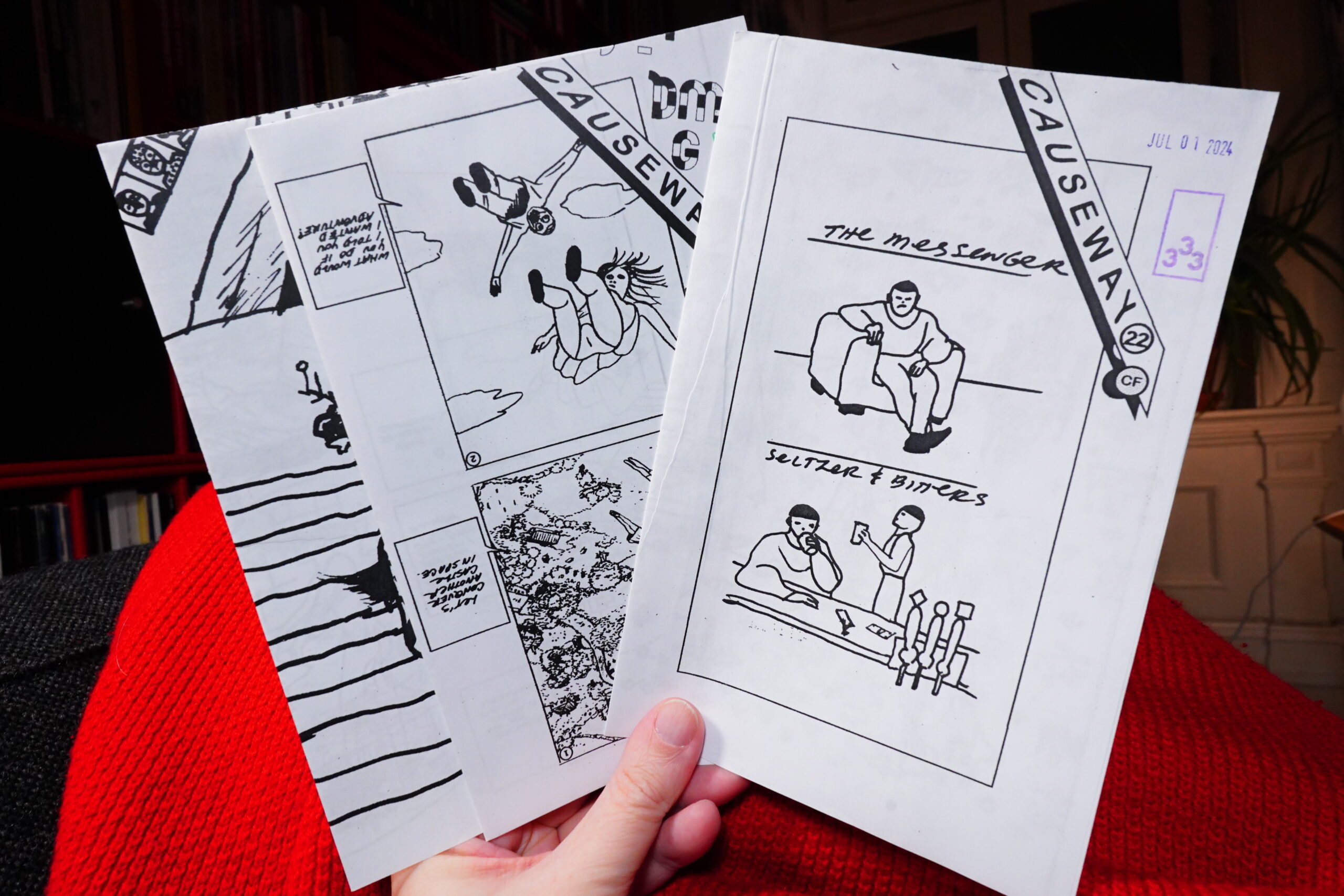
00:16: Causeway #22-24 by CF
I got these from here.
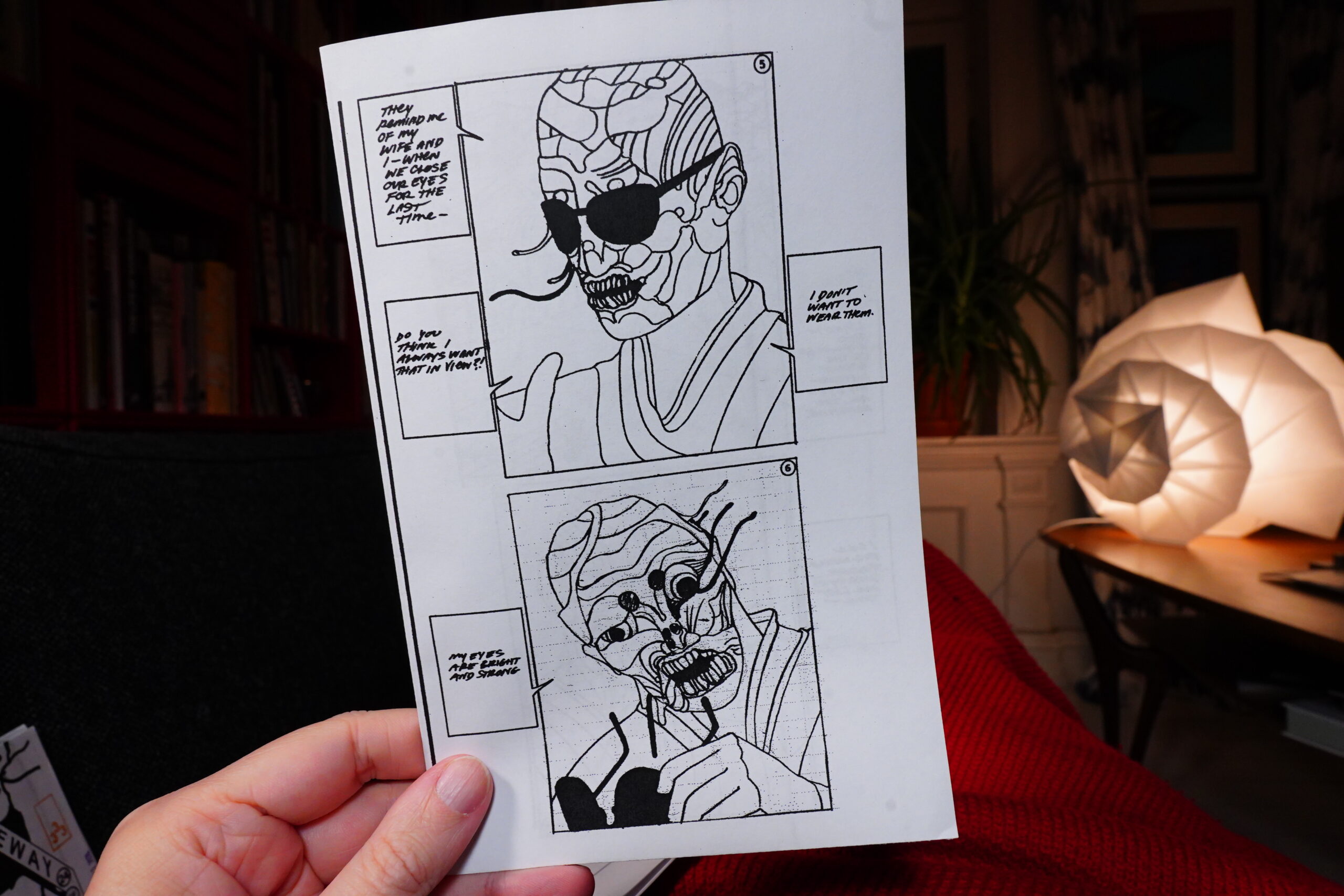
Two of these are more sketch book like, but one is a narrative of sorts. It’s cool.
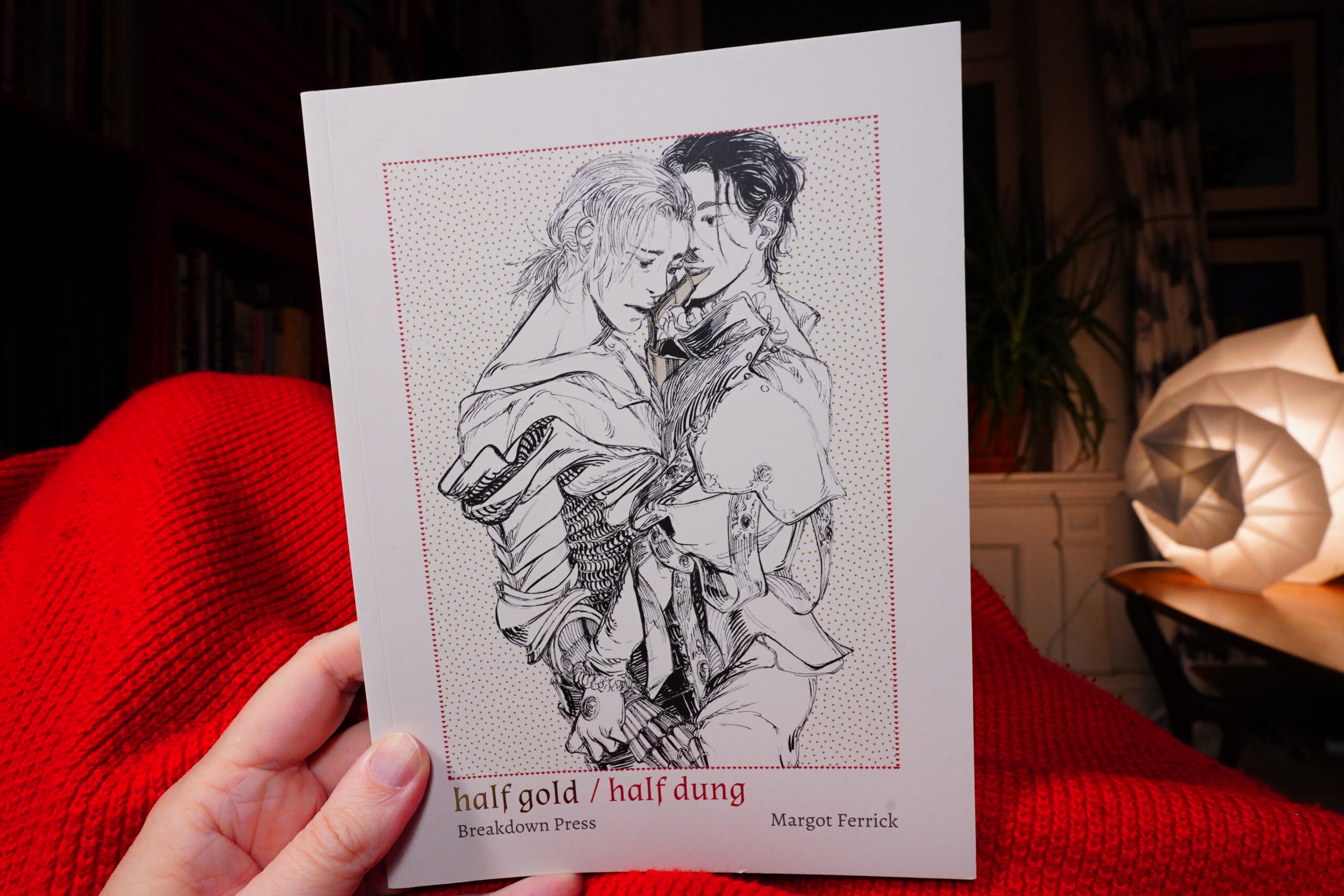
00:20: Half Gold/Half Dung by Margot Ferrick (Breakdown Press)
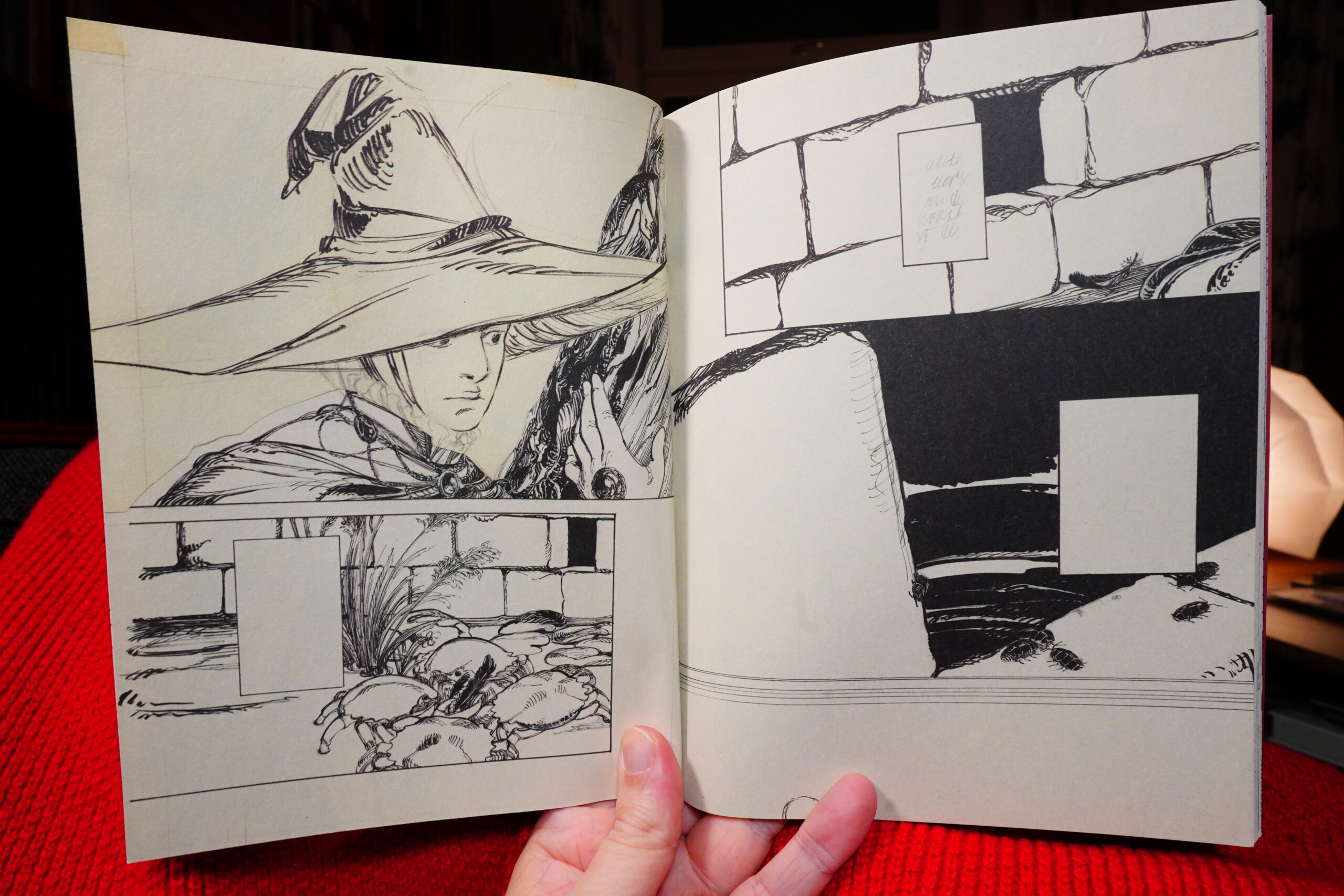
This is a collection of drawings inspired by two video games.
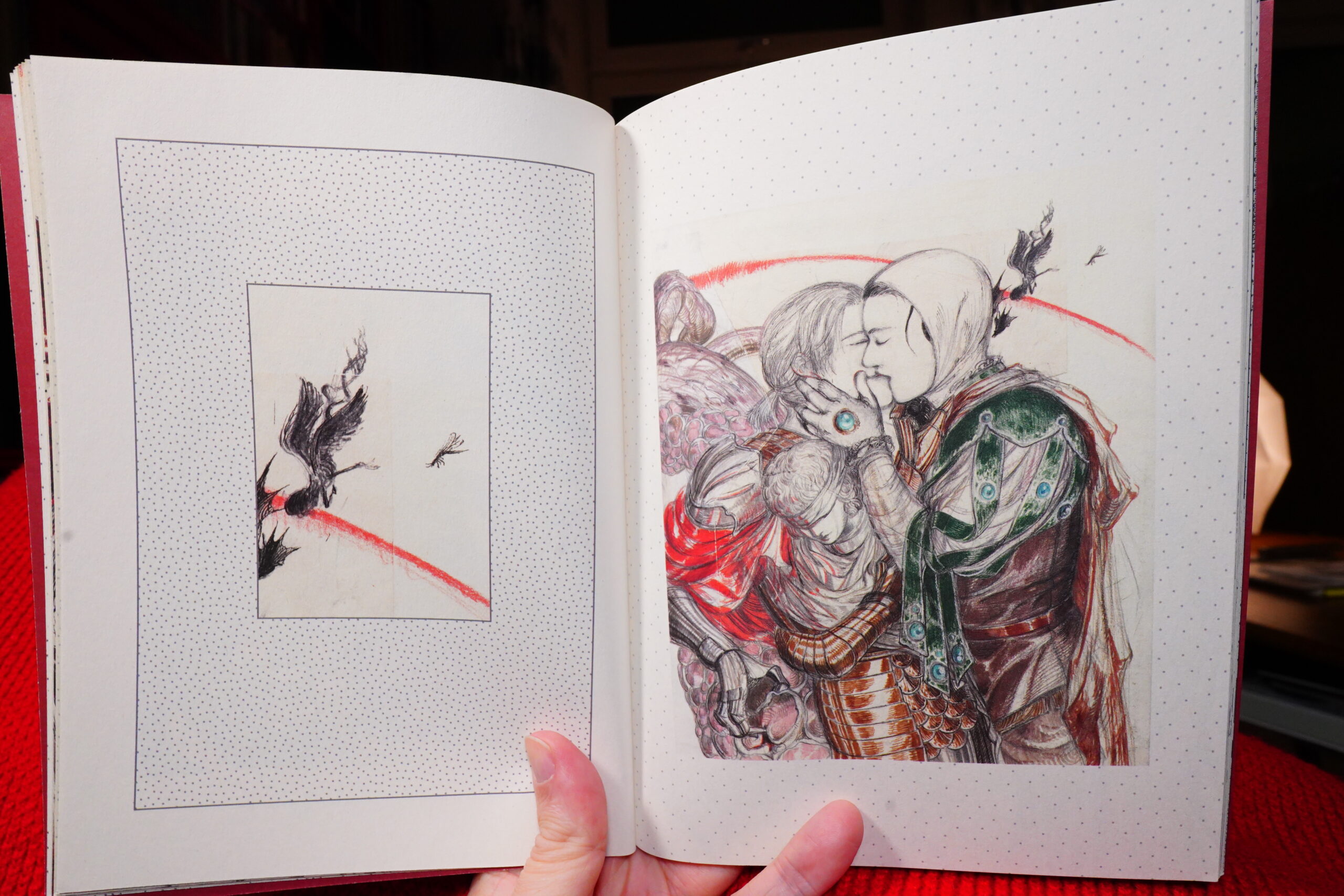
So I was totally expecting not to like this much, but it’s a strangely compelling read. It’s not narrative as such, but it has a strong mood going on anyway, and makes sense in a strange way.
| King Crimson: Discipline |  |

00:30: Selma gjør så godt hun kan by Kjersti Synneva Moen (Aschehoug)
There’s a whole comics industry in Norway based on comics for and about kids (*gasp*), and I kinda sample one now and again. I liked the name of this one, which translates to “Selma Does The Best She Can”.
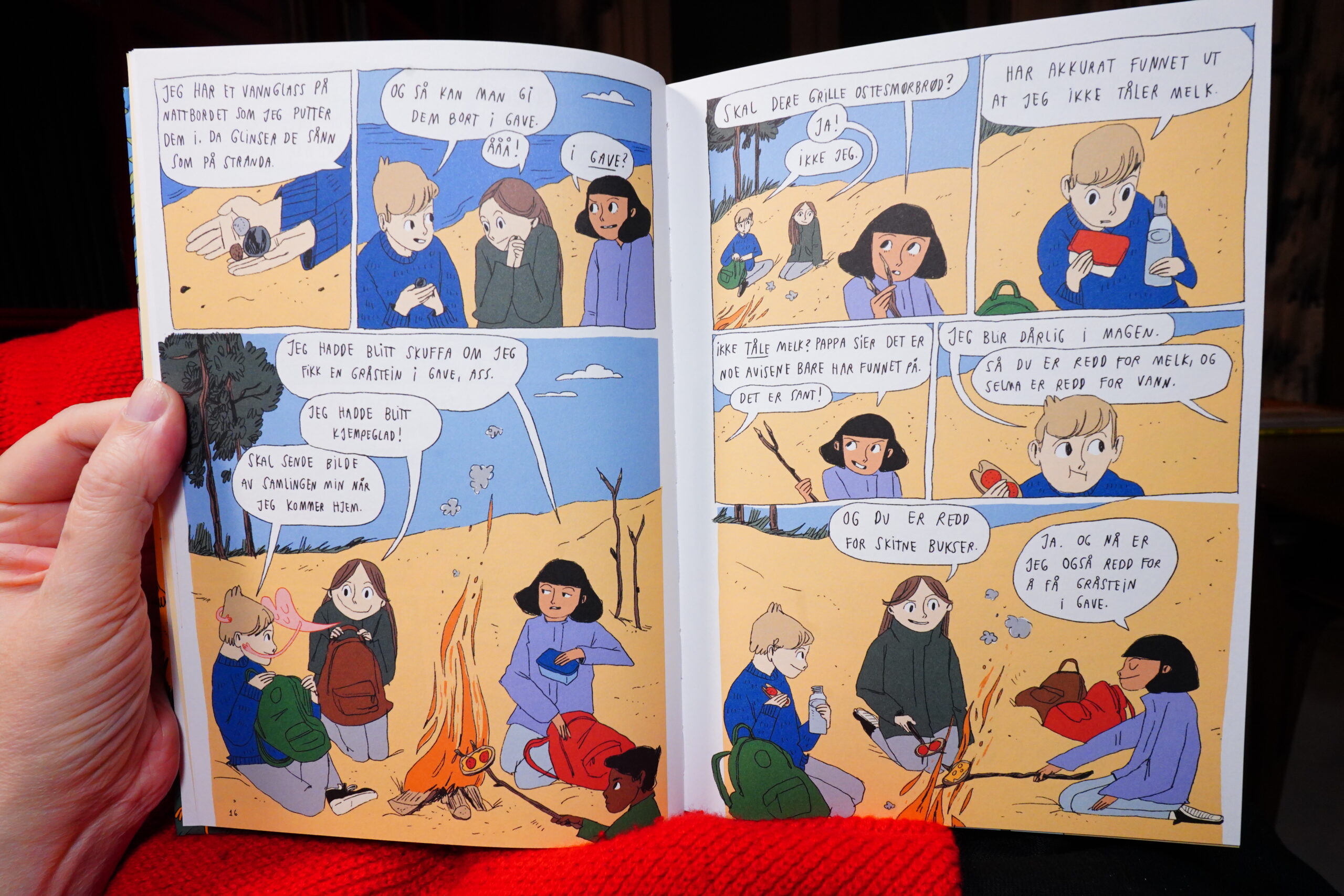
The artwork’s attractive.
These things are usually set, like, ten years in the past (so we’d be getting the author’s childhood), but this is set in the present, which is kinda refreshing.
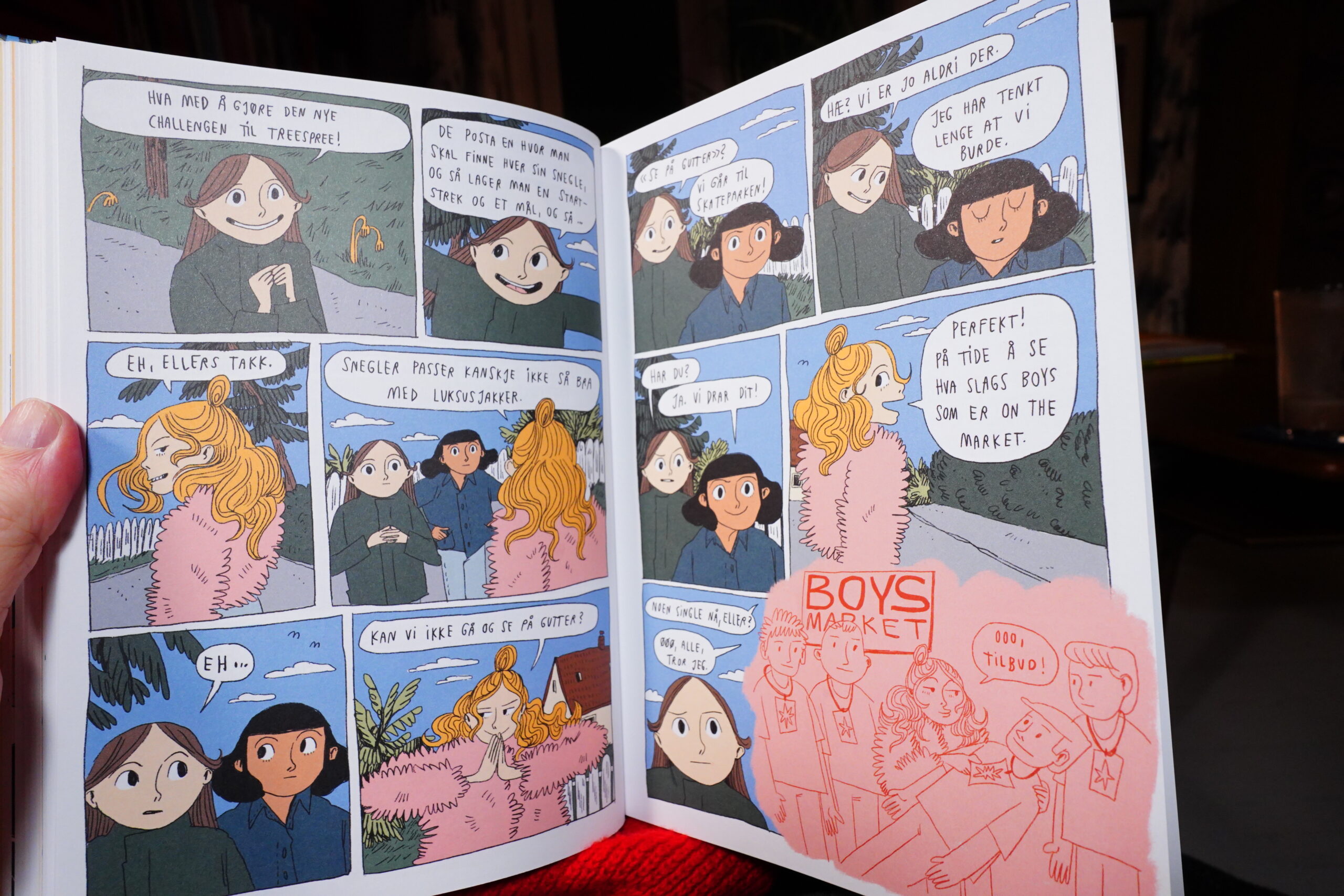
OK, I’m not the target audience, but I found the dialogue to be mostly unconvincing. And the story is interesting — I could totally see a teenager being into this — but for me it felt like it… er… snagged? a lot? That is, it didn’t really seem to flow very naturally.
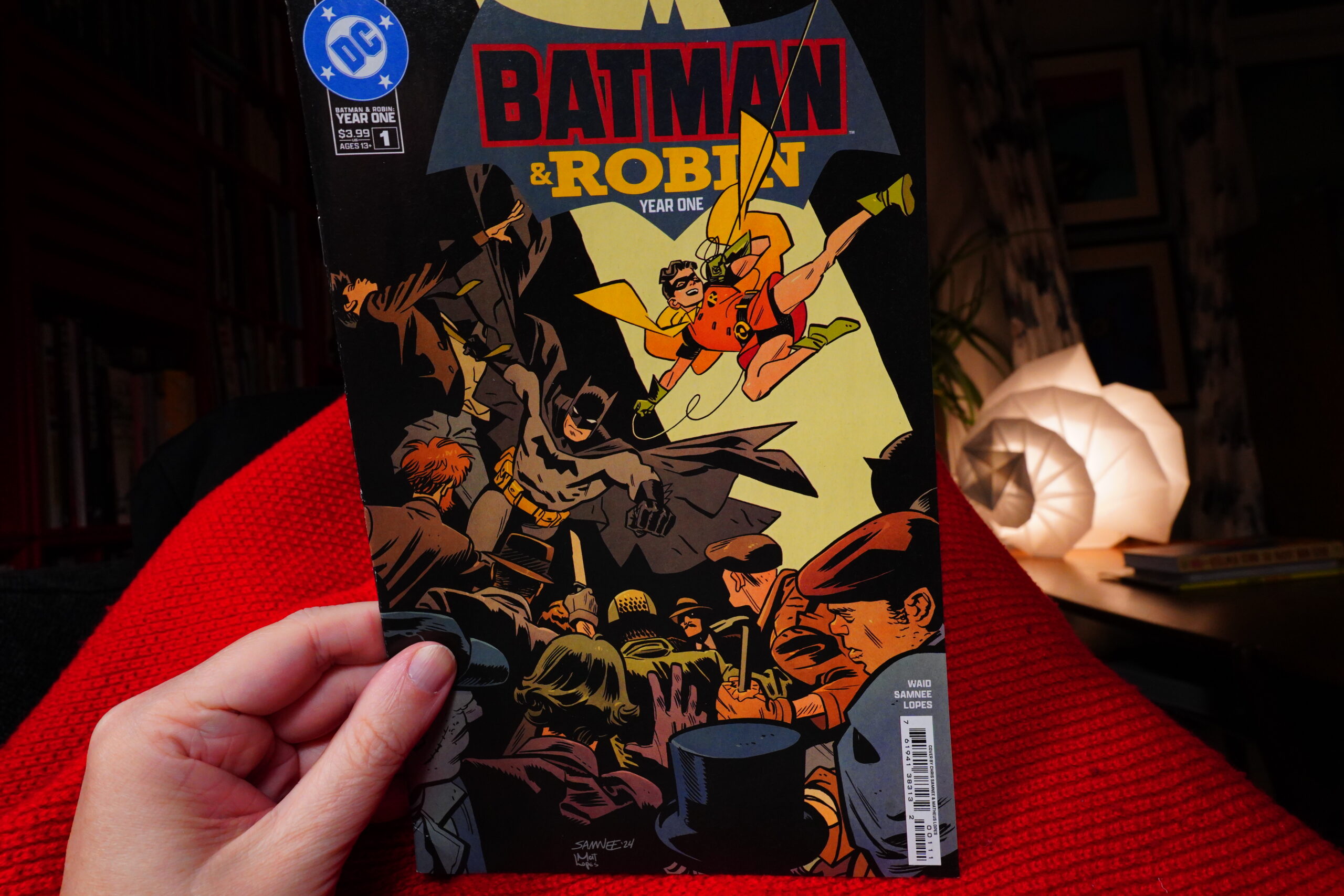
01:25: Batman & Robin Year One #1 by Waid/Samnee (DC Comics)
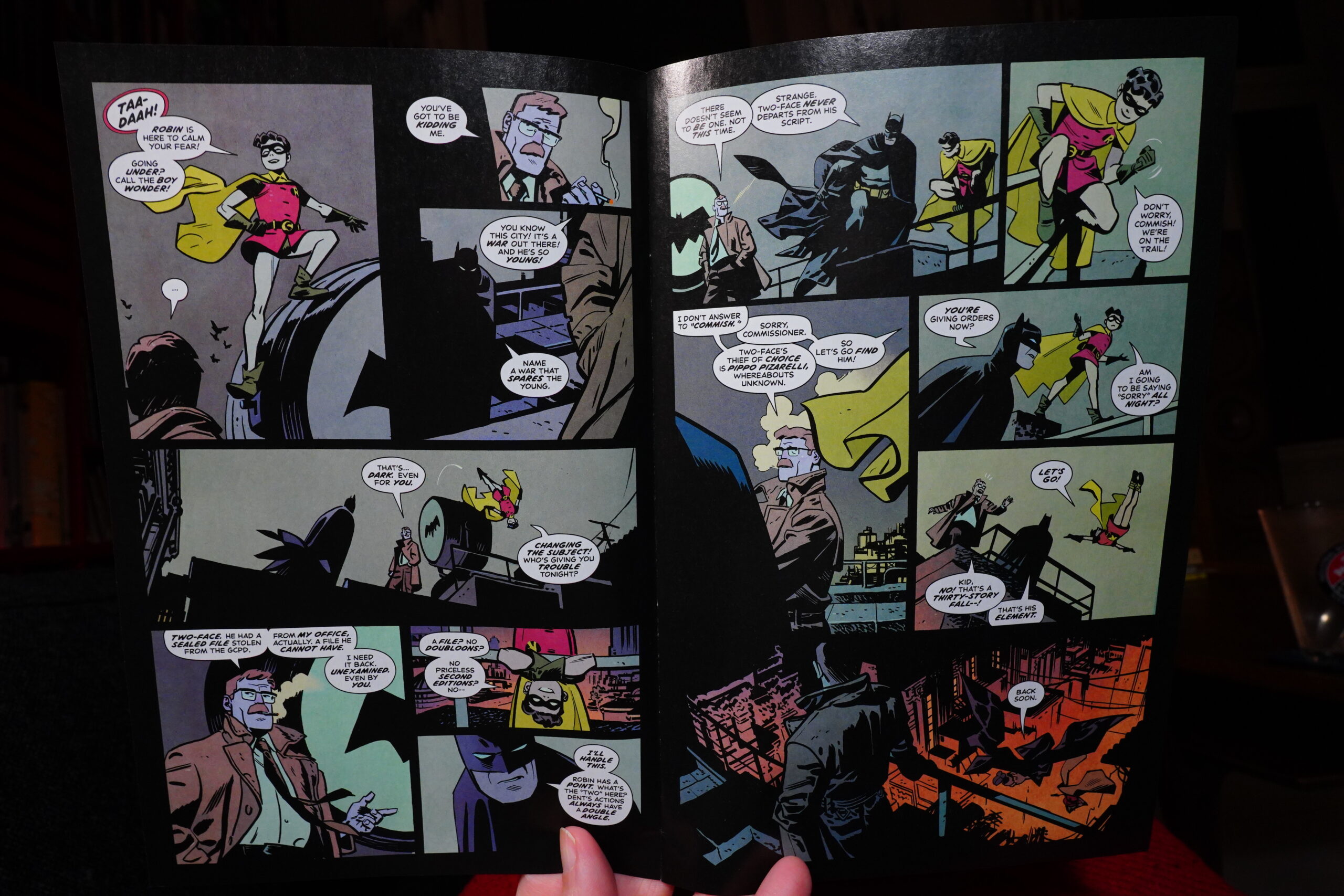
I’ve been trying to find some super-hero comics to read — it’s fun to have some monthly series coming in.
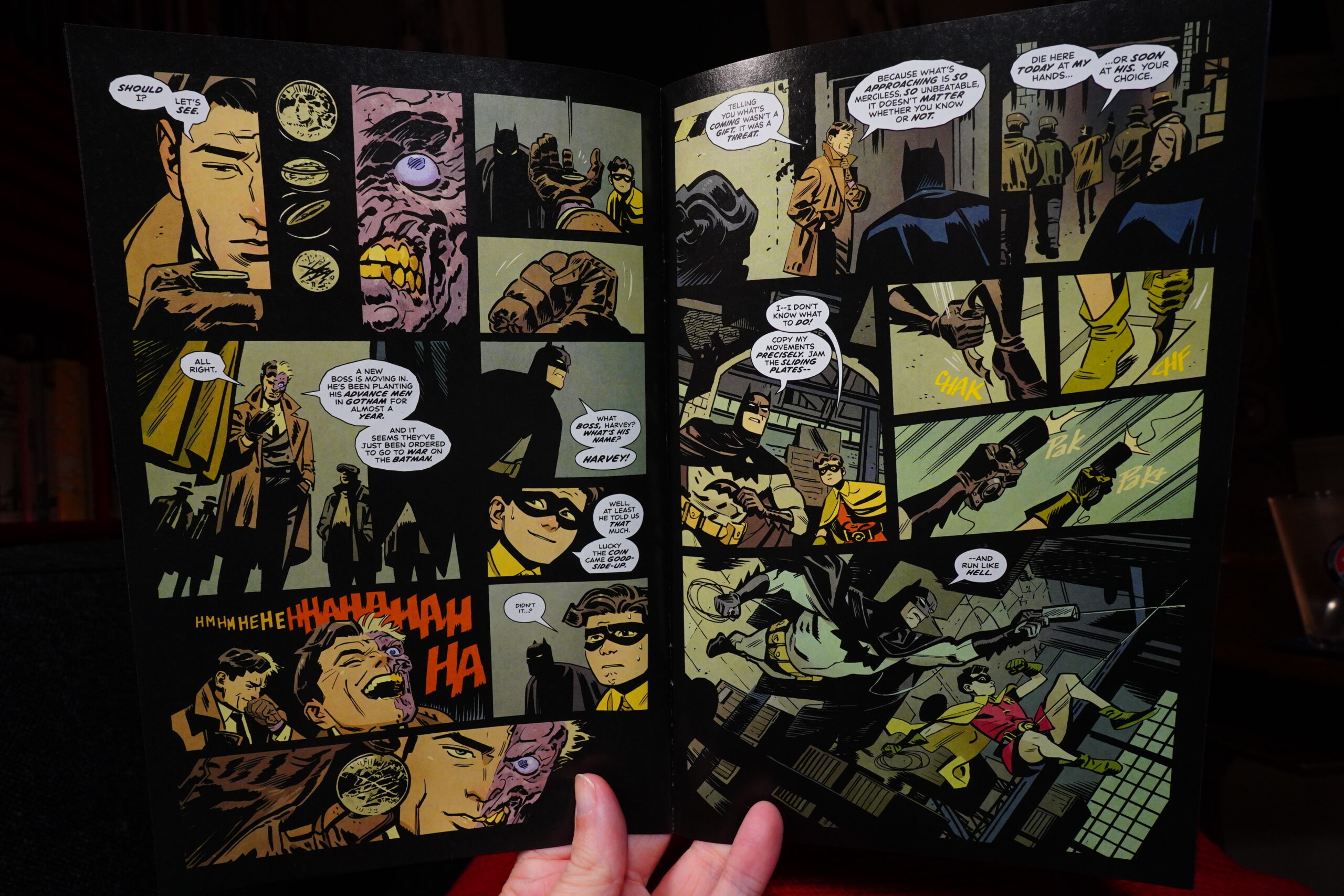
This isn’t it, though. It’s so weird — this is the first issue of a “Year One” thing, but it feels like I’ve dropped into the middle of a 30 issue series? I’m grateful that they skipped the tedious origin scenes, but this just feels off.
| Jane Siberry: Jane Siberry |  |
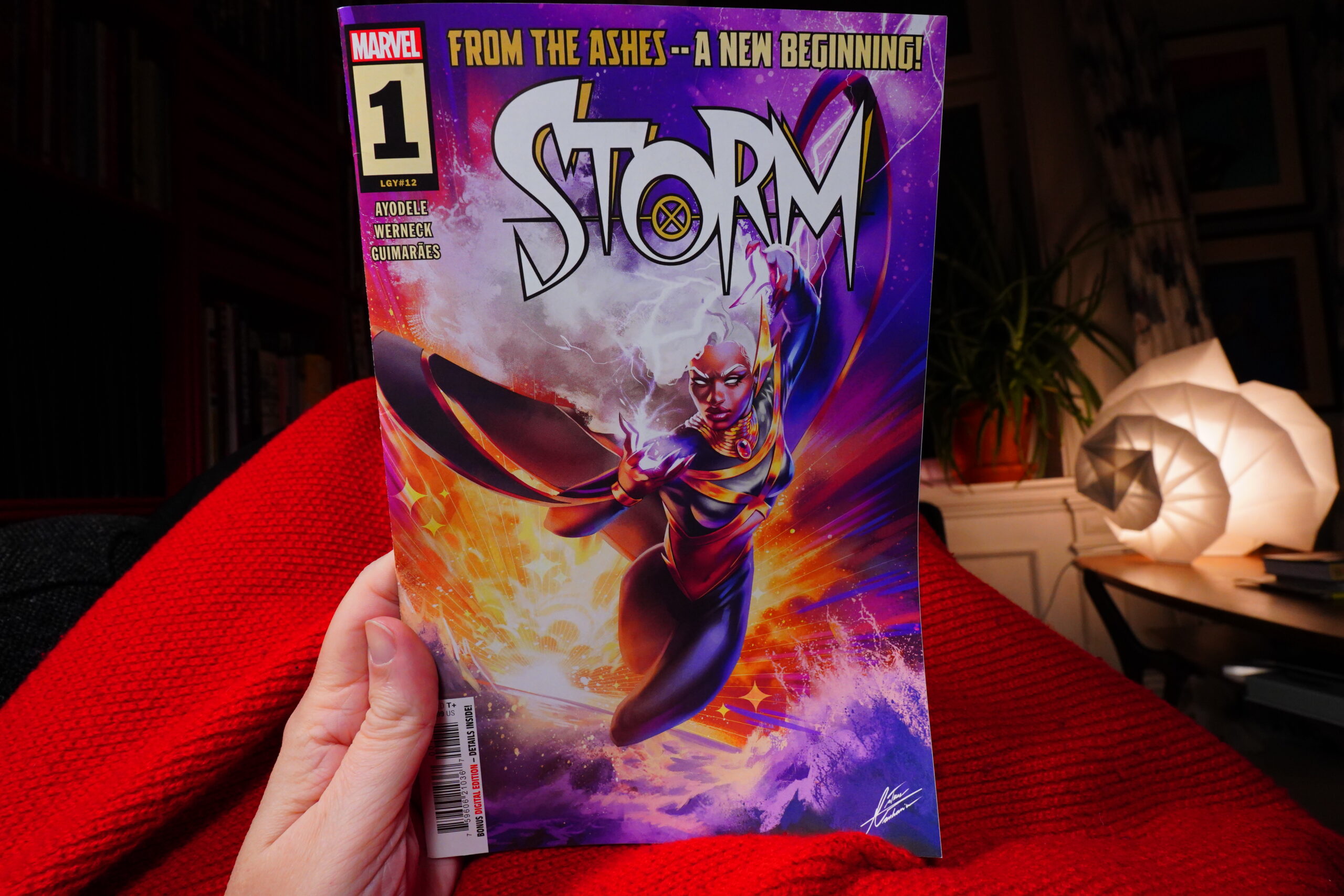
01:34: Storm #1 by Ayodele/Warneck (Marvel Comics)
So how about this one, then?
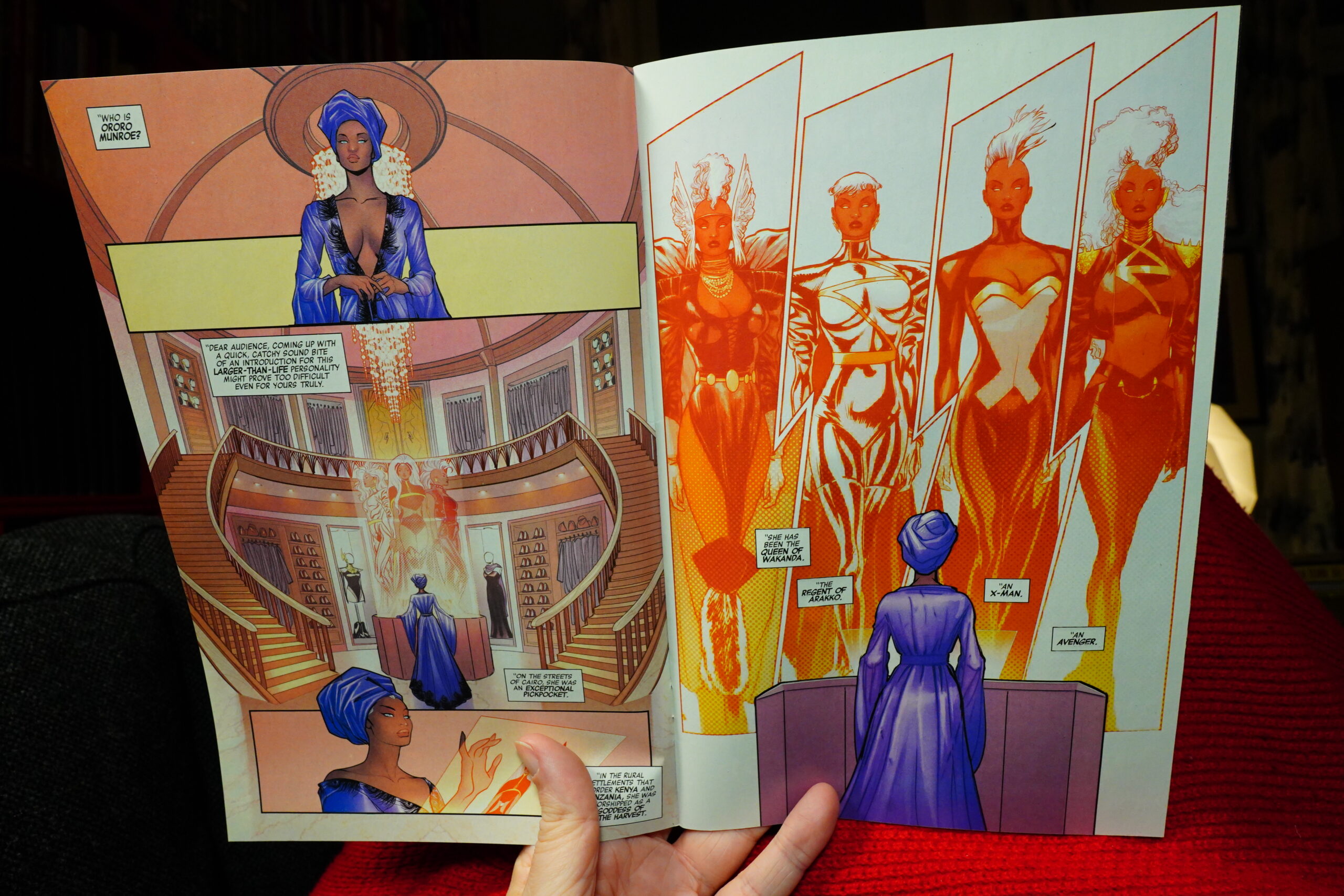
Hm…
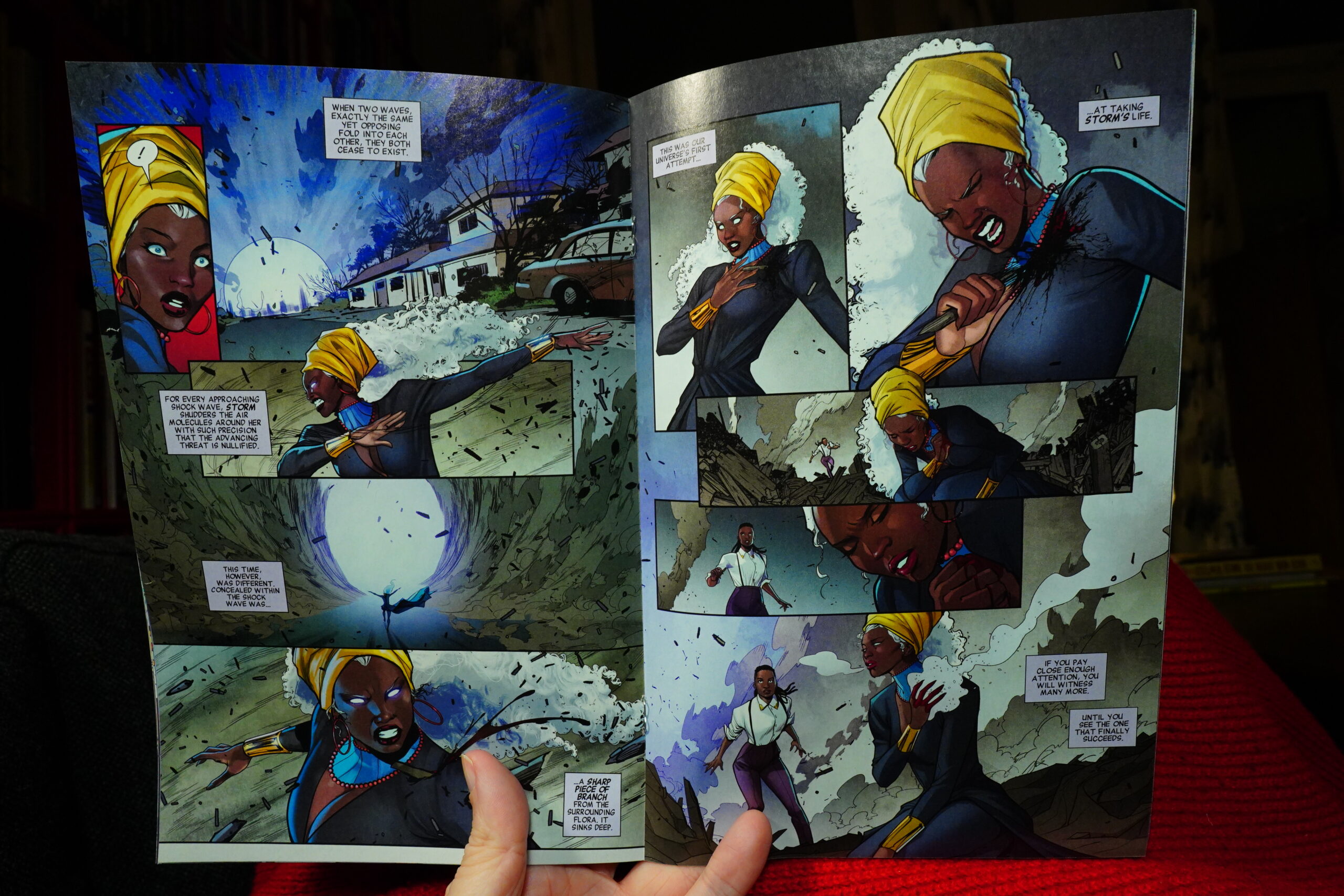
No, this is just tedious.
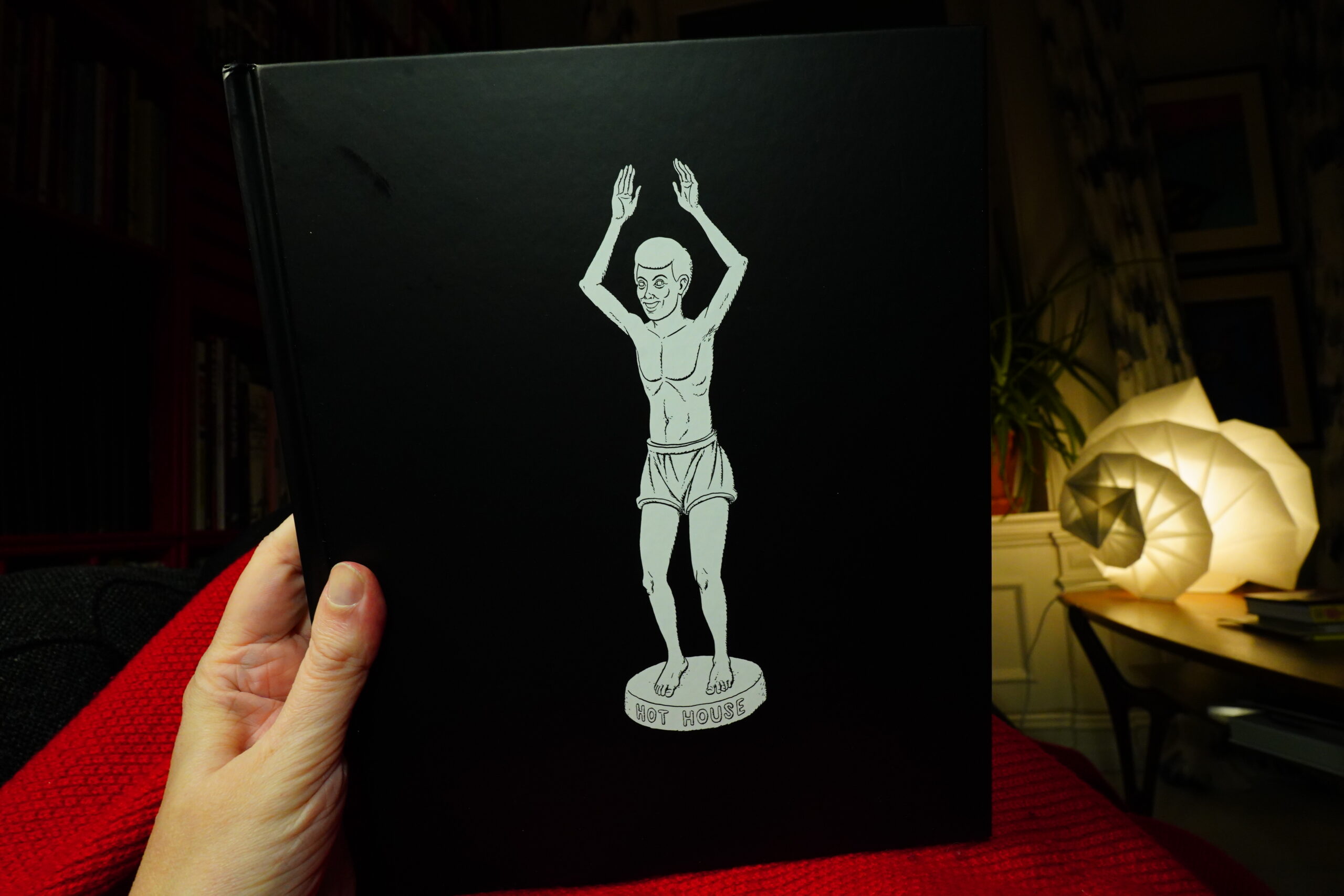
01:41: Hot House by John Hankiewicz (Fieldmouse Press)
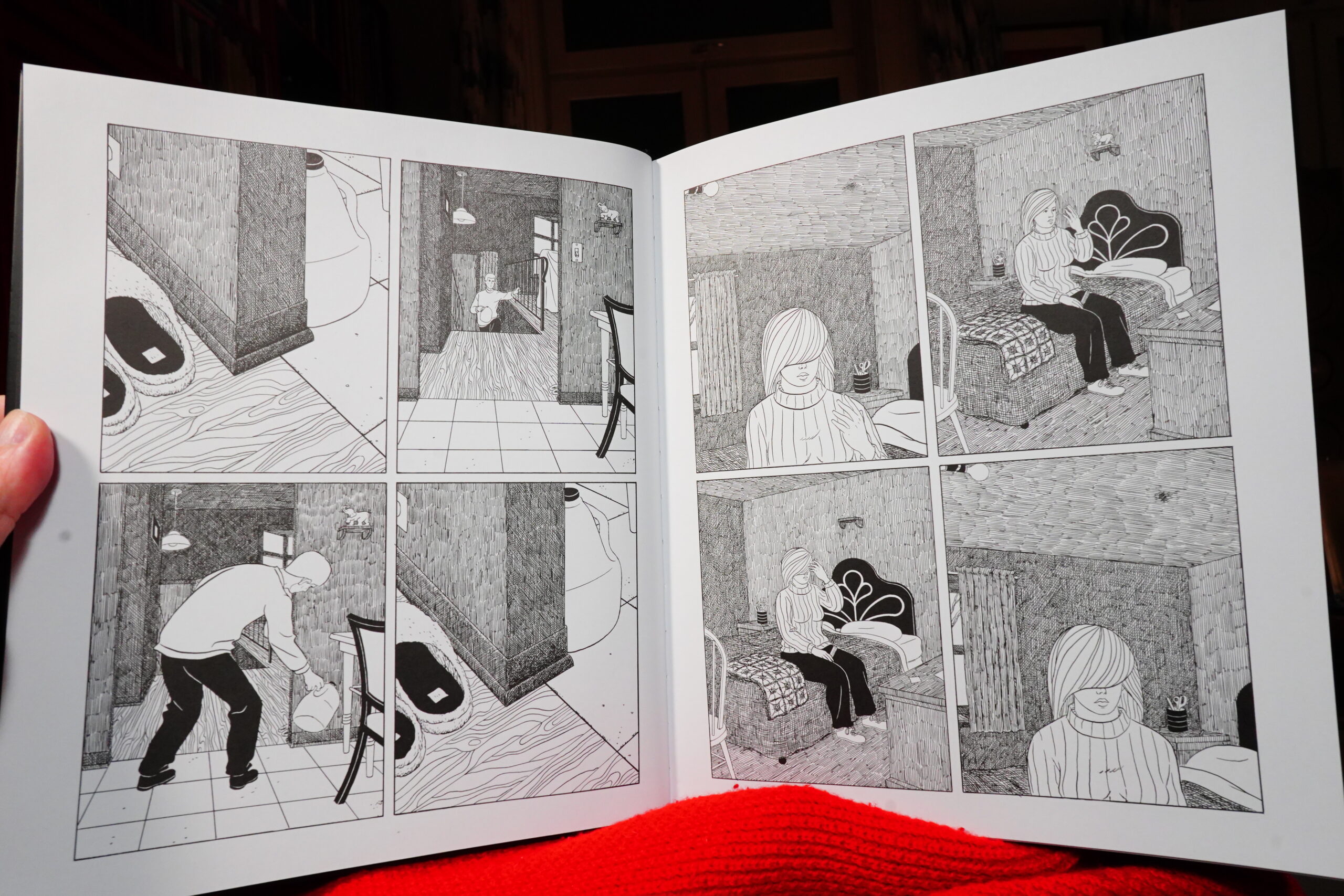
Wow, this is amazing.
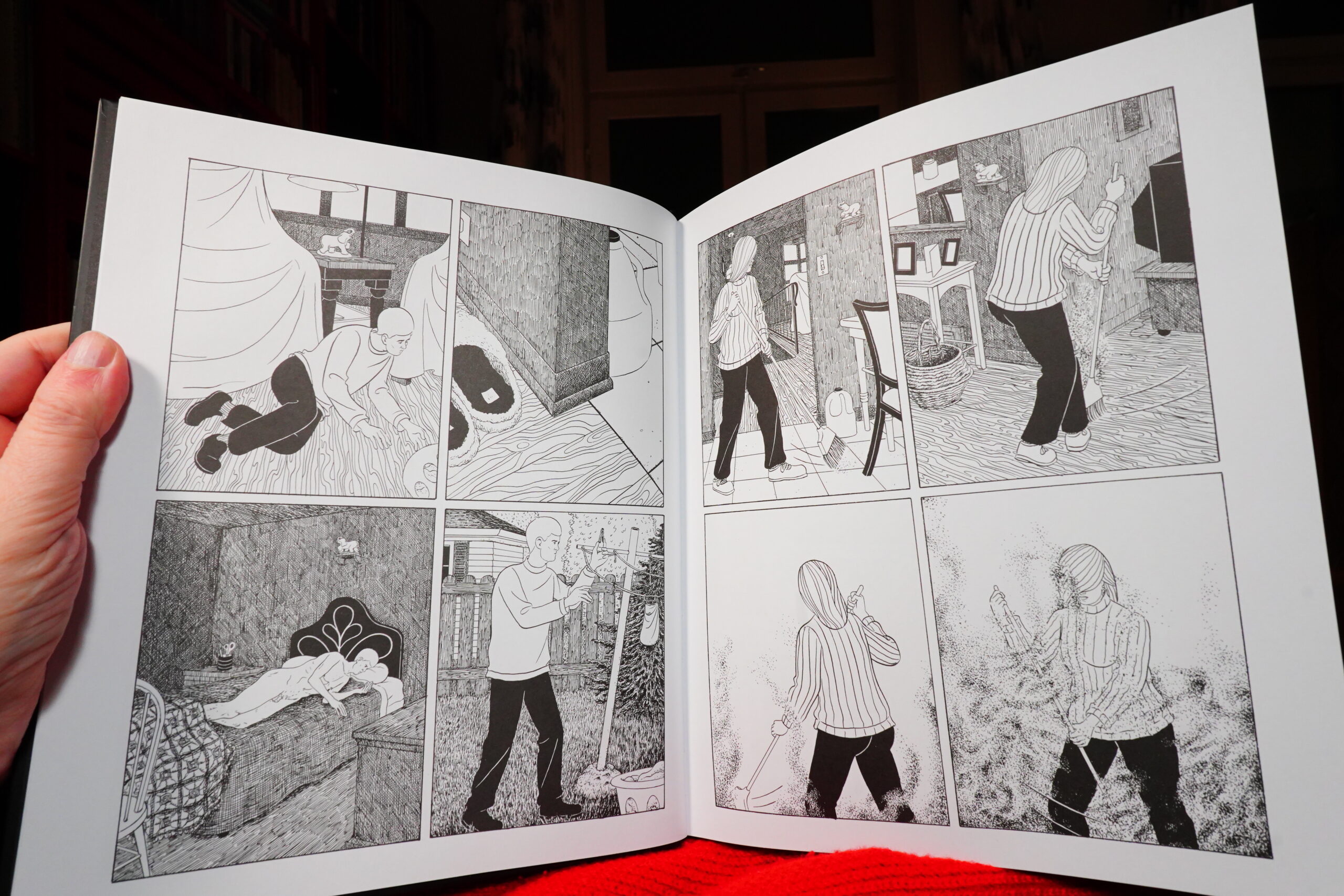
It’s got such a rhythm — it’s like reading a dance. The recurring actions happening on a kind of beat… it’s hypnotic.
A little masterpiece. You can get it from here.
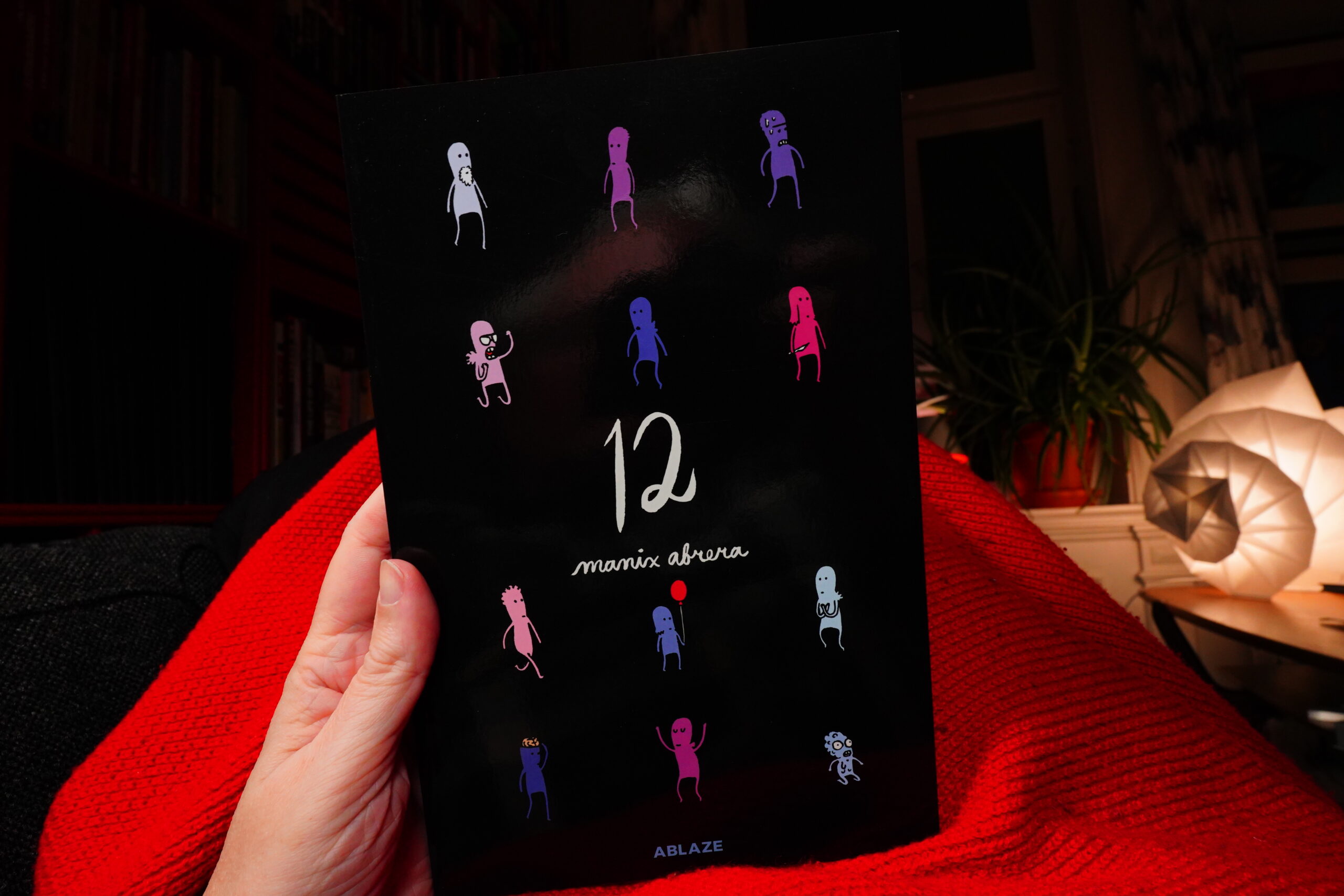
01:57: 12 by Manix Abrera (Ablaze)
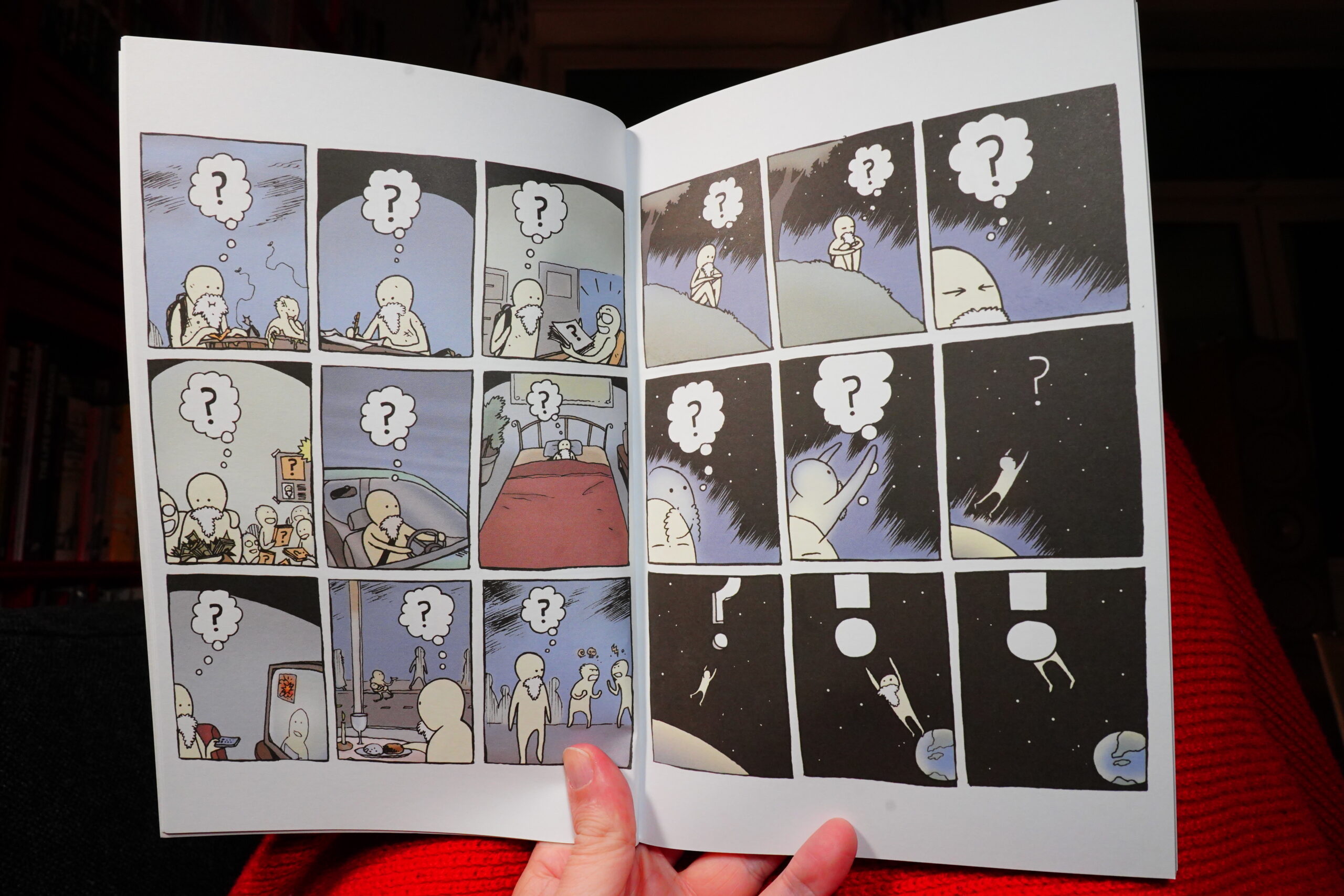
As usual with Ablaze books, it’s printed in a slightly wrong form factor — too big margins at the top and bottom here. But at least it’s not on the awful super-shiny paper they’ve used on several other books.
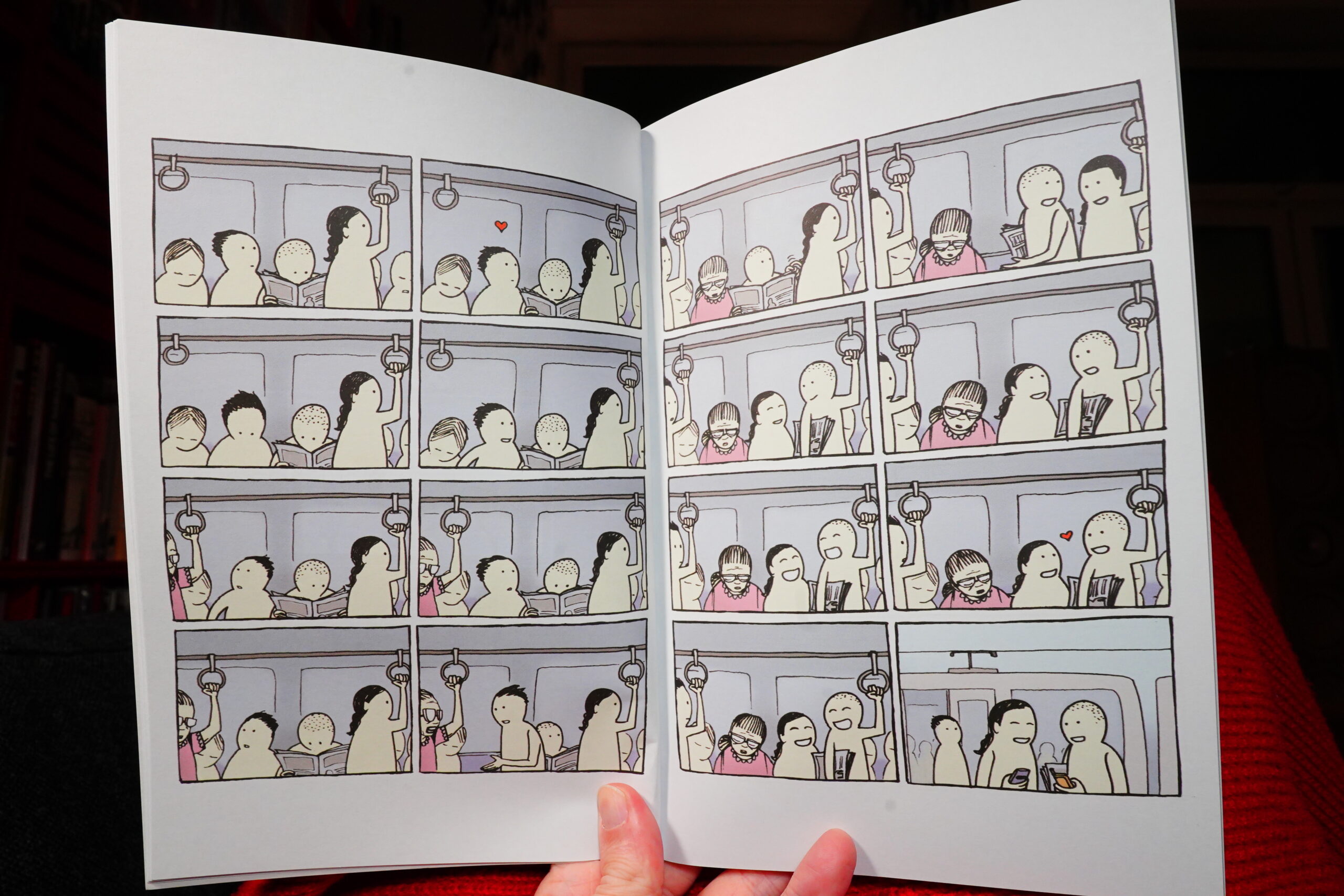
This book is a series of mostly shorter vignettes that are all ironic, and stuff. Don’t you think? This one is about how nice guys don’t get the hot chick. *rolls eyes*
OK, I think I’m giving up on Ablaze. The publish a lot of books that sound kinda interesting, but it’s almost all sheer piffle.
| New Order: Movement | 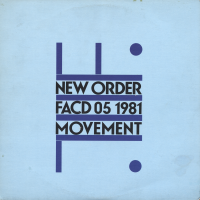 |
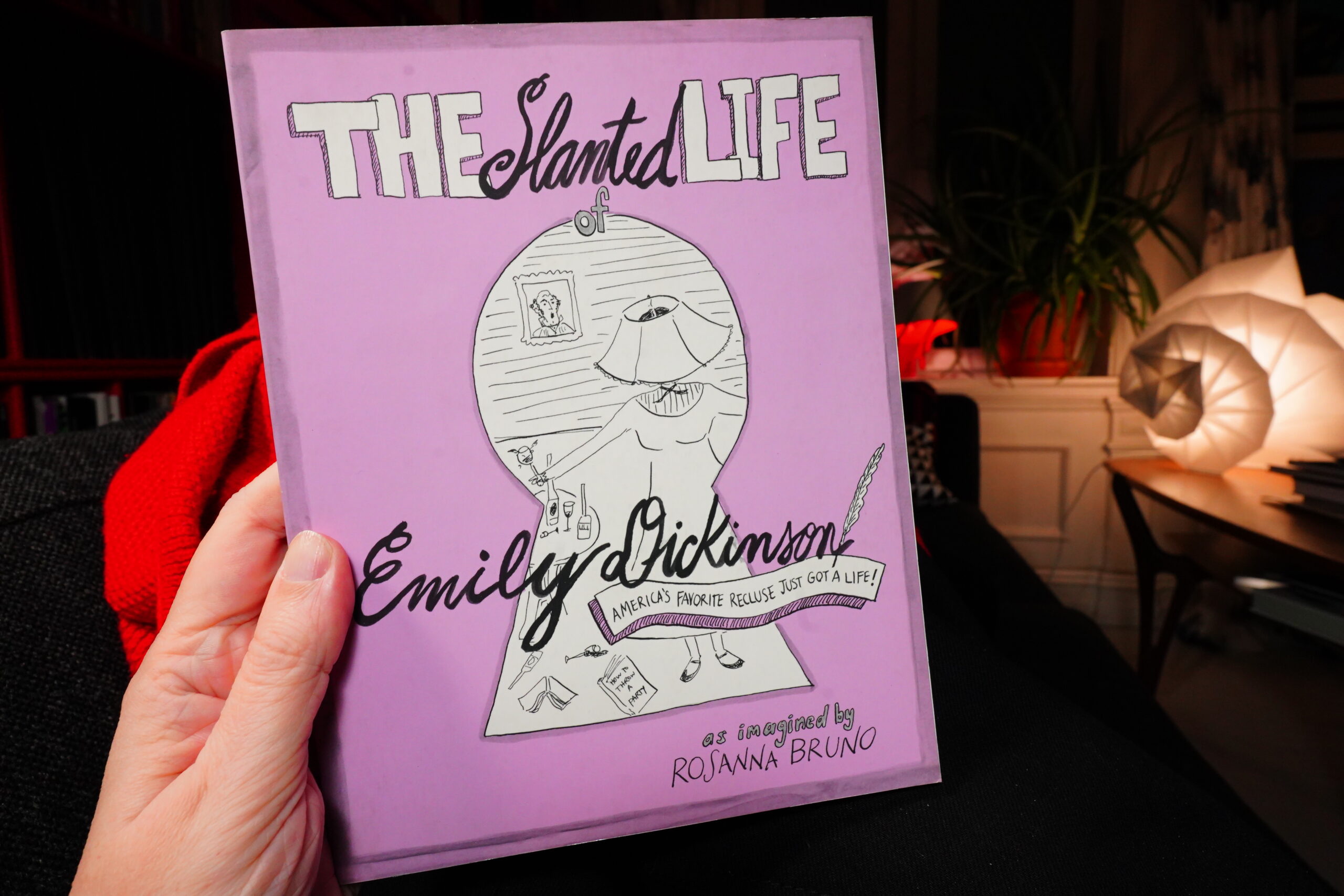
02:08: The Slanted Life of Emily Dickinson by Rosanna Bruno (Andrews McMeel)
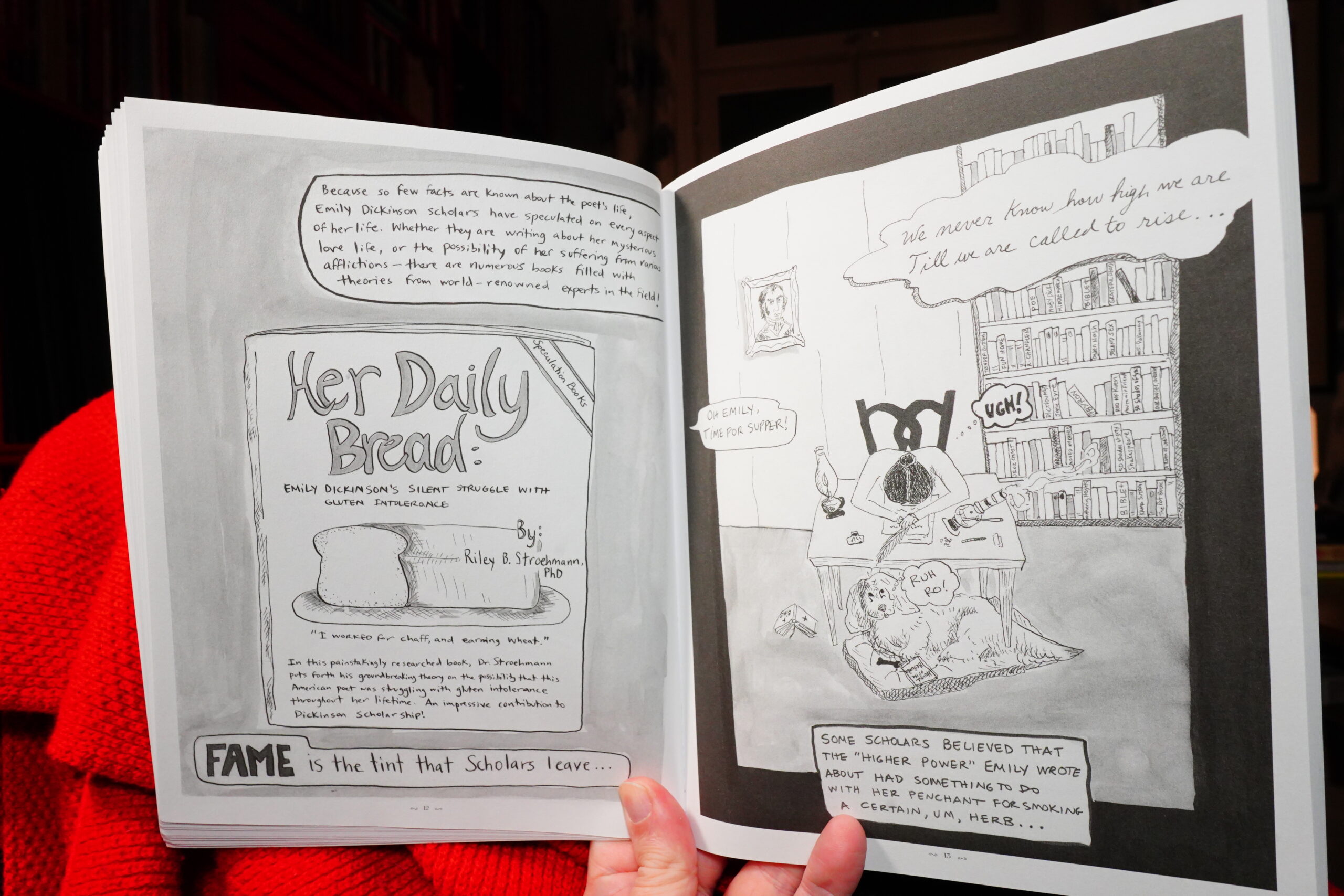
Speaking of things I’m not the target group for, I haven’t read any Dickinson for at least a couple of decades. But I thought this looked kinda interesting when I was in the bookstore — I thought the drawings had a kind of Roz Chastiness going on…
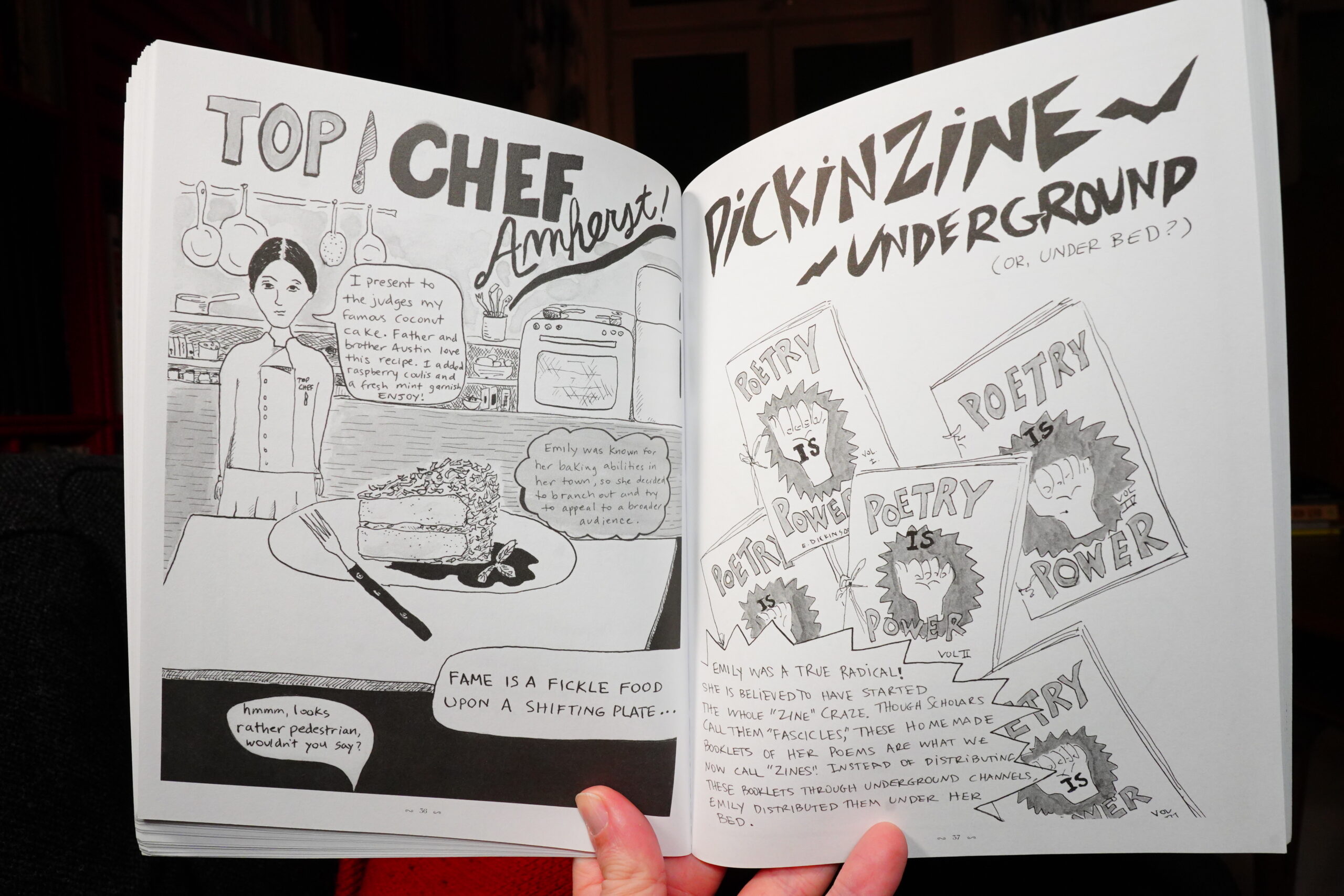
But I just didn’t find this to be all that funny. Perhaps if you’re really into Dickinson, the idea of her participating in Top Chef is really hilarious?
(I did find the bit about her distributing her zines under her bed to be amusing, though.)
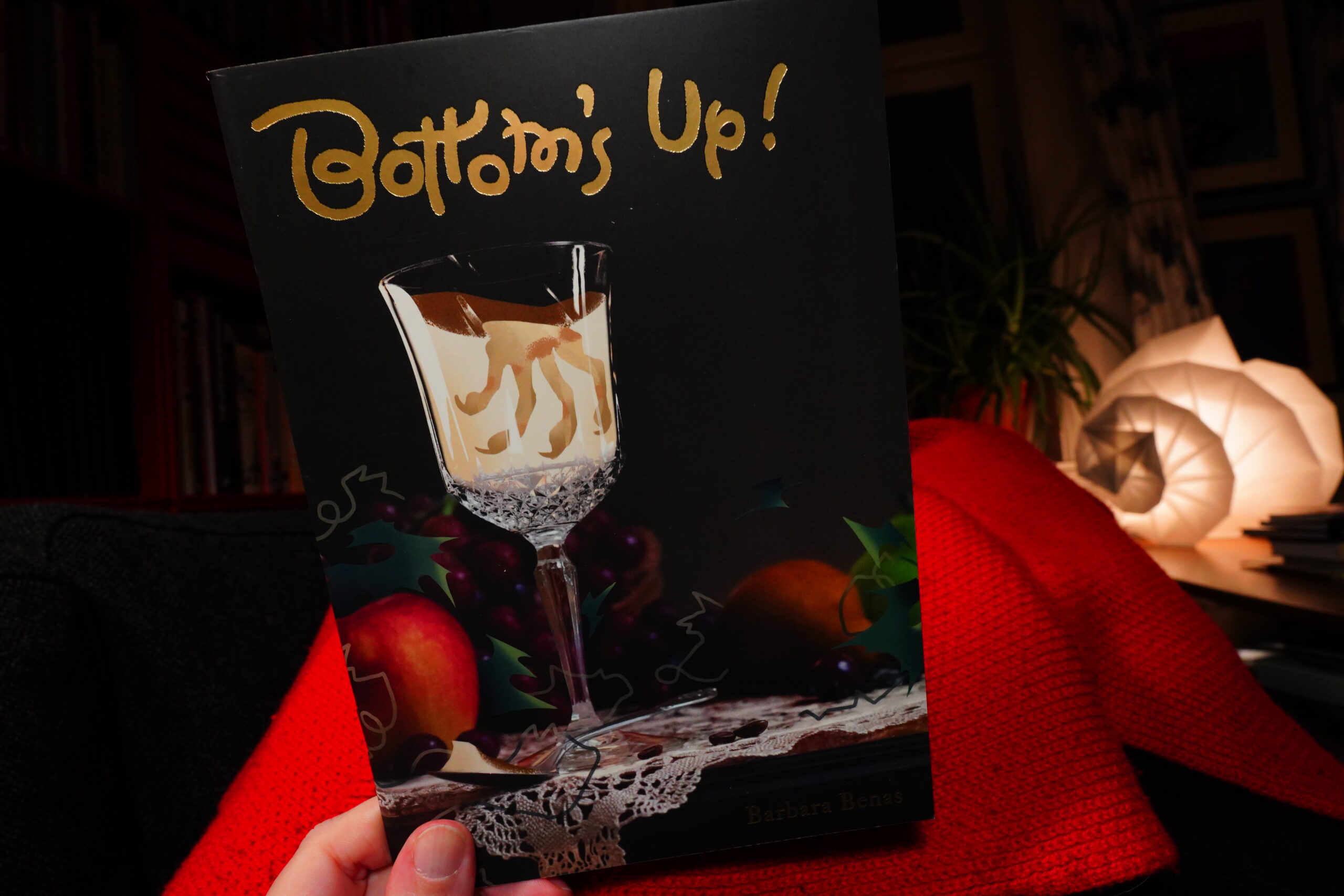
02:31: Bottom’s Up by Barbara Benas (Silver Sprocket)
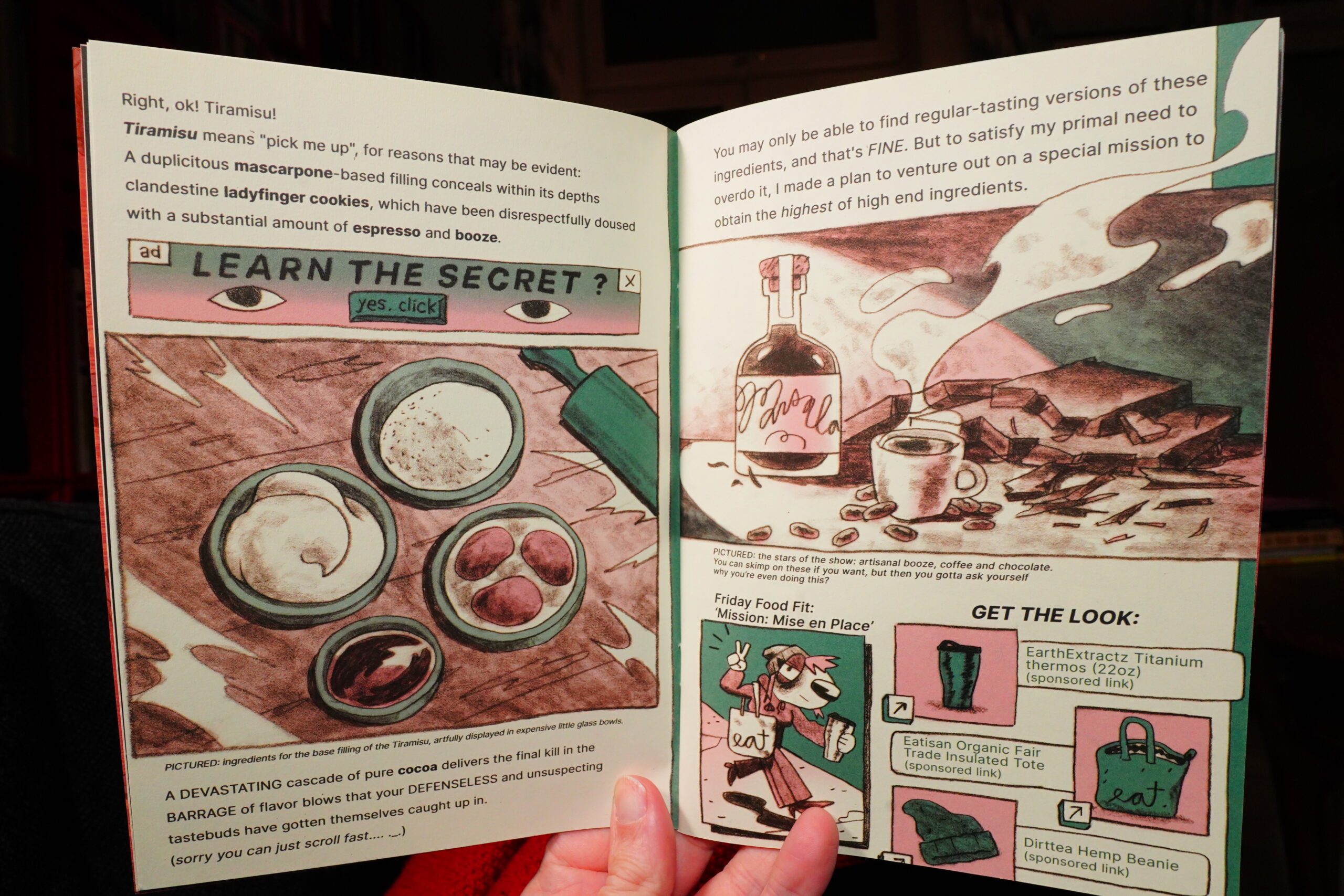
This, on the other hand, is quite amusing — it’s sort of structured as one of those overly verbose storytelling recipe web pages.
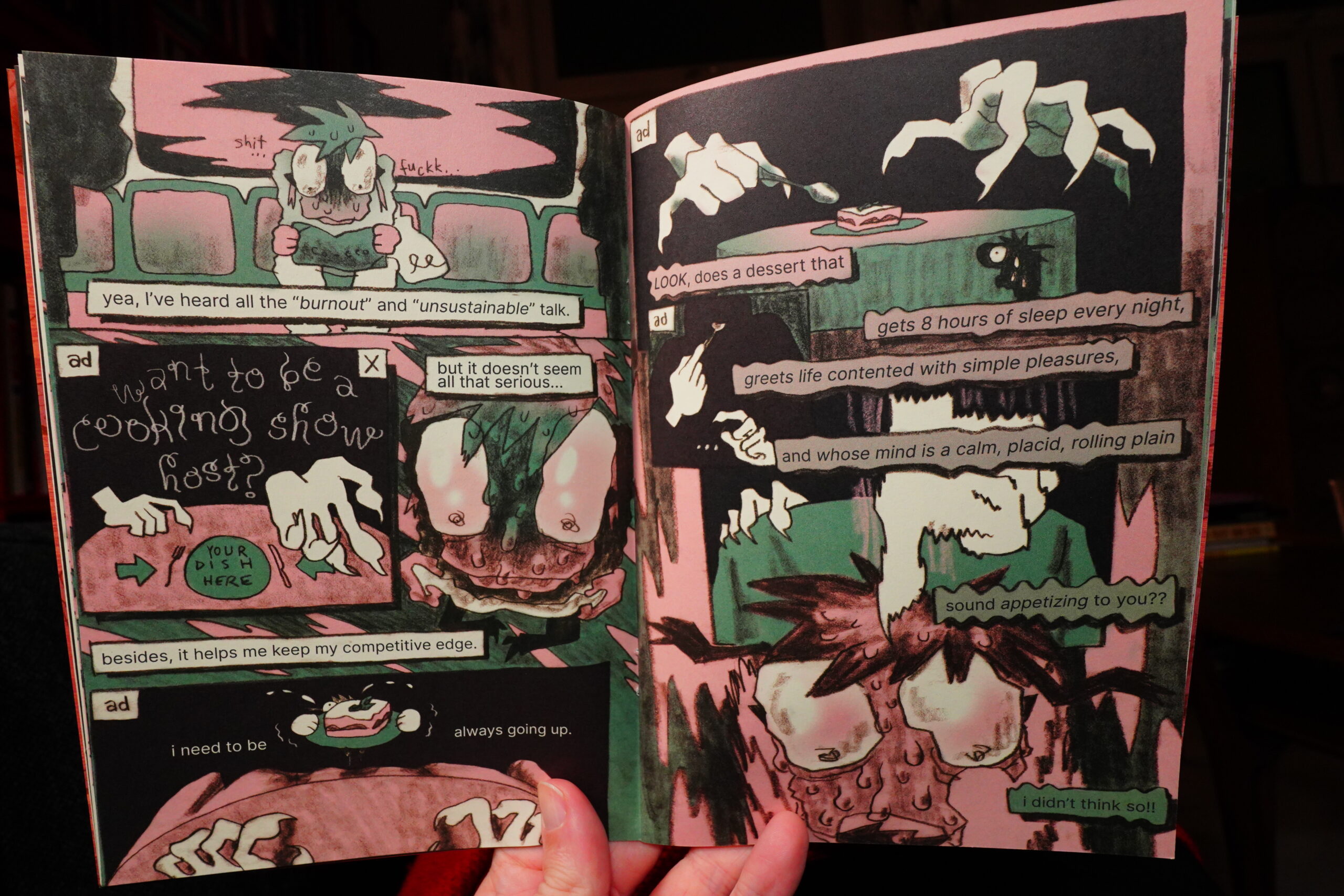
But things go totally off the rails in the story. It’s fun. And I love the expressiveness of the artwork.
| Kraftwerk: Computer World | 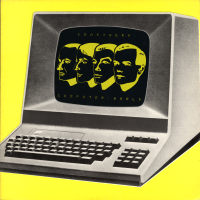 |
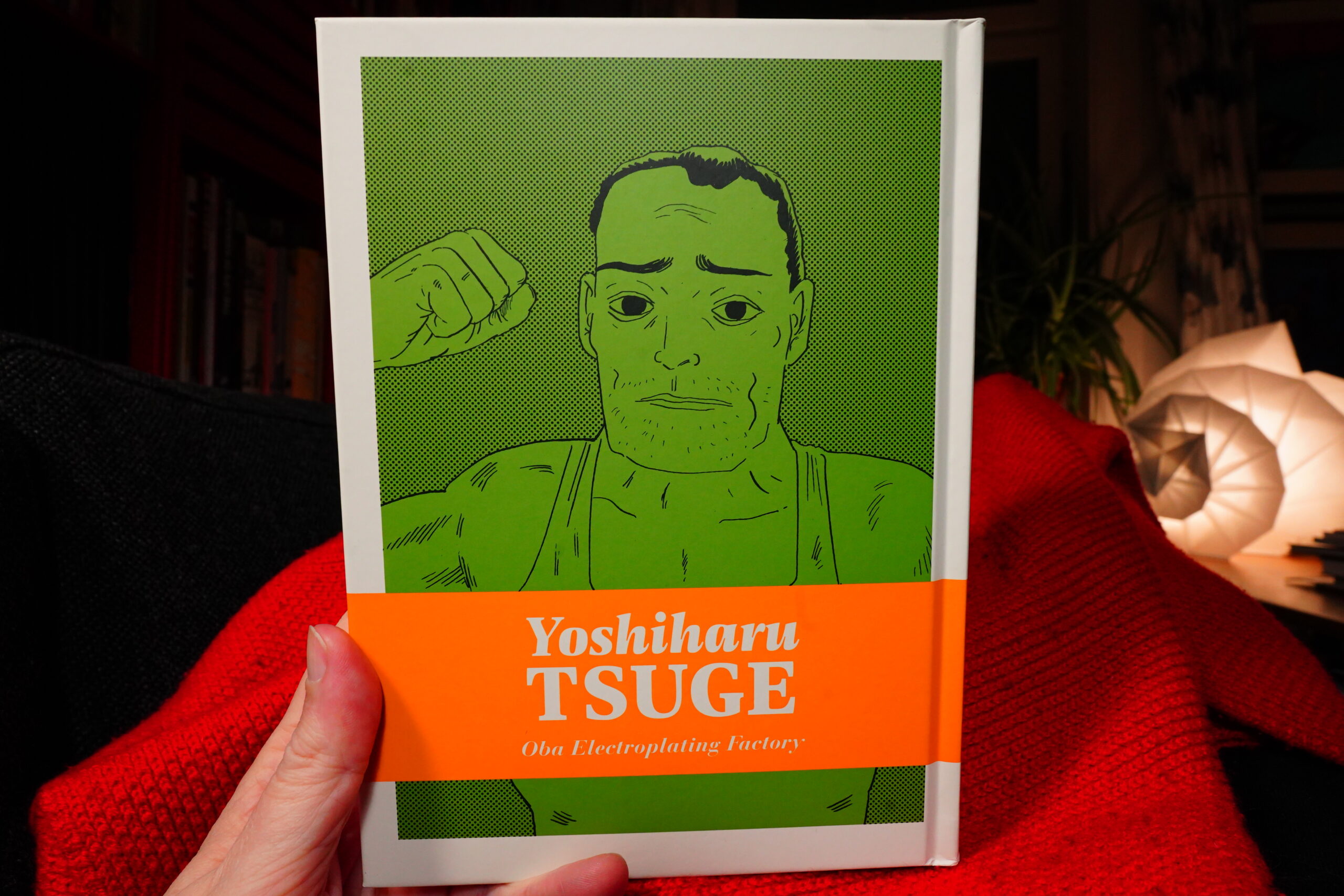
02:37: Oba Electroplating Factory by Yoshiharu Tsuge (Drawn & Quarterly)
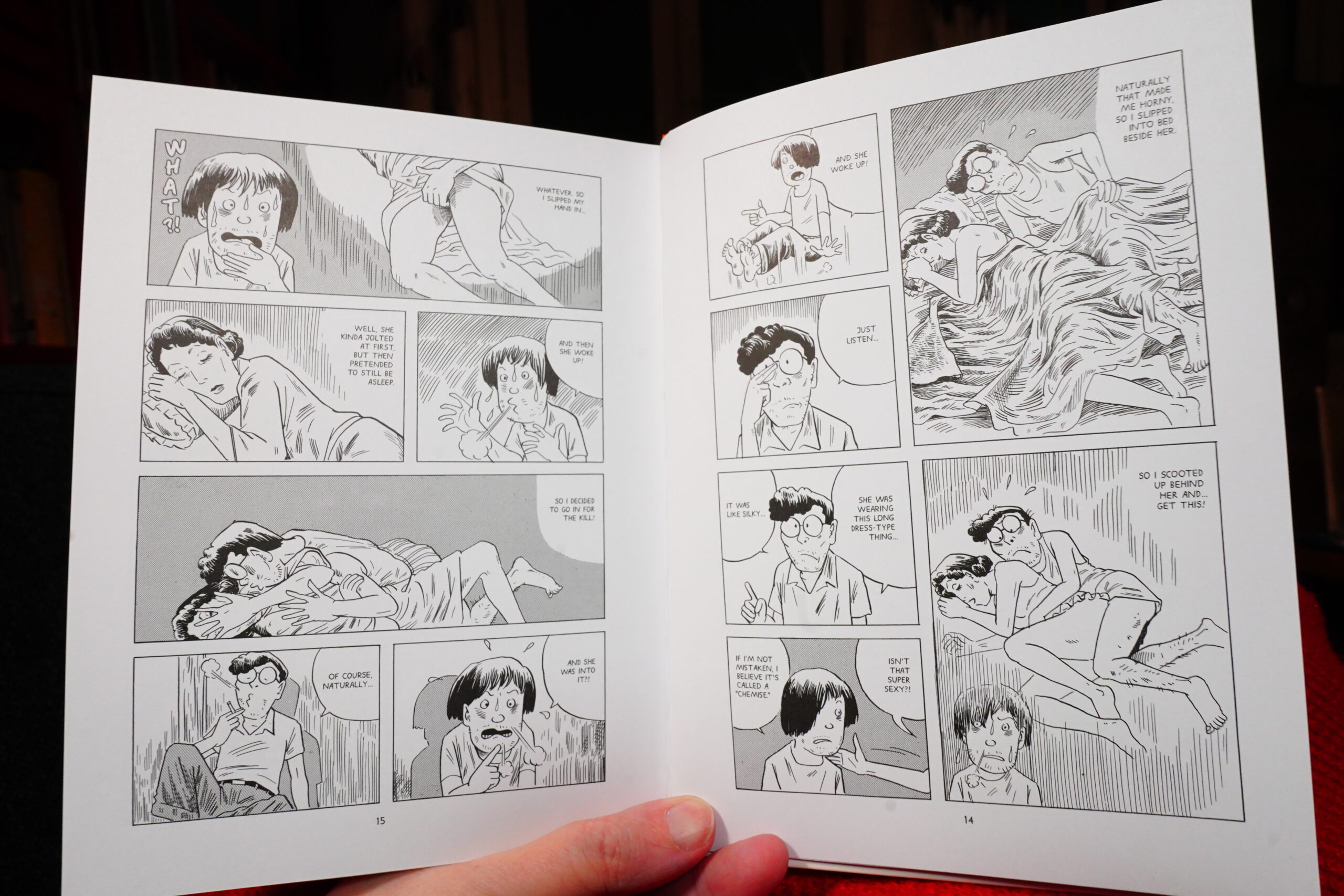
Well, that’s romantic…
Hm, perhaps I should take a nap.
[time passes]
Man, I must have been tired. That was no nap.
| Various: The Fruit of the Original Sin |  |
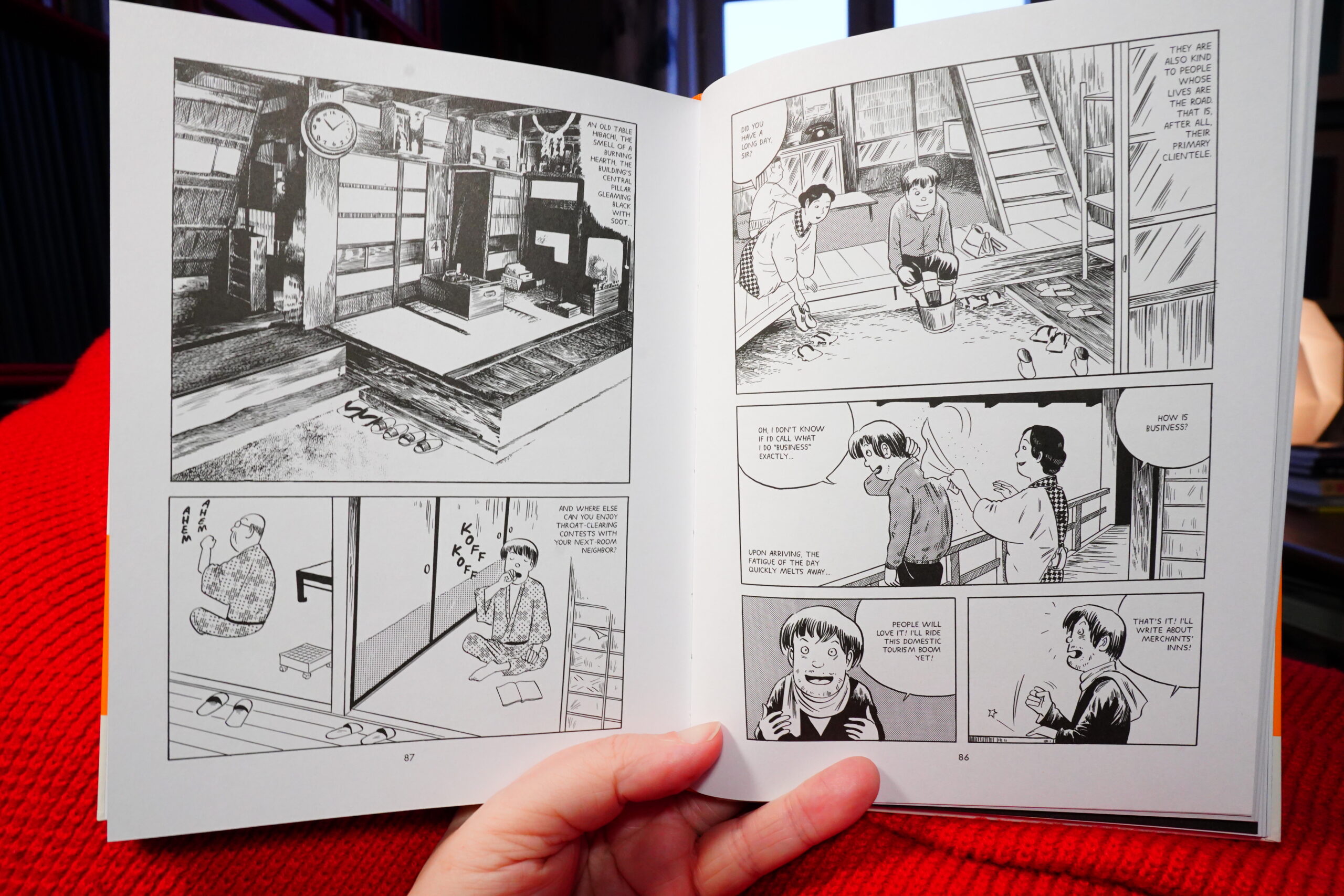
This is even more autobio than normal from Tsuge, I think? Several of the stories overlap vaguely in the events they tell, so Tsuge seems to be mining his life in depth for events to depict.
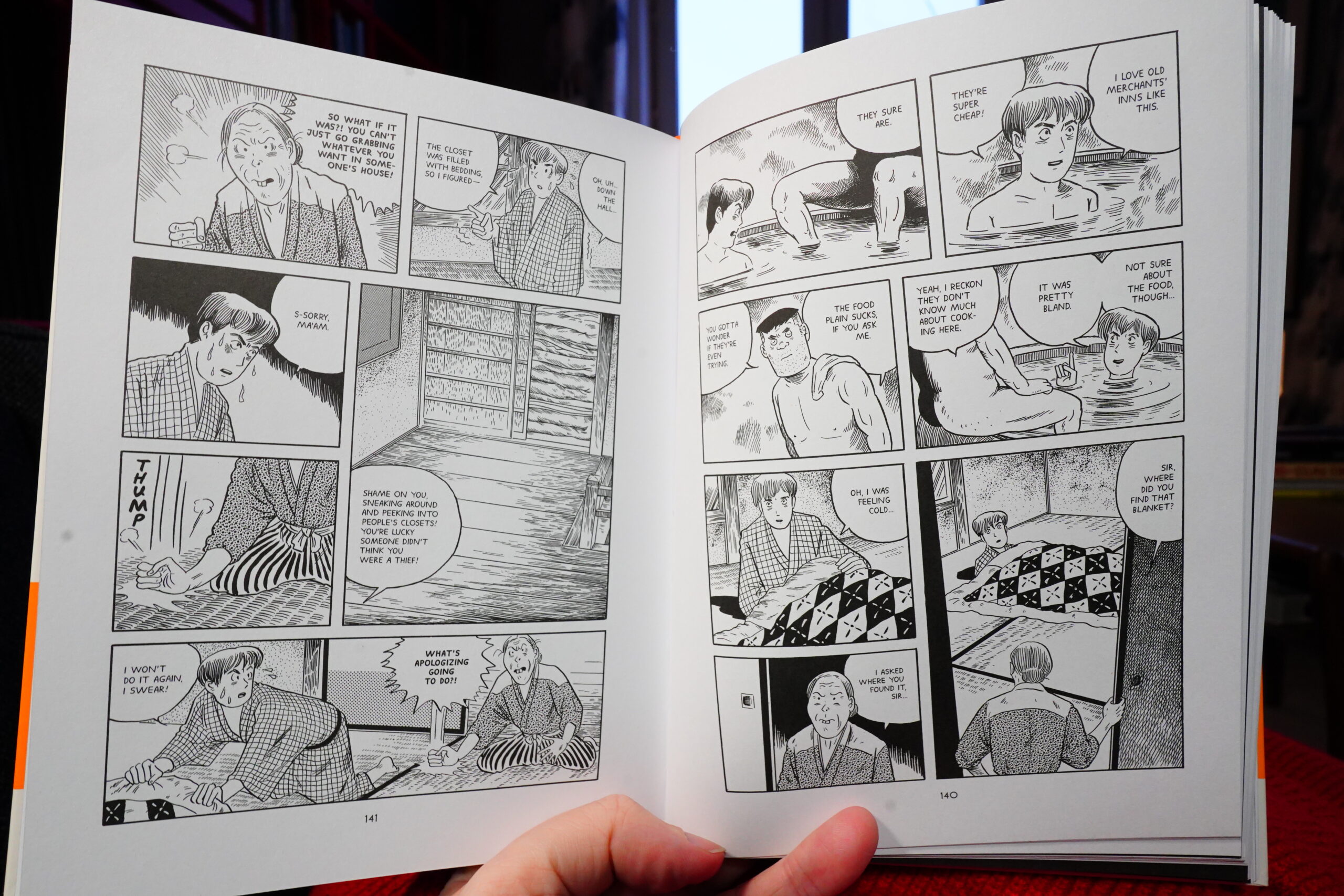
And… I mean, I’ve liked the previous Tsuge volumes fine, but I think this is even better? Tsuge is sometimes offputting in the way he plays up his tough guy act, trying to be all transgressive and stuff, but this collection seems more honest than most of them.
(And the book is just taken up with less than 15% essays from that guy who does all those essays. Yay! I think he was up to 40% in some other book…)
| Various: Methods of Dance (1) | 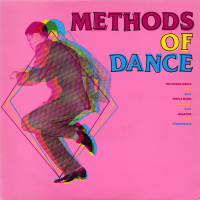 |
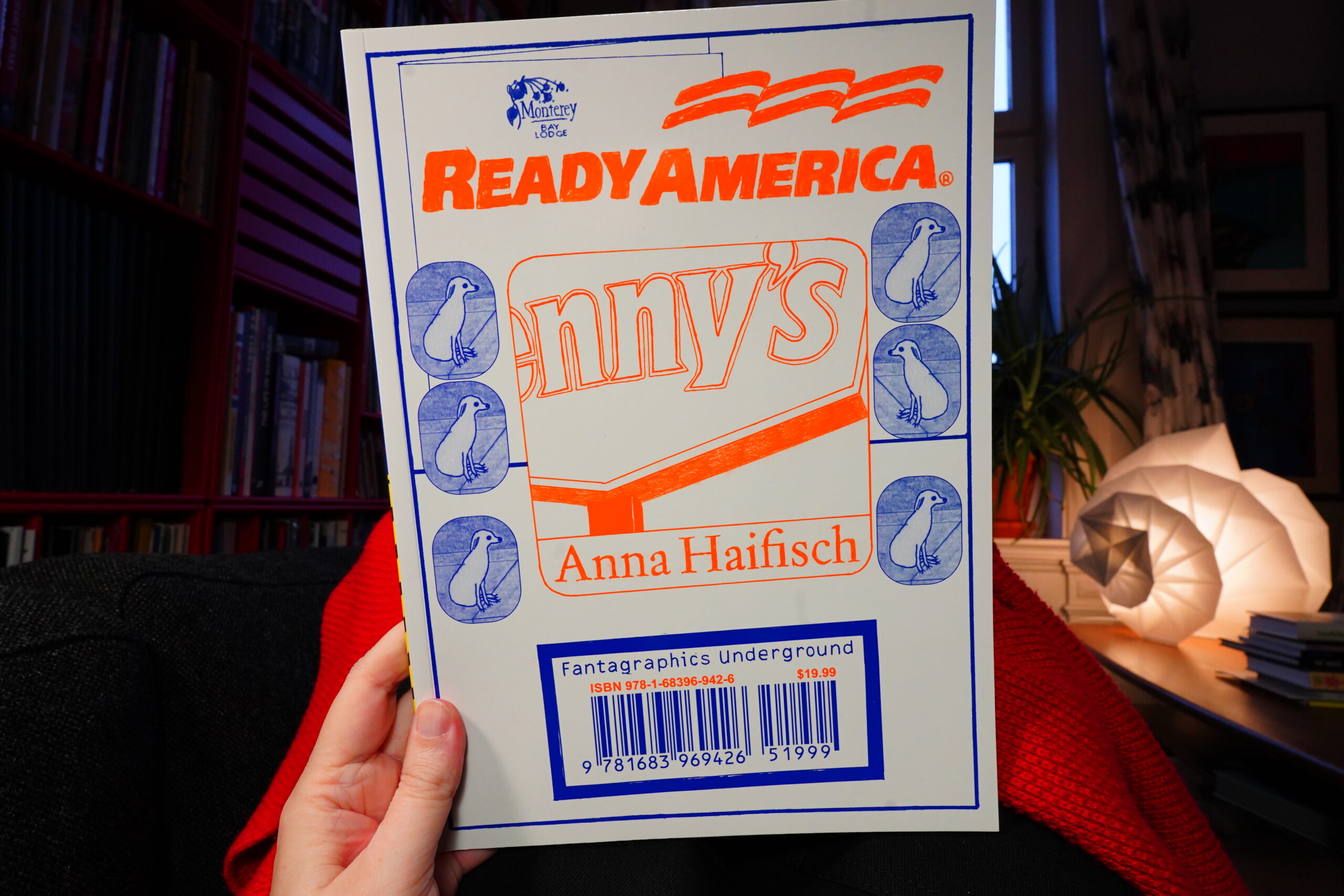
13:15: Ready America by Anna Haifisch (Fantagraphics)
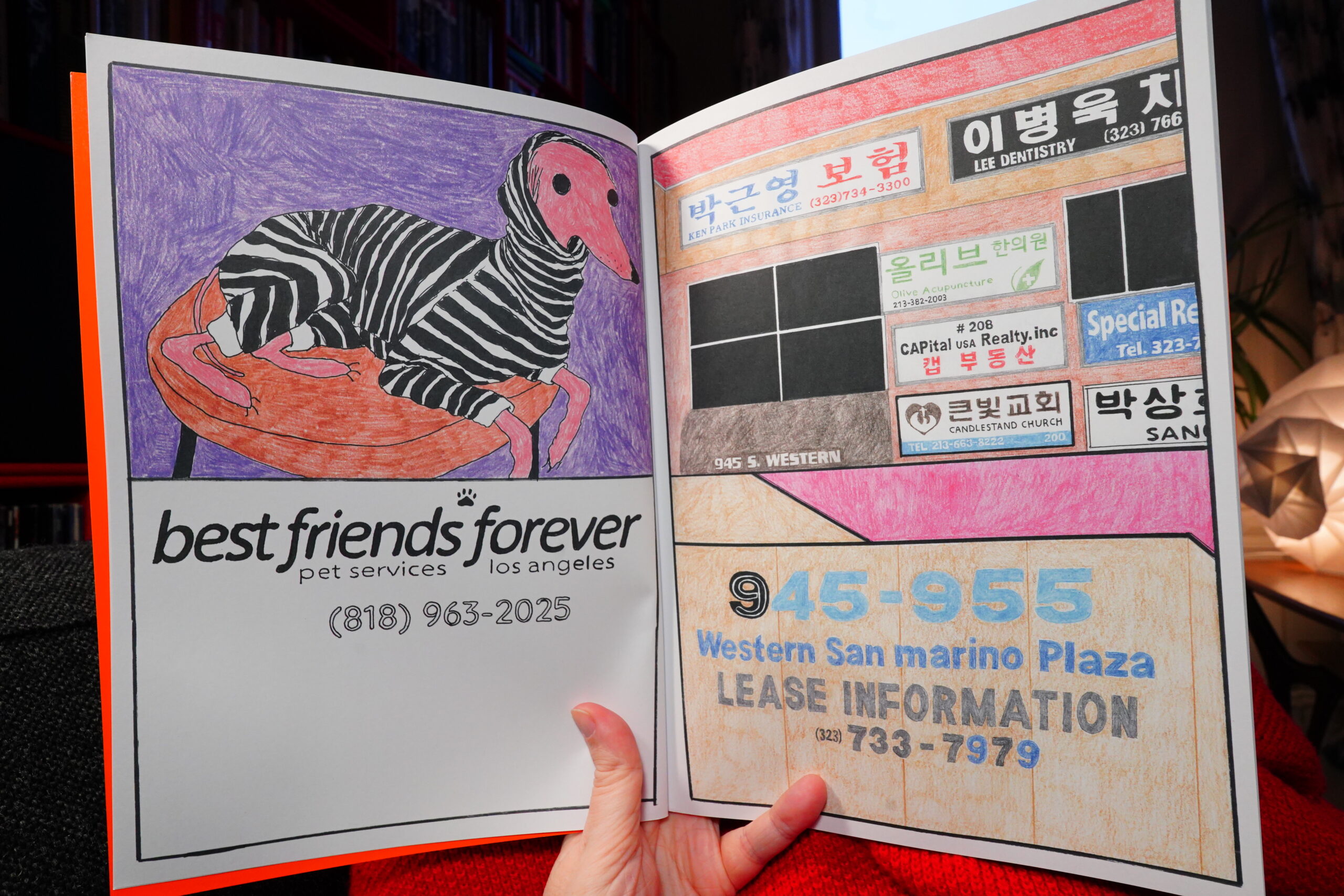
Haifisch spent some time in LA and this book is the result.

It’s basically a collection of drawings of LA things — mostly reproductions of various signs and stuff. I like it.
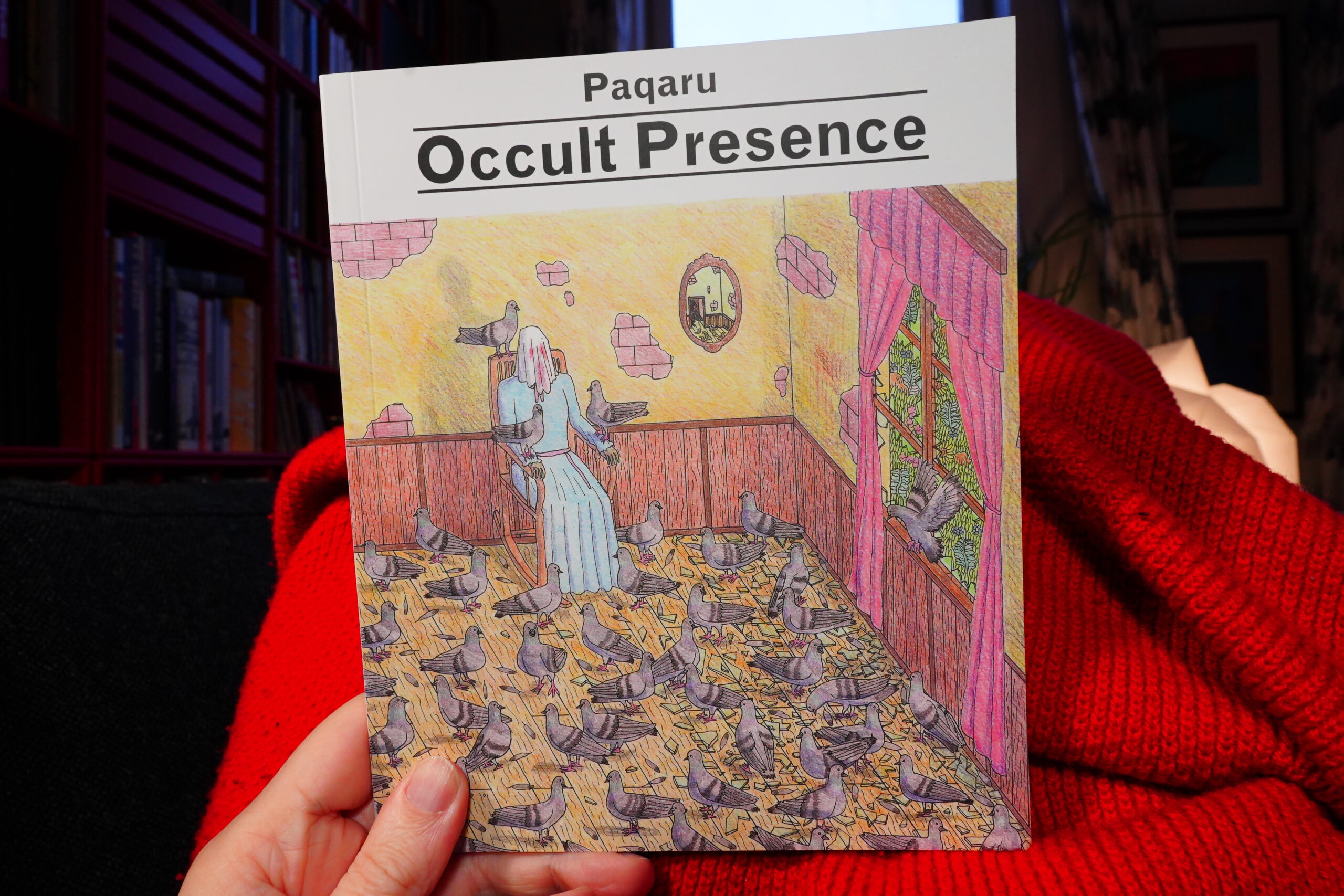
13:24: Occult Presence by Paqaru (Floating World Comics)
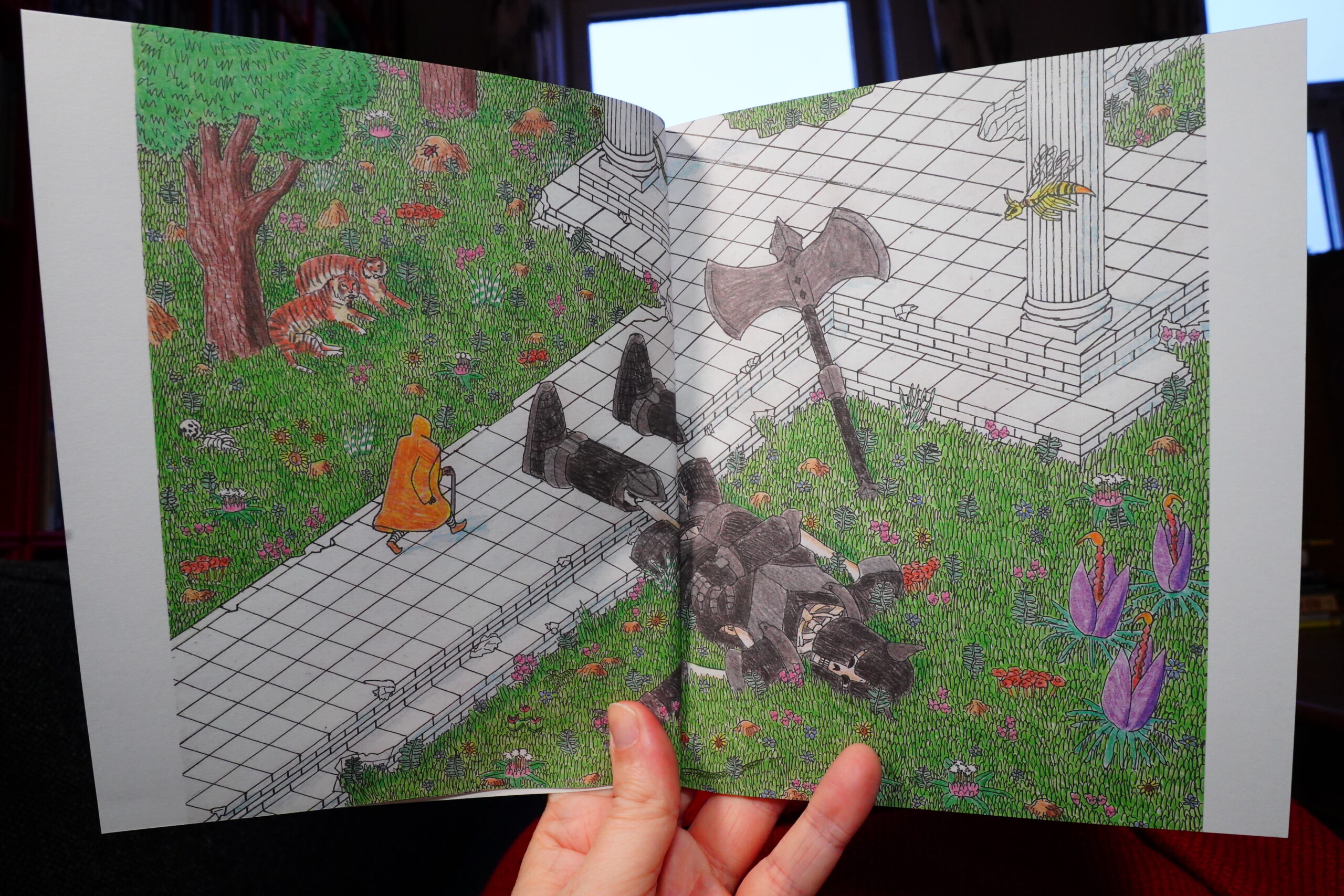
This is a collection of drawings that mostly seem inspired by video games?
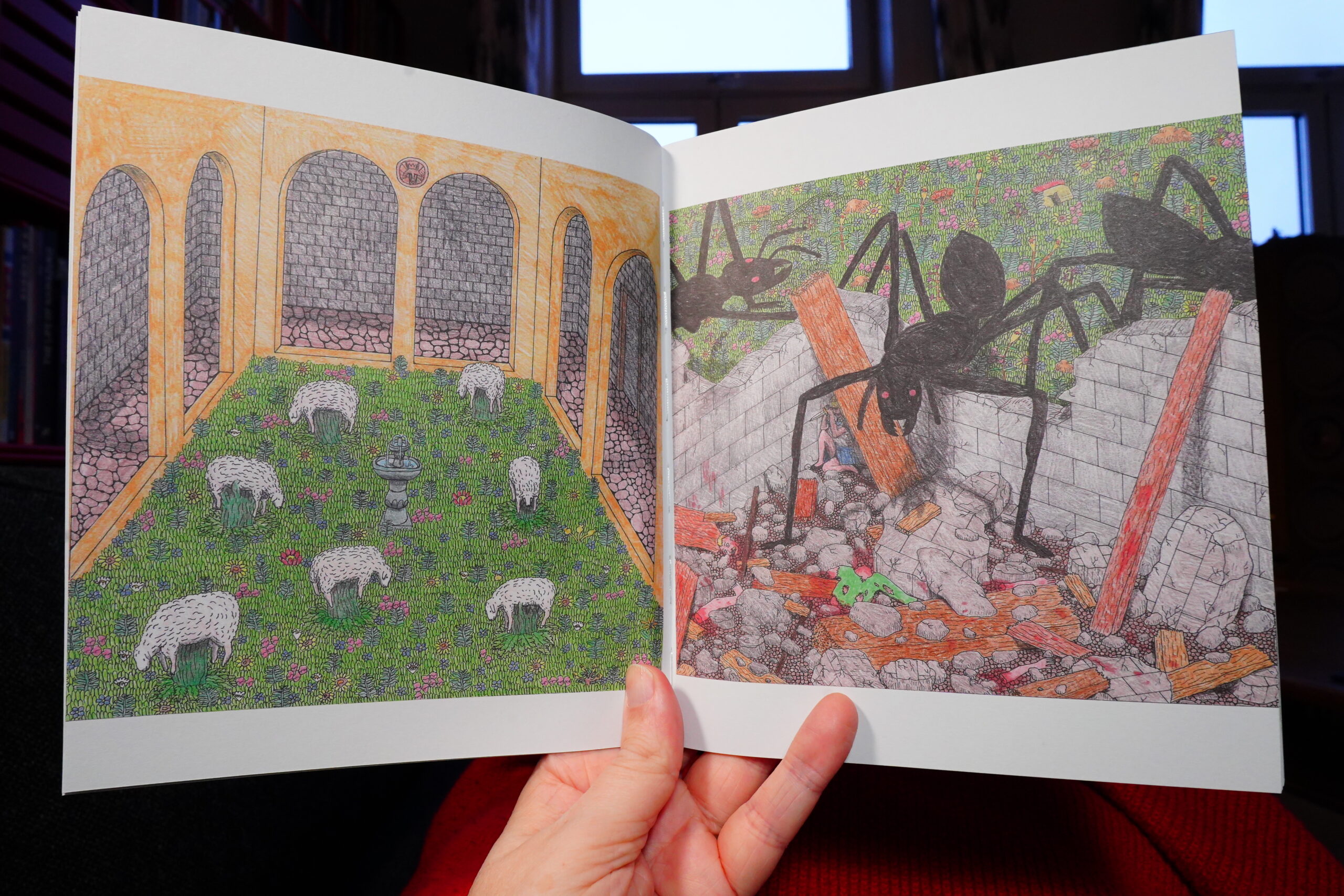
So lots of gruesome stuff, and no narrative. I like the obsessive noodlyness of the rendering, but it’s not really my kind of thing otherwise.
| A Certain Ratio: To Each… | 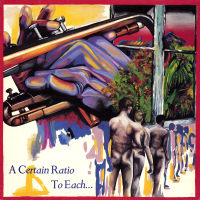 |
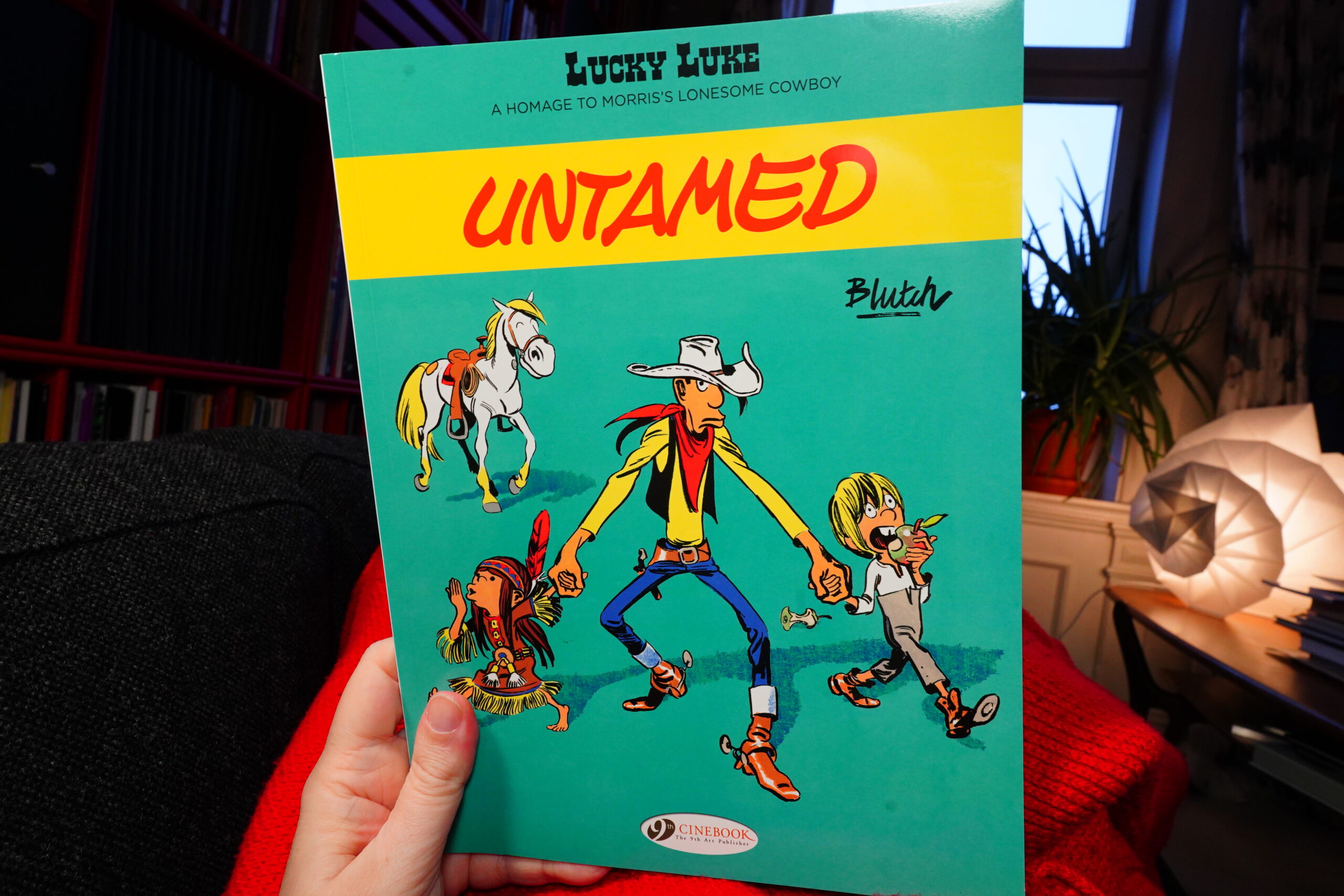
13:29: Lucky Luke: Untamed by Blutch (Cinebook)
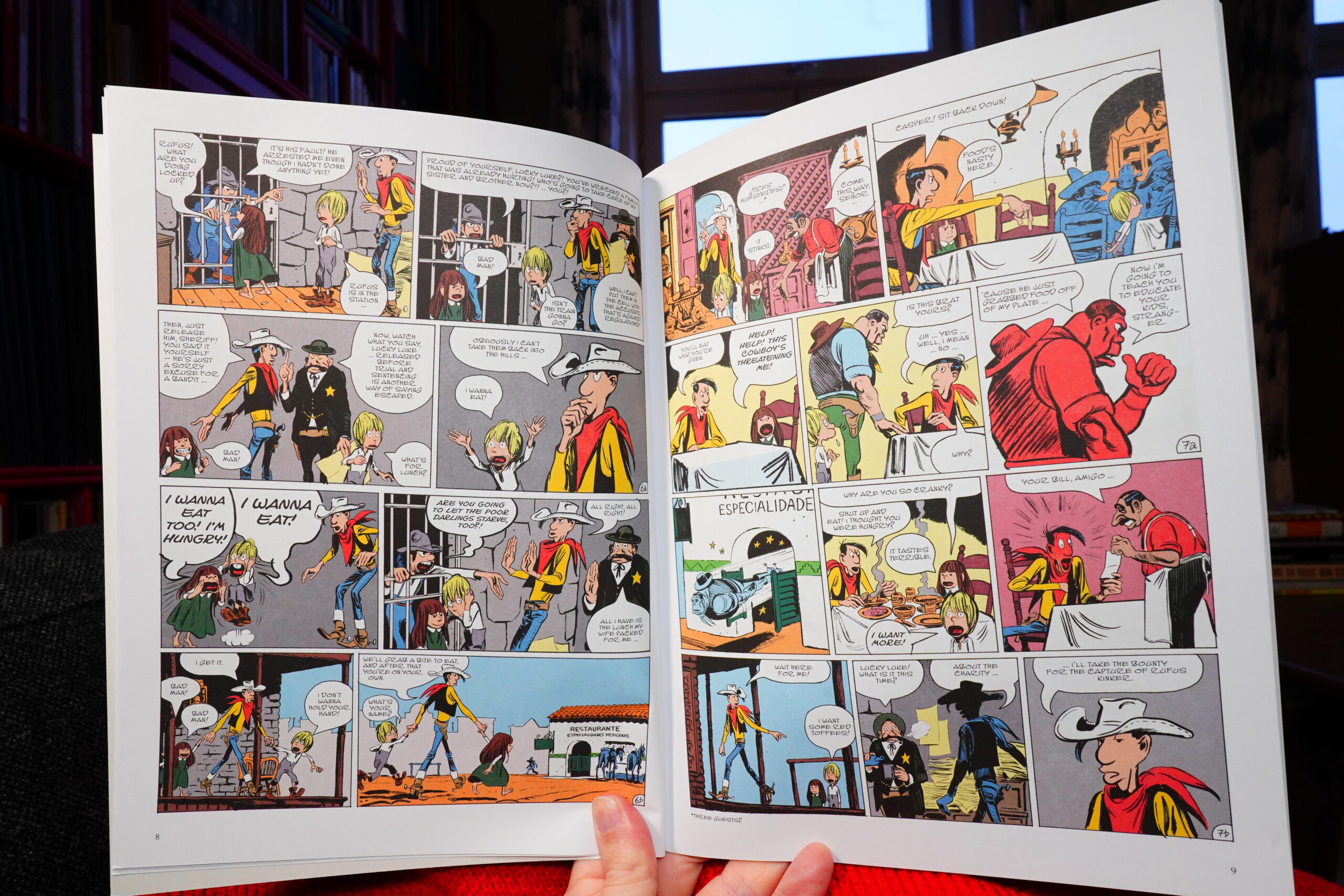
There’s been so many of these “special” versions of classic European kids comics… But this one if great! It’s a real homage — it’s got all the chaos and humour of a classic Lucky Luke story, but just one notch wilder.
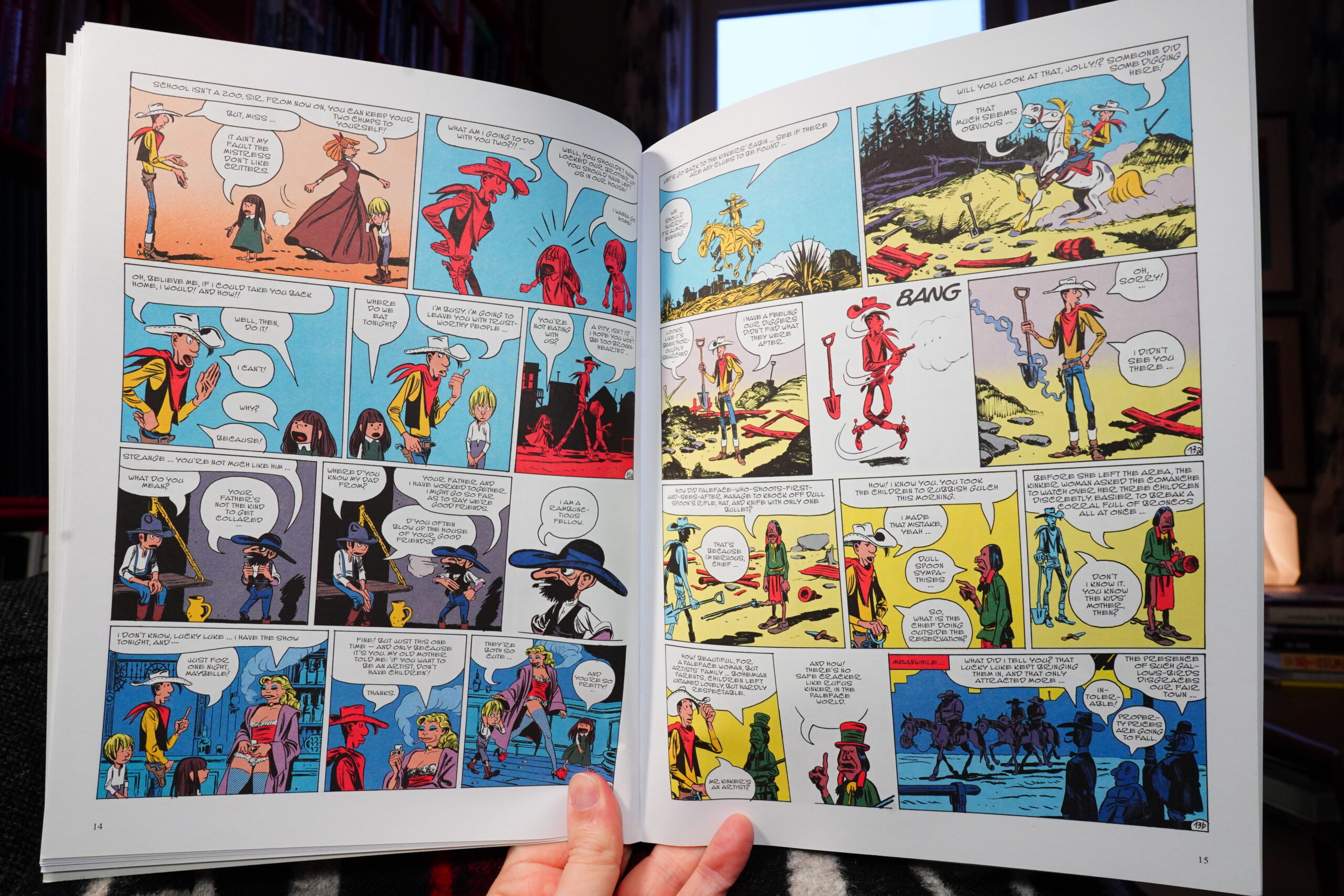
This is by far the best post-Goscinny Lucky Luke I’ve ever read — it’s funny, sure, but it’s also has a mysterious plot that really works. I’m feeling like a kid again reading this.
| Tuxedomoon: Desire | 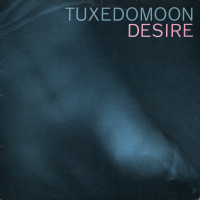 |
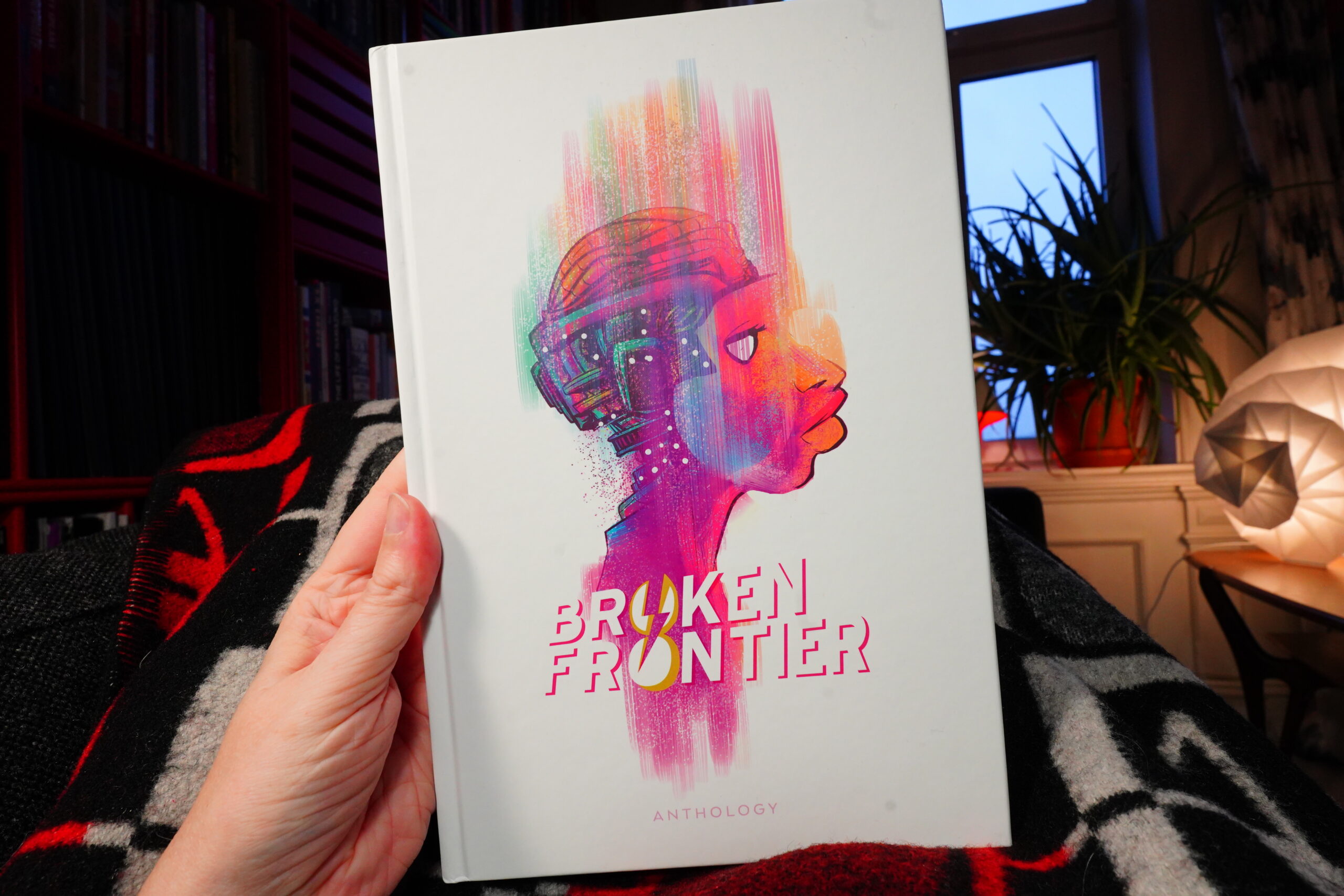
14:11: Broken Frontier edited by Frederik Hautain & Tyler Chin-Tanner
Oh, this is from 2016… I guess it was resolicited recently and that’s how I came to buy it? Oh, it was a Kickstarter thing, and I guess that’s why I’ve never seen it before. When you use Kickstarter, the book disappears off the face of the Earth after publication.
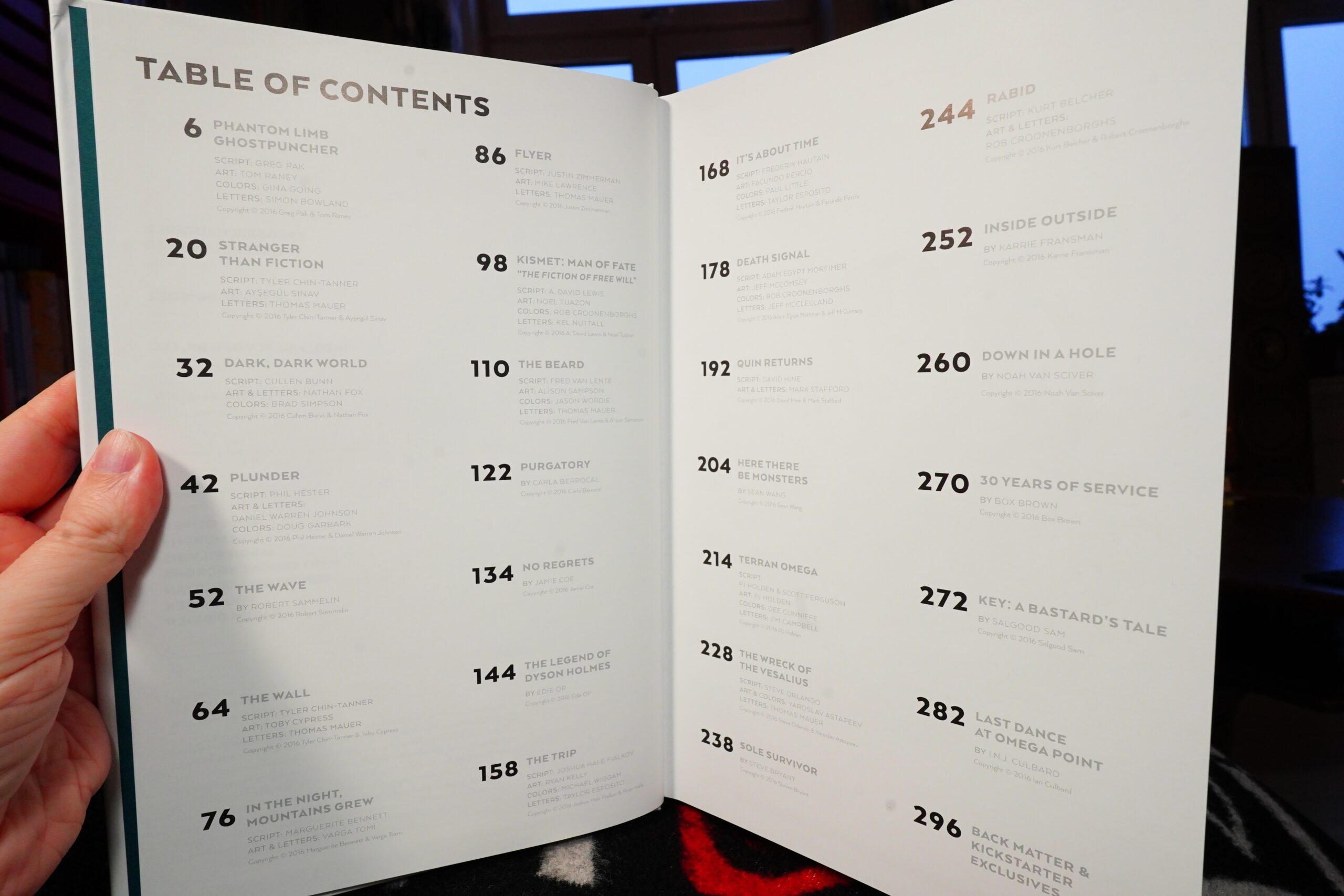
And Kickstarter anthologies usually suck, but let’s see.
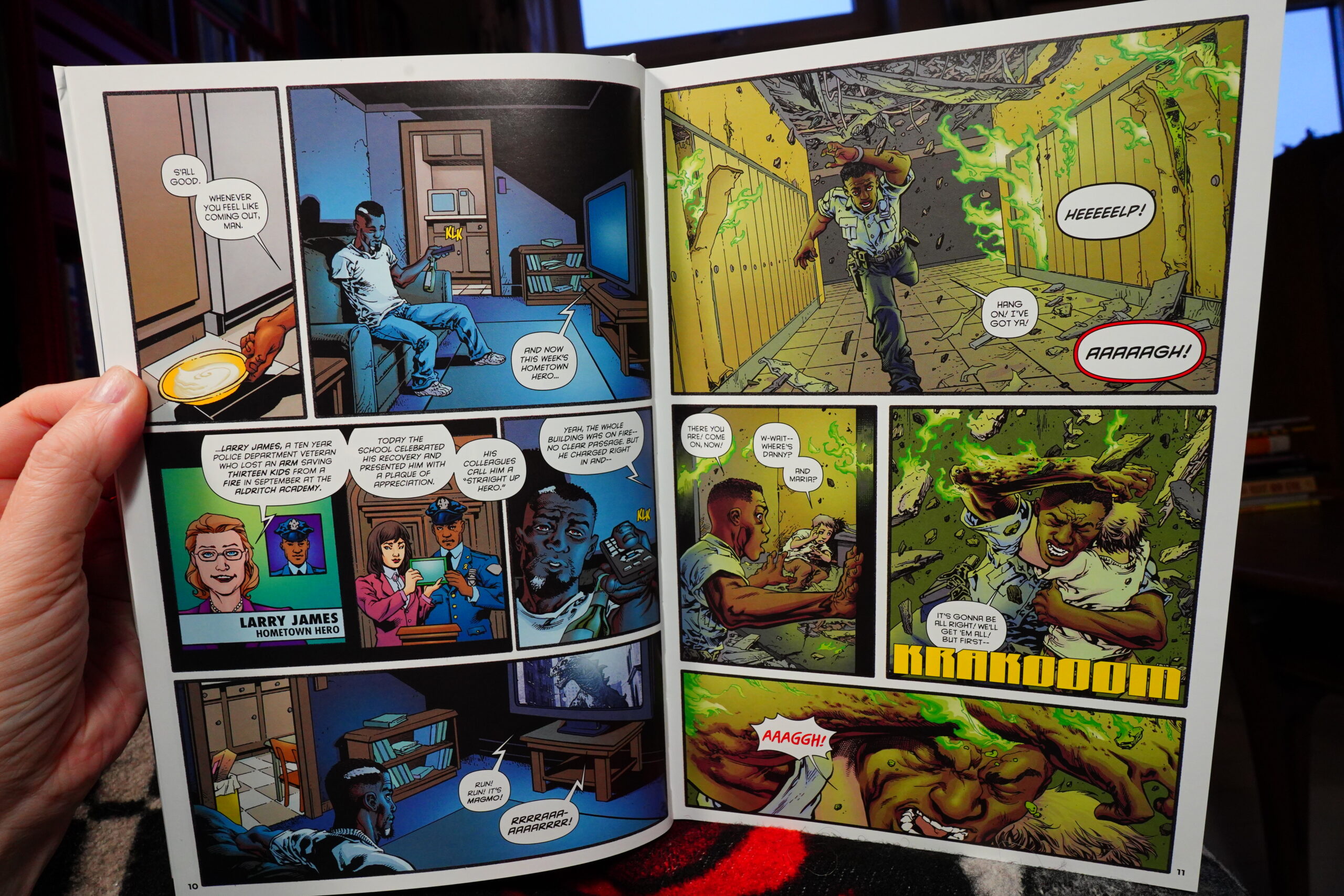
So many of these pieces read like pitches for a new series. It’s not that they’re all badly done (but many are), but they don’t feel like stories at all. And I must admit after suffering through a handful of these New Talent Showcase things, I started skimming, so perhaps I missed some awesome work (but I doubt it).
It’s awful when you lose faith in an anthology — you start going into each piece with an unconscious “well, should I read one or two pages before I ditch the story?” mindset.
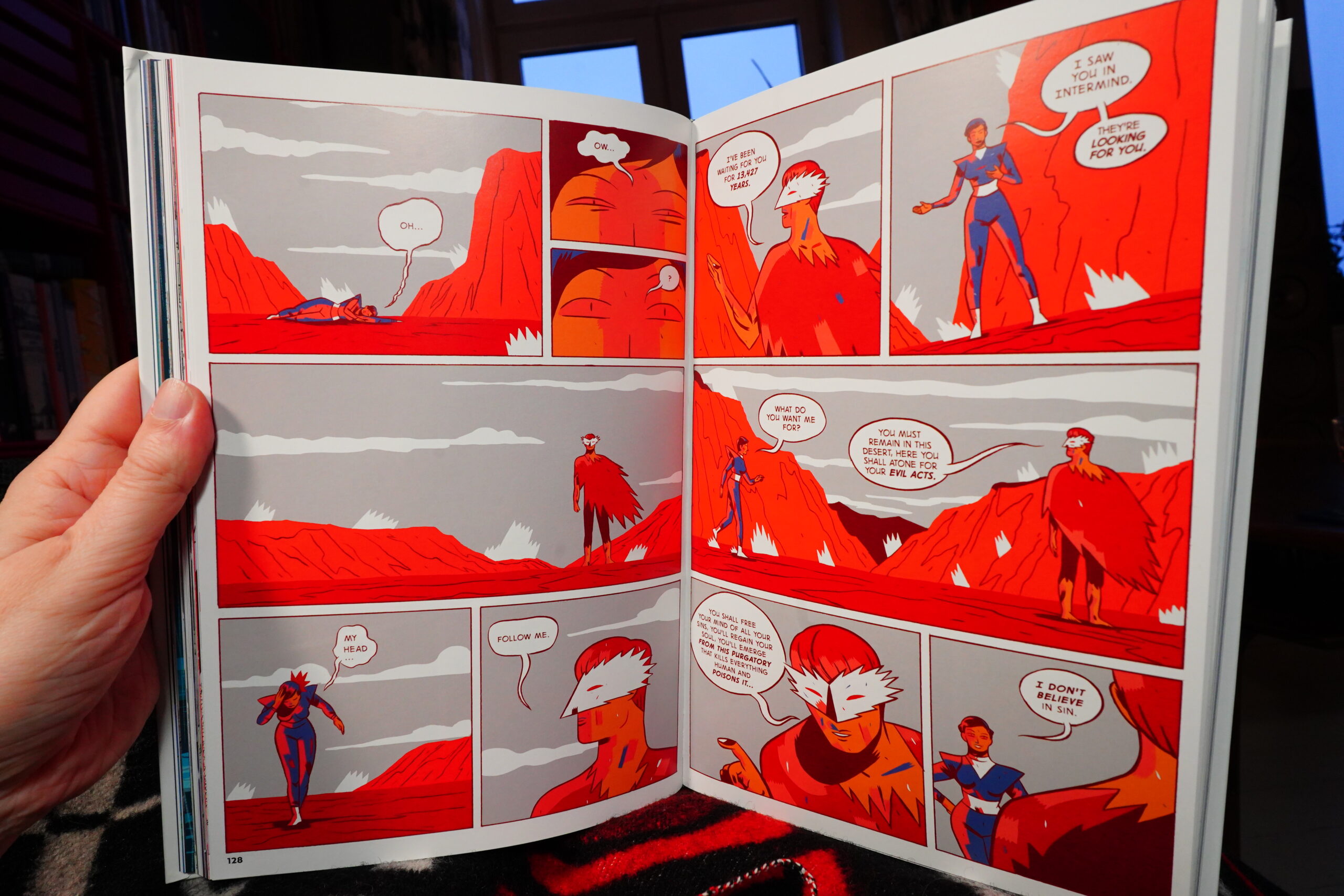
Some of the pieces look graphically interesting, but that’s basically it.

Oh, and there’s a pretty amusing Noah van Sciver thing in here, but even that’s probably his worst work.
These people have the audacity to charge $40 for this thing? It feels like they should be paying people to read it, really. Reading it feels like homework.
PW is more positive:
Overall, the level of visual artistry is high, but the writing and storytelling less so. Many pieces feel like a pitch for a series rather than a self-contained short story, and for an anthology about “breaking boundaries,” the plots are often conventional. As a sampler of contemporary Western comic artwork, it’s impressive to leaf through and sporadically entertaining to read, but as a fiction anthology it contains almost as many misses as hits.
15:00: The End
That book was so bad I’m going to call it a day. Er. Or a night? Something. I’m gonna go study French instead.



